I’m visiting in-laws in Florida for the holidays, and unlike last time I was here, which was migration season, it’s now the dry season, which brings a host of different birds. The family lives very close to a nature preserve, which is super convenient for me–just walk out the door, and there are the birds!
New Waterbirds
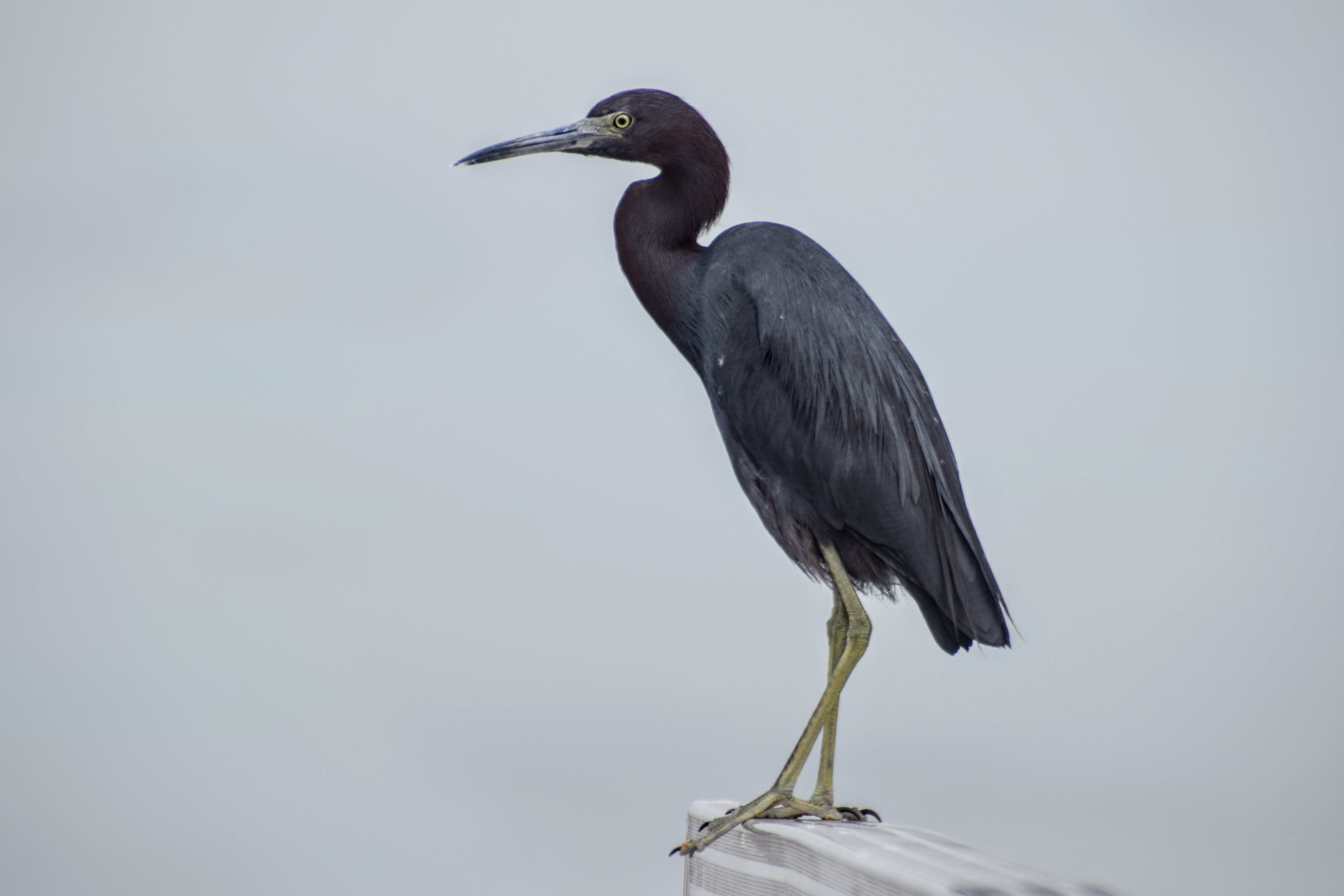
Last time I was in Florida, I saw quite a few Green Herons, but over on the west side of the peninsula they have other types. Here’s a Little Blue Heron, which is actually more closely related to the Snowy Egret than to the Green Heron. Apparently juvenile Little Blue Herons are white, showing the family resemblance.
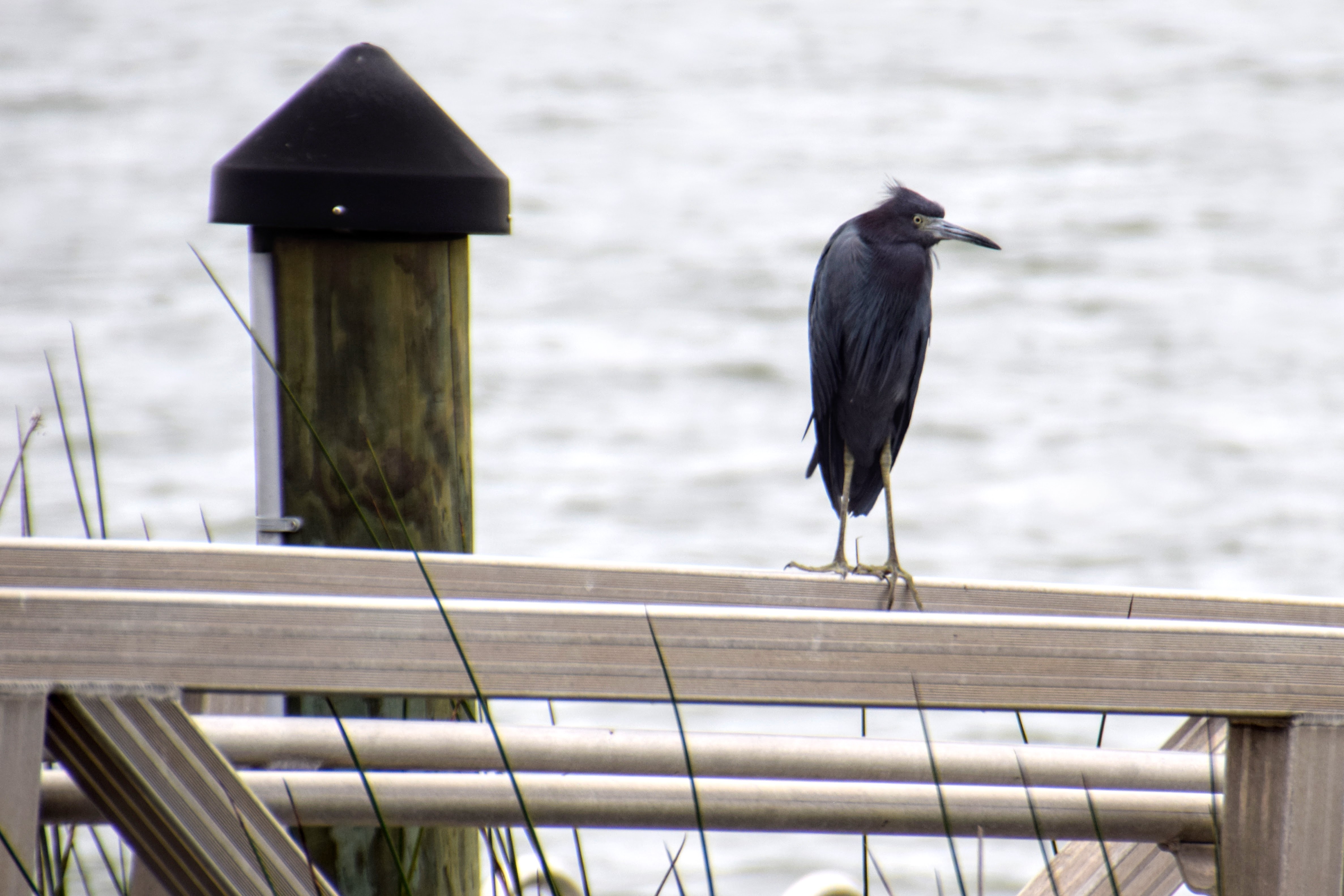
The first few days I was in Florida, the weather was balmy and humid. The second half of the trip, it was chilly. This bird looks like he’s got his coat pulled up around his neck.
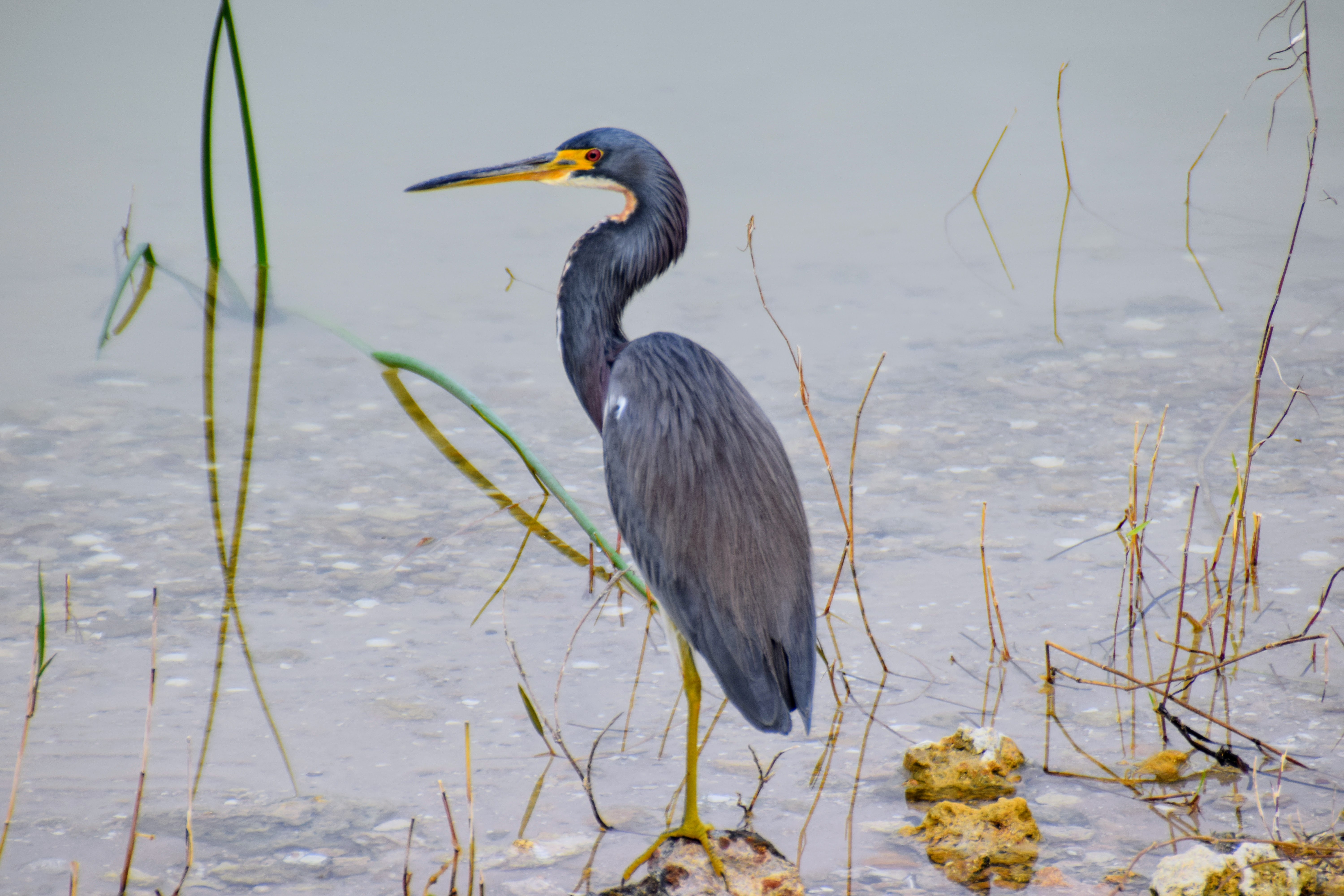
This is the other common heron in this area, the Tricolored Heron. These birds are able to walk through deep water very quickly due to their skinny legs.
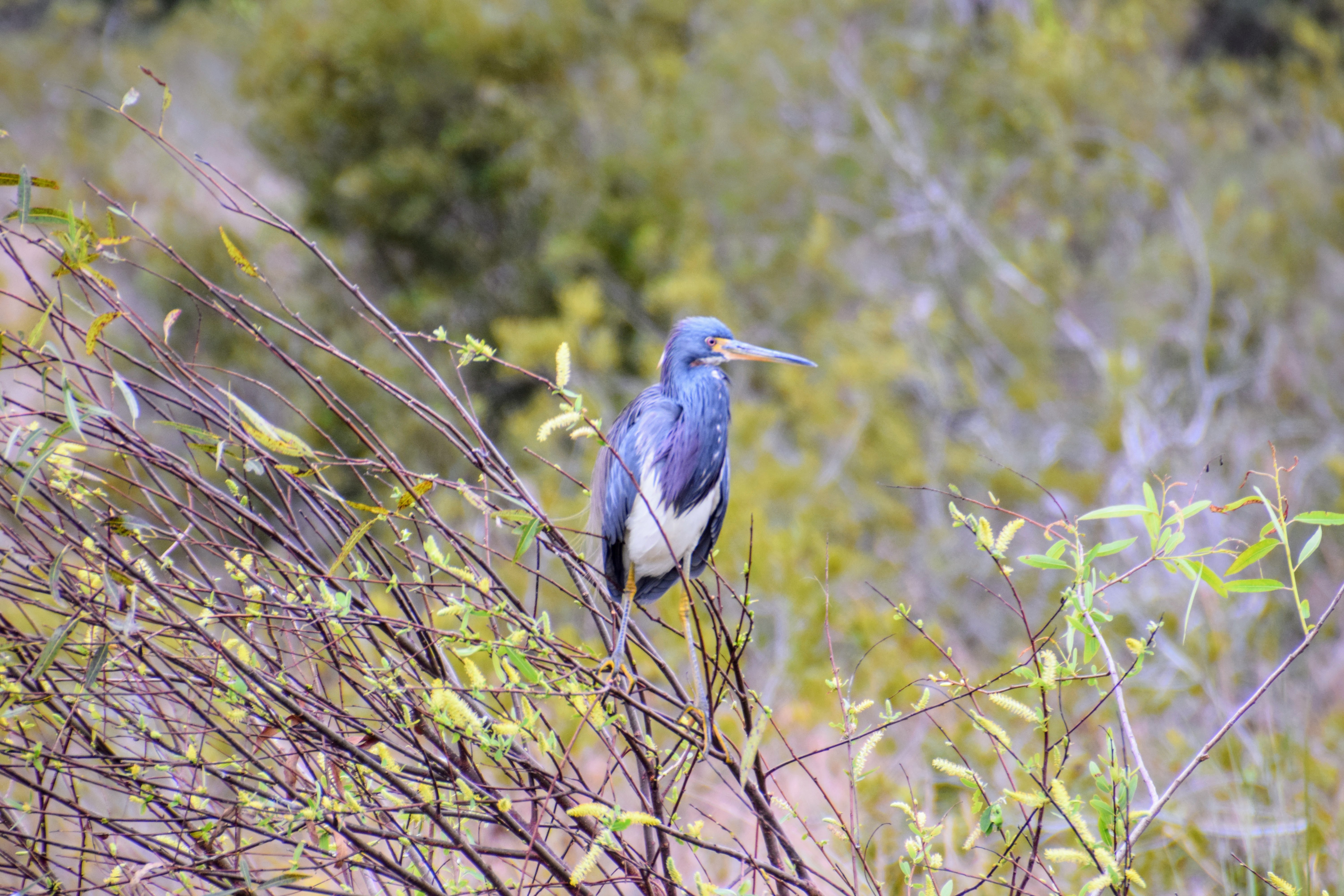
The Tricolored Heron has a white belly, while the Little Blue doesn’t.

This is a Cattle Egret, so called because they are often found on or near cows, eating the bugs the cows stir up when they move. Sometimes there’s one bird per cow! This one seemed very comfortable with people and let us get pretty close.
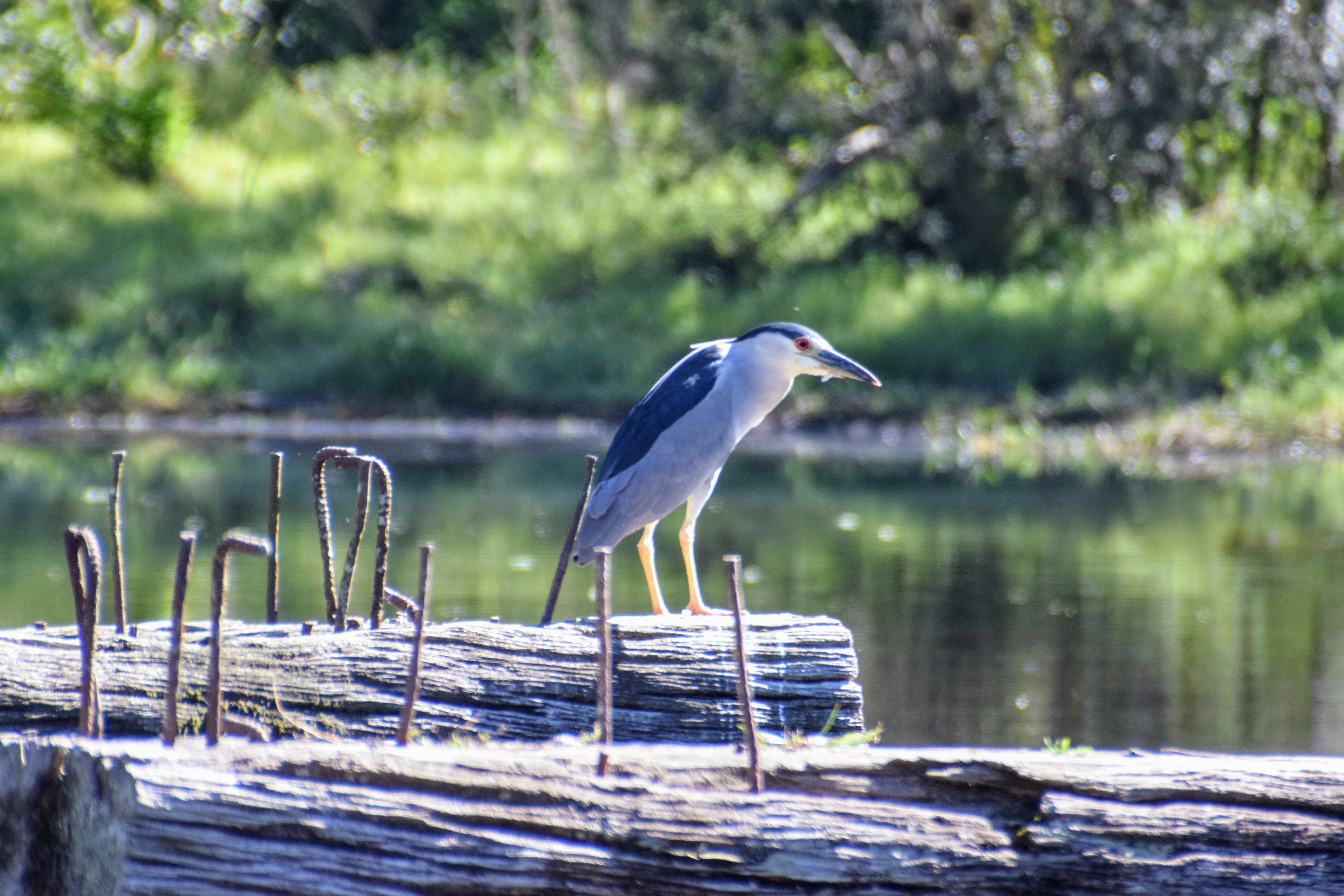
This is a Black-Crowned Night Heron. These are quite common in California, but I’ve only been able to get bad pictures of them so far because they’re very secretive and most active at night.
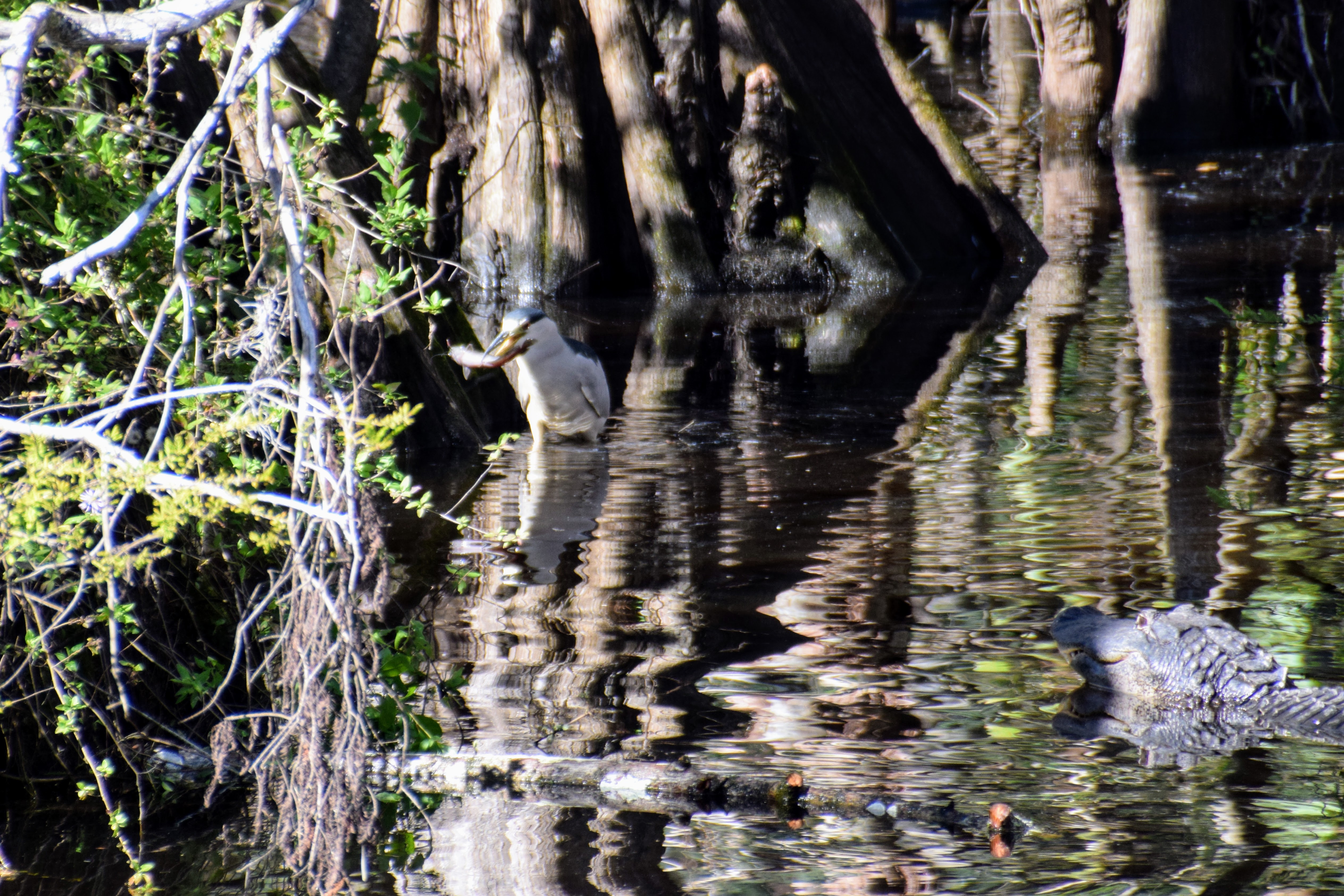
This one caught an enormous catfish, and was debating whether or not it could swallow it. An alligator nearby looks like it’s eyeing the fish too.
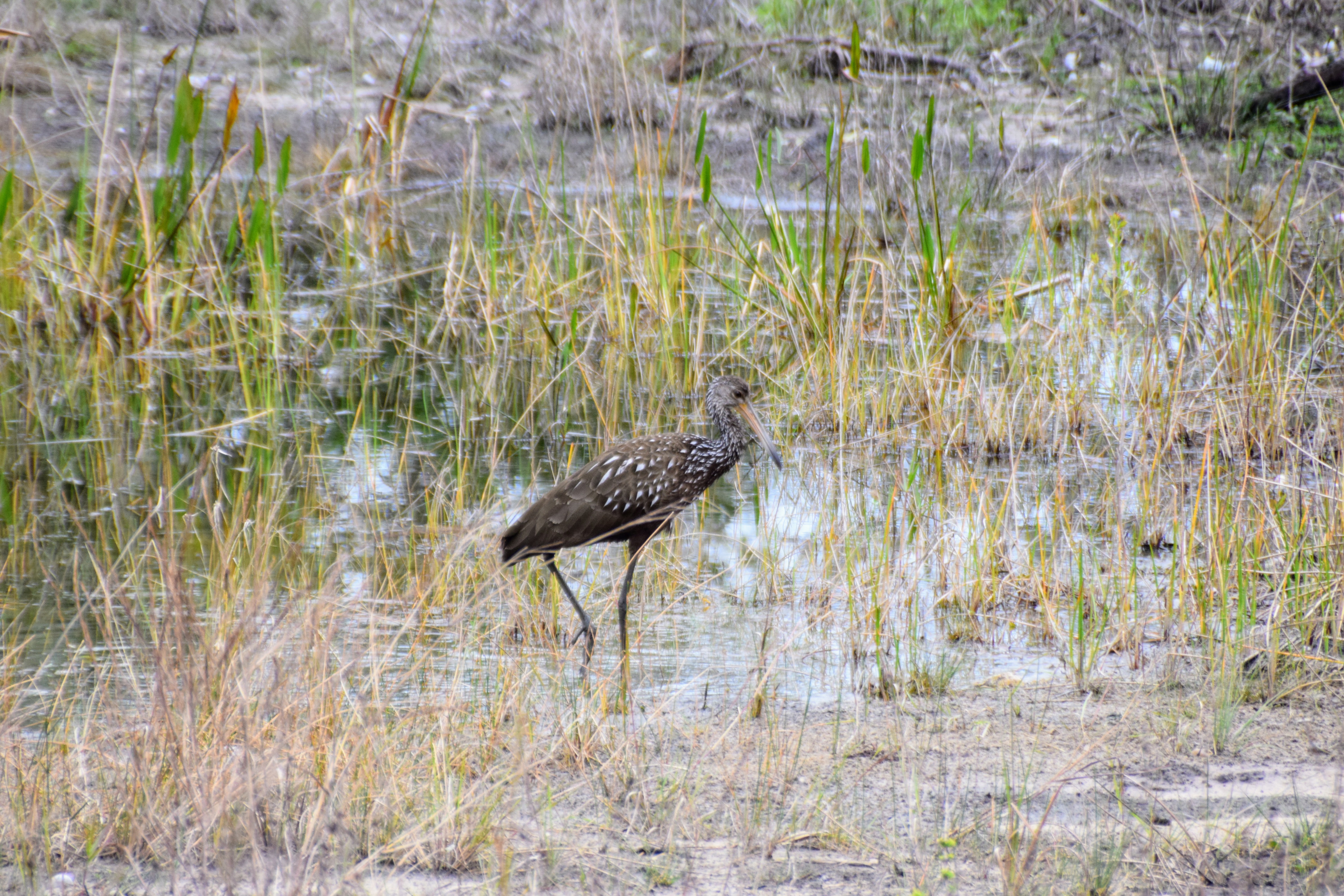
This large bird is called a Limpkin, because apparently it looks limp when it walks? (I don’t see it.)
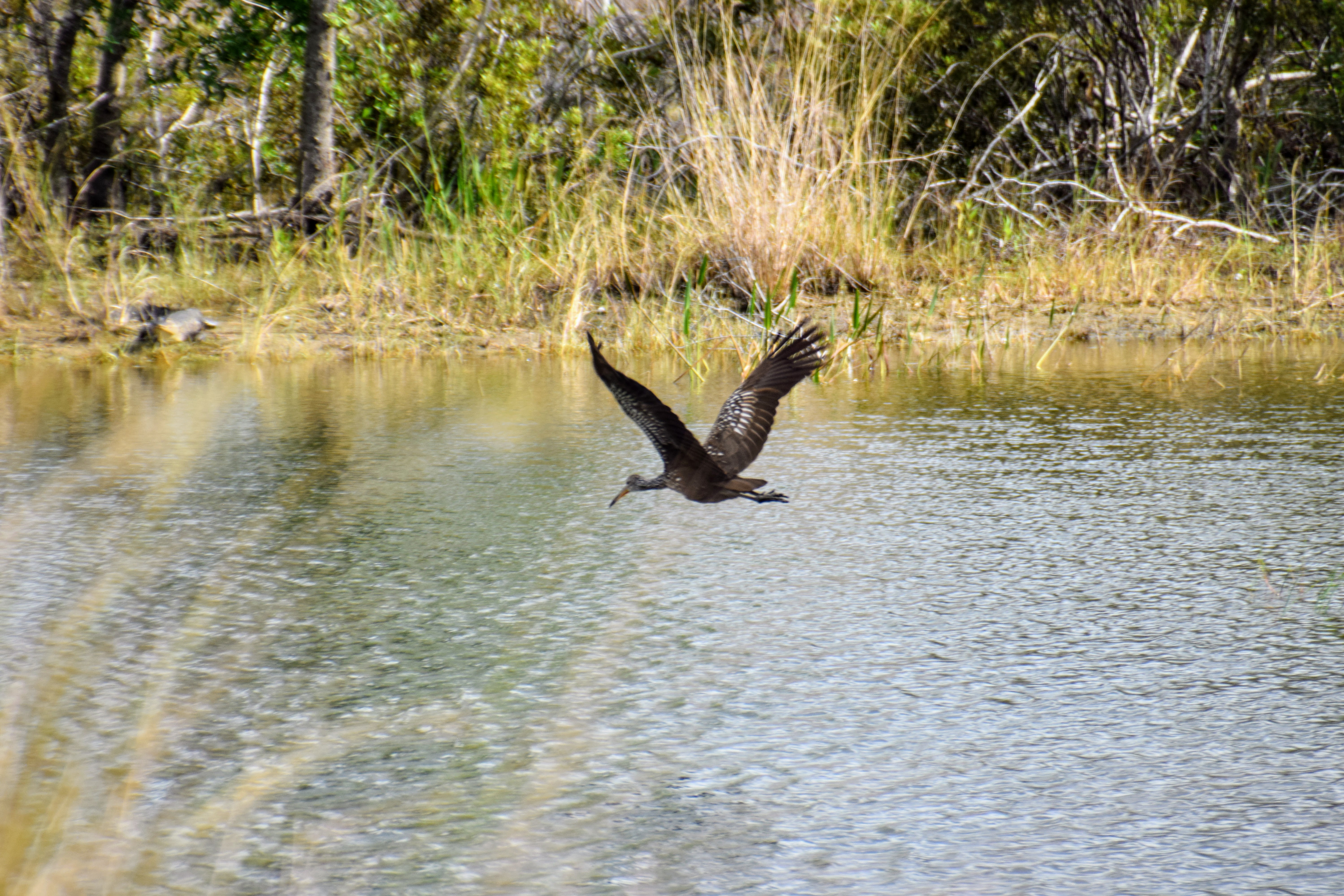
While it looks kind of like a heron, it’s in the crane family, which is more closely related to gulls than to herons.
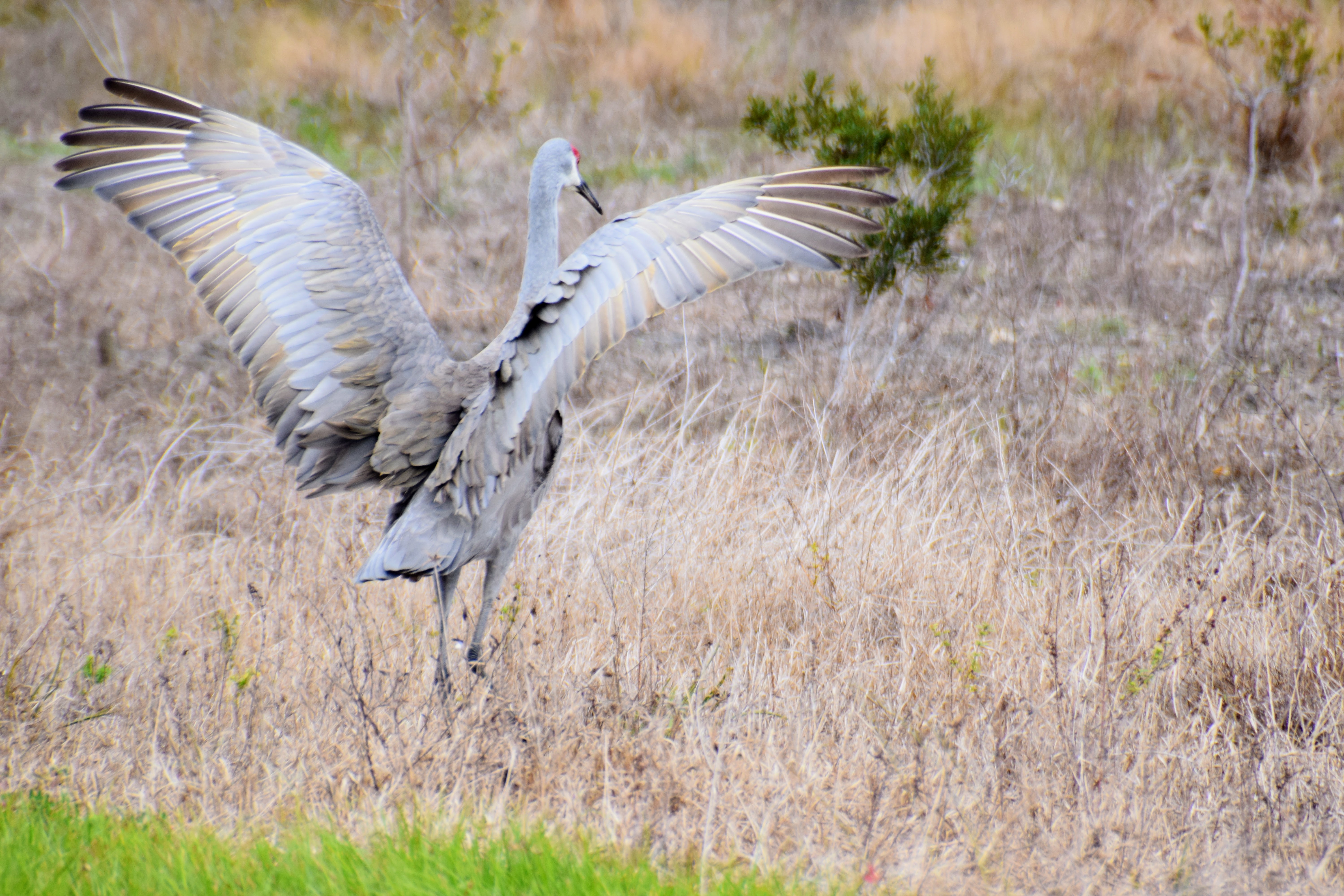
This is a Sandhill Crane, a huge bird that makes long and noticeable migrations across the United States. Florida is an important stopping point for them and many other migrants.
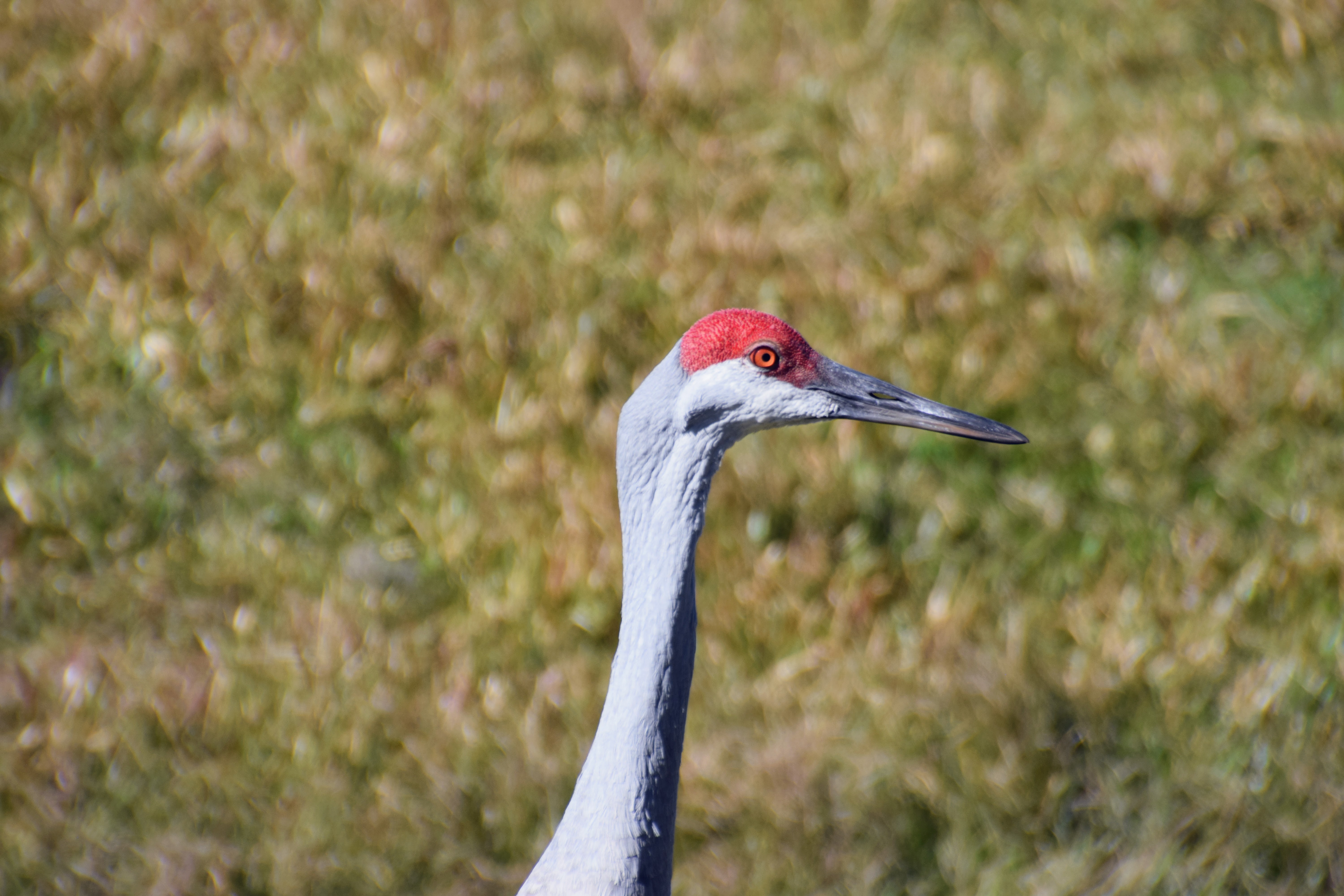
Though they stand five feet tall, they weigh less than ten pounds. Look, you can see straight through his nostril and out the other side.
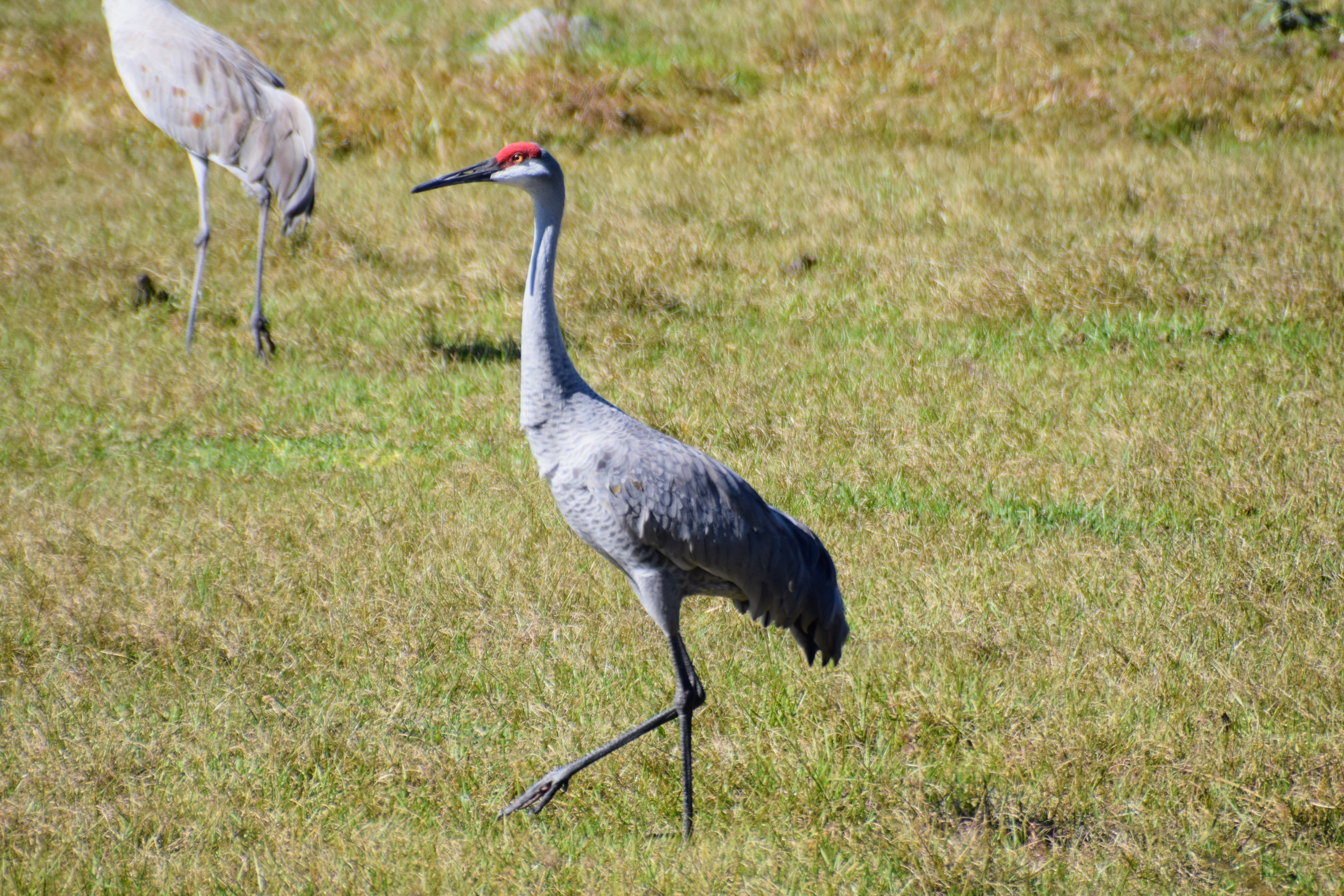
The noises they make are very alien-sounding.

This is an Osprey, a type of fish-eating hawk. They live everywhere in the world, and are the only species in their family.
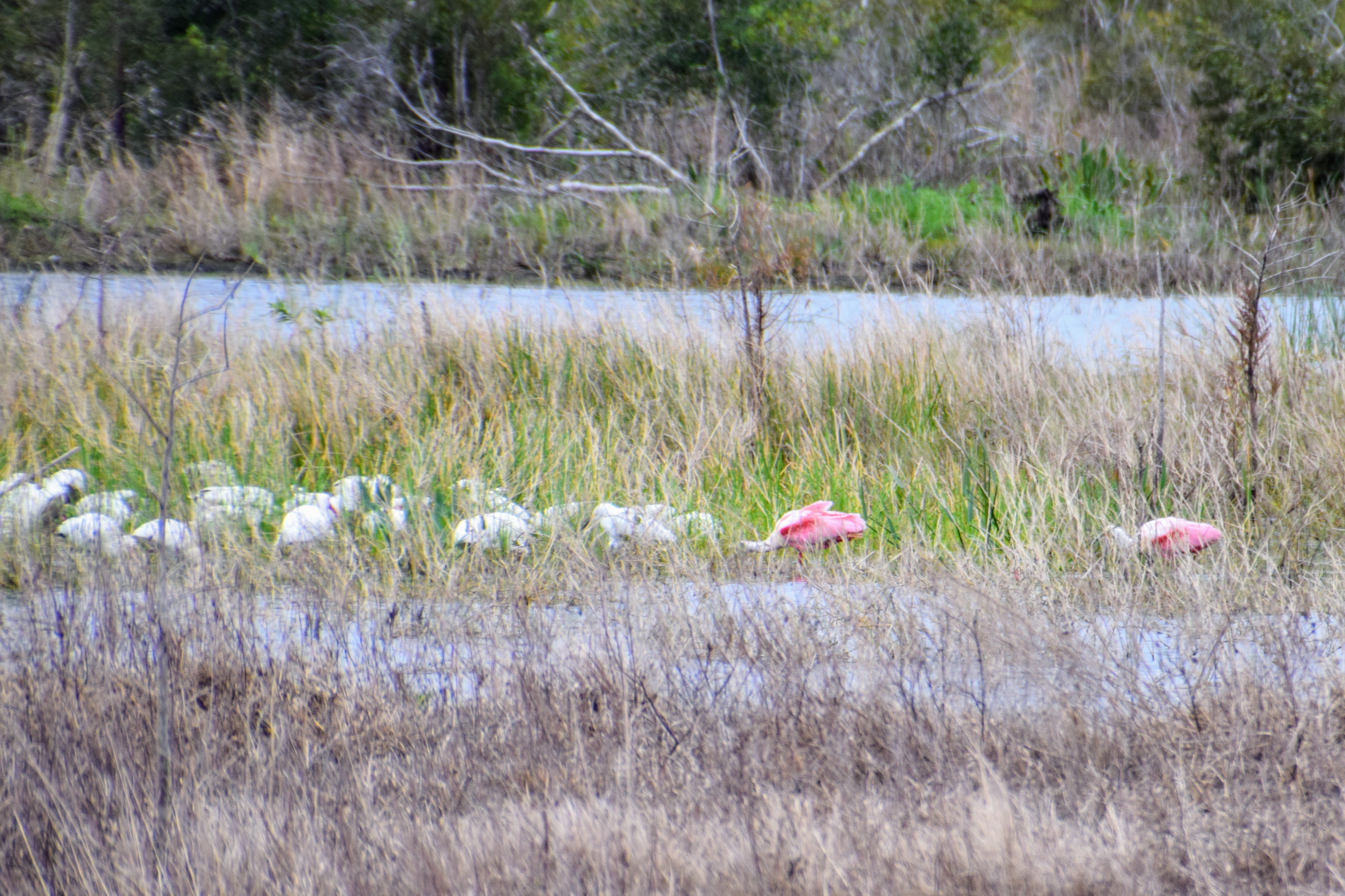
These are Roseate Spoonbills, a kind of discount flamingo. This was the first time I’ve seen them in the wild (I had a picture of one in my last post, but it was in an aviary). These two were foraging in a big mixed flock with Little Blue Herons, Great Egrets, and American White Ibises.
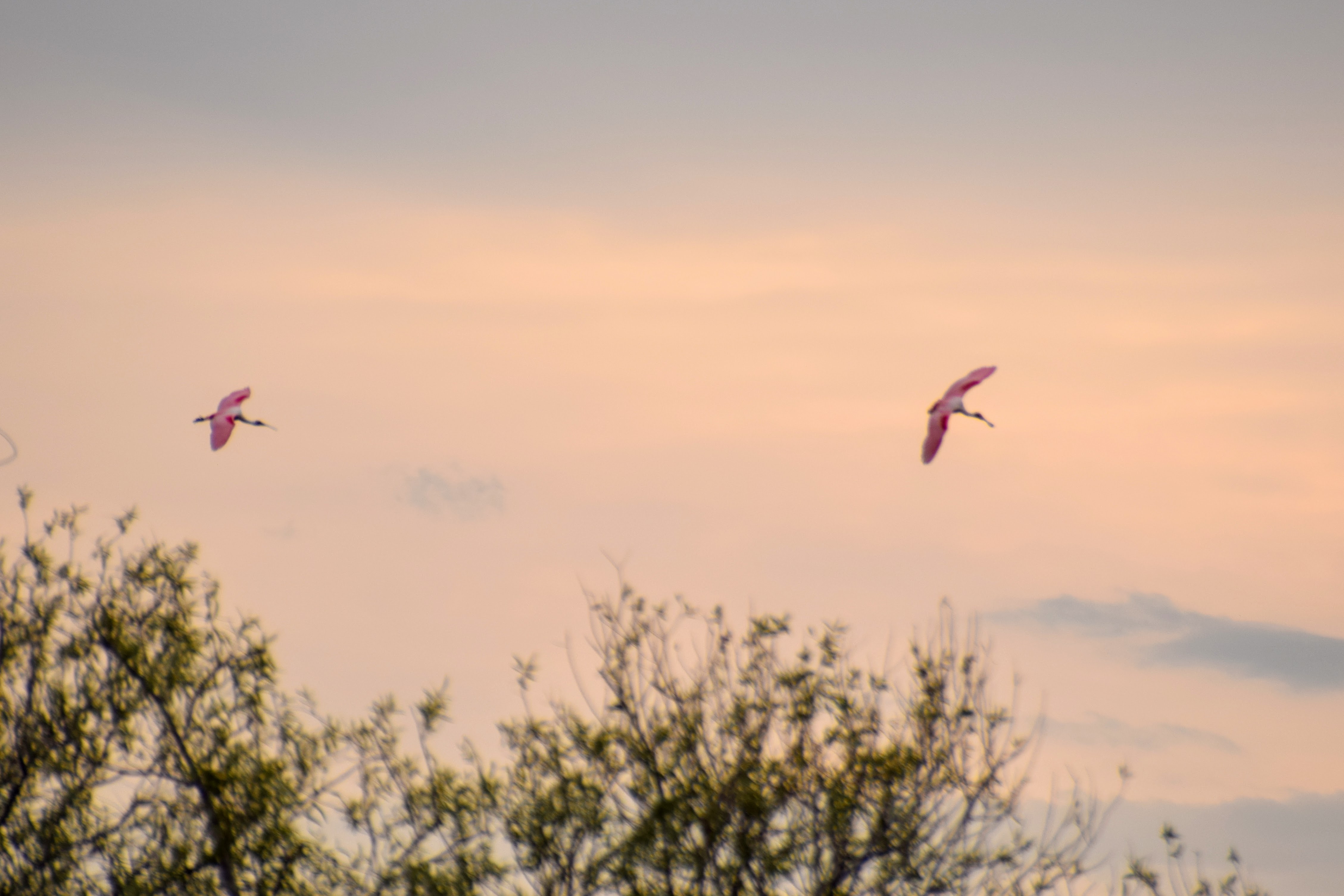
I think I was lucky to see these, because according to Merlin, the birding app, they’re uncommon for this location and time of year.
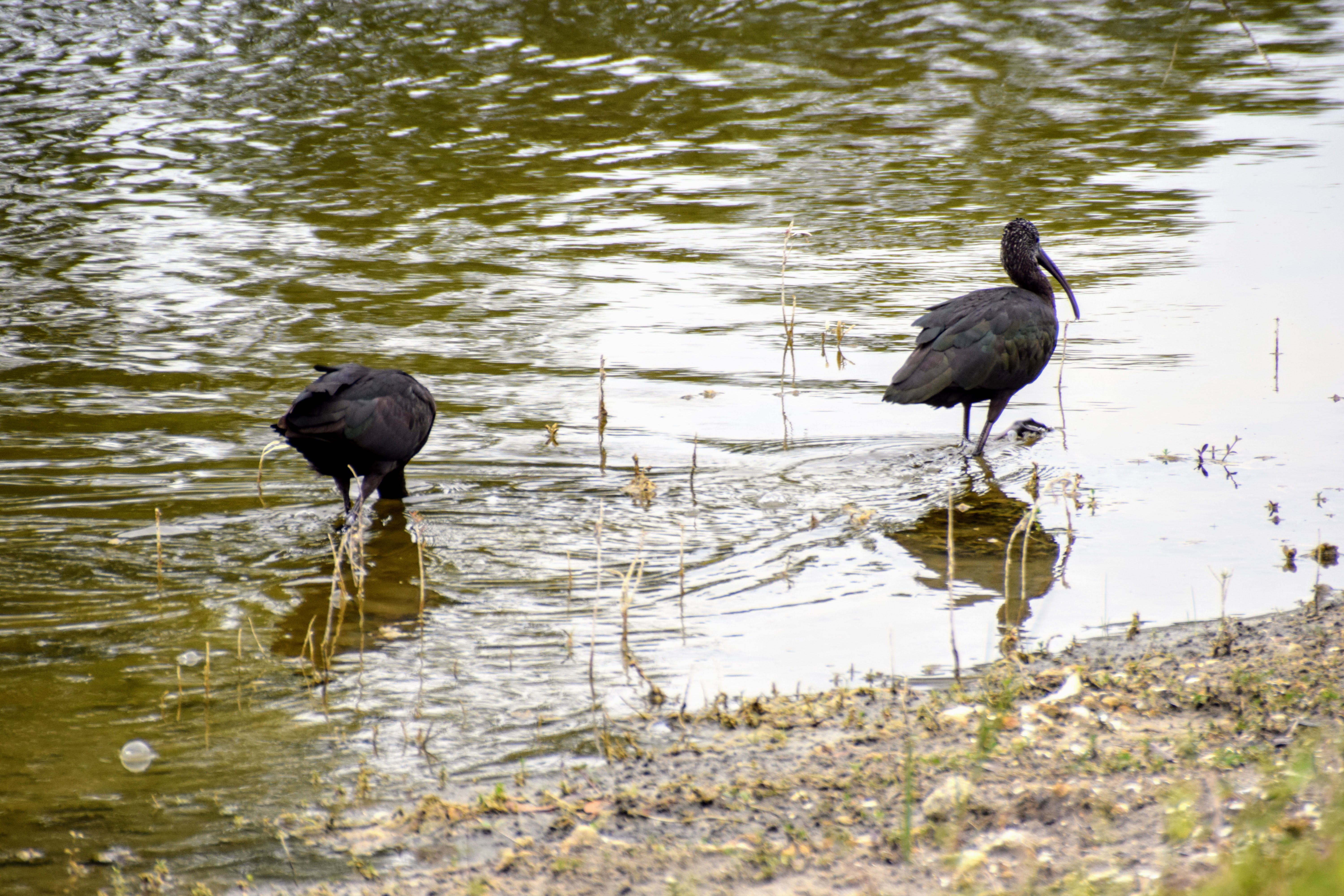
This is a Glossy Ibis, a smaller and less common relative of the White Ibis. Ibises are in the family containing herons and egrets.
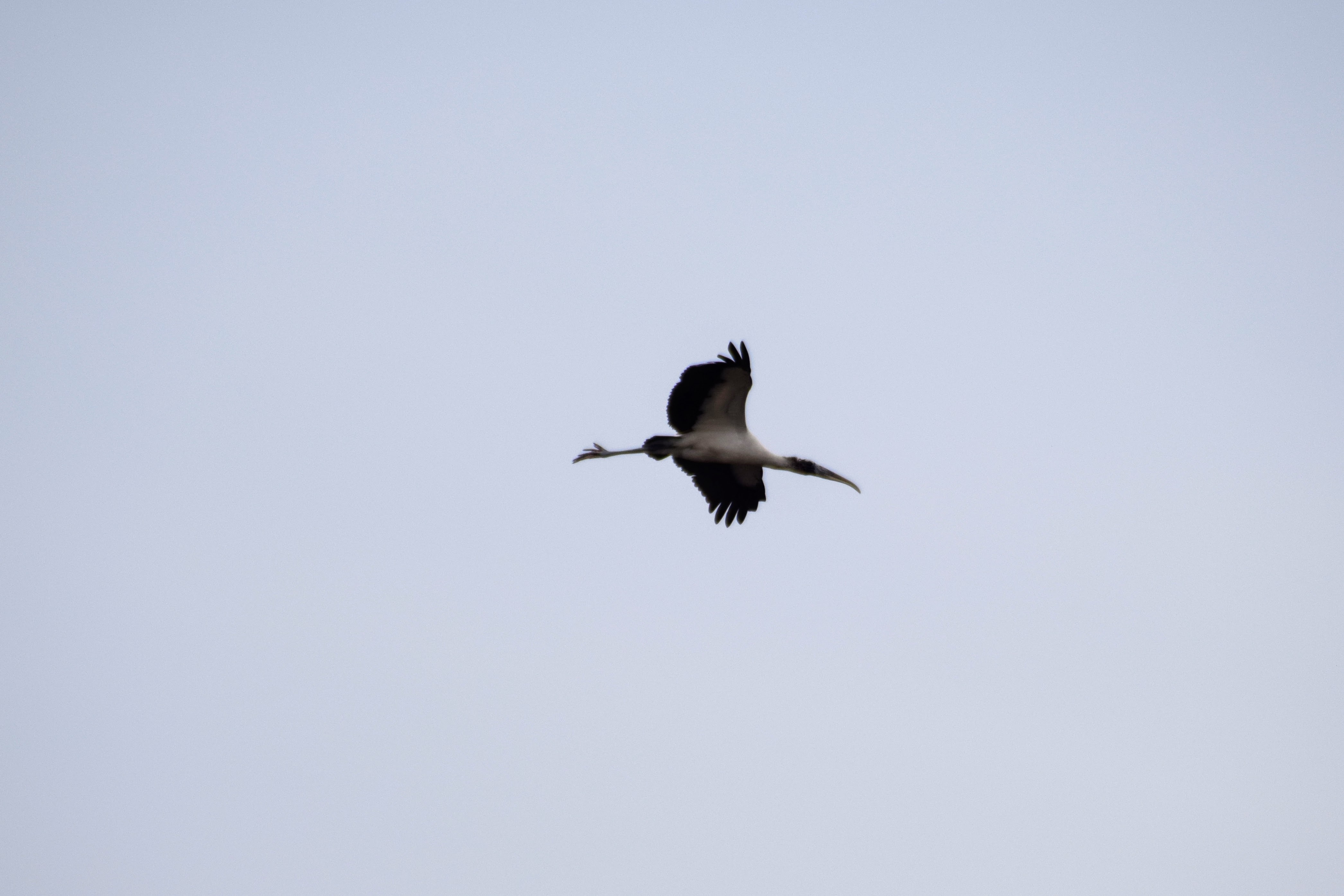
This ibis-like bird is a Wood Stork. It’s much larger and has an ugly, vulture-like bald head. It’s the only North American stork.
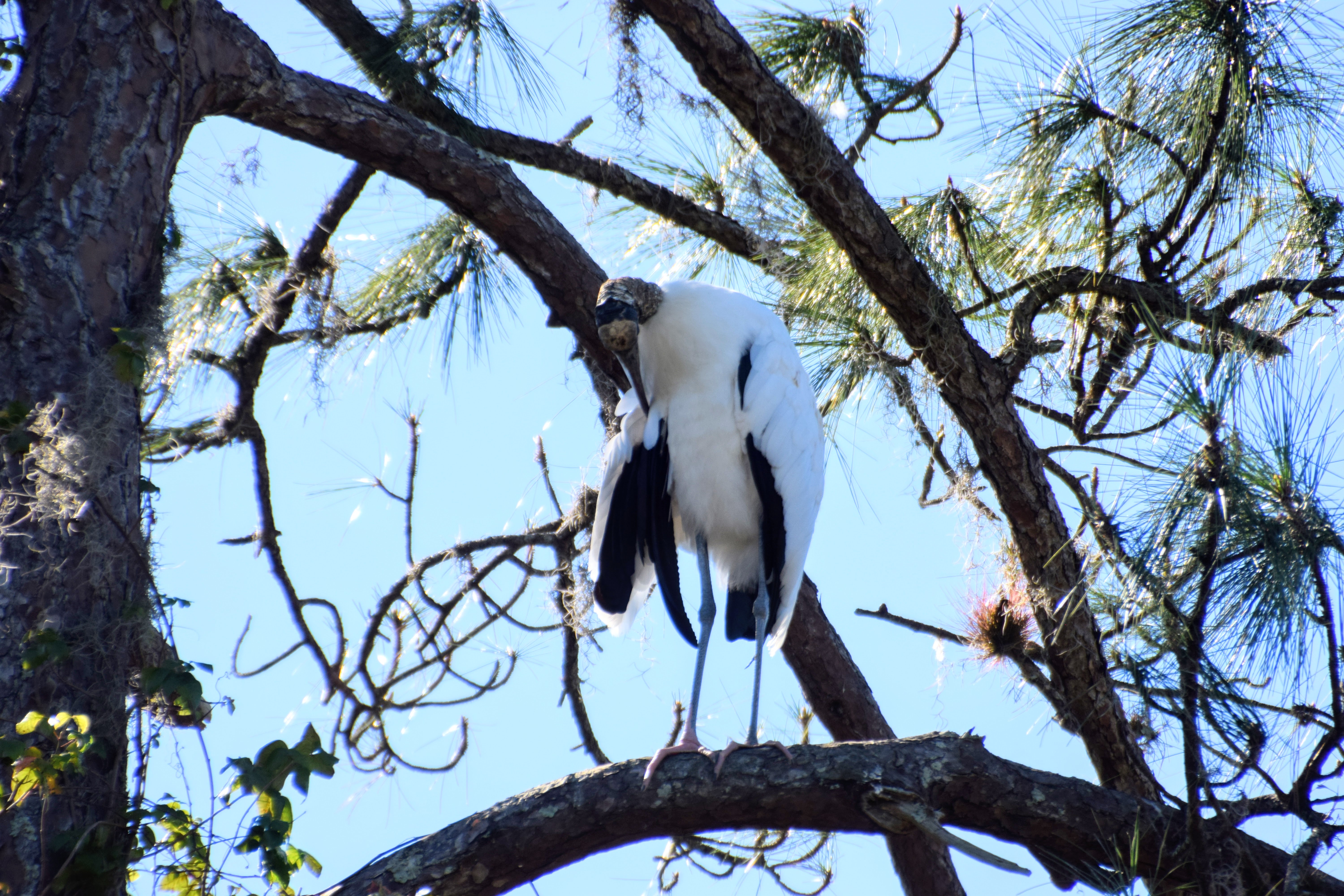
His head is shaped and colored very similarly to a tree branch. Maybe that’s on purpose?
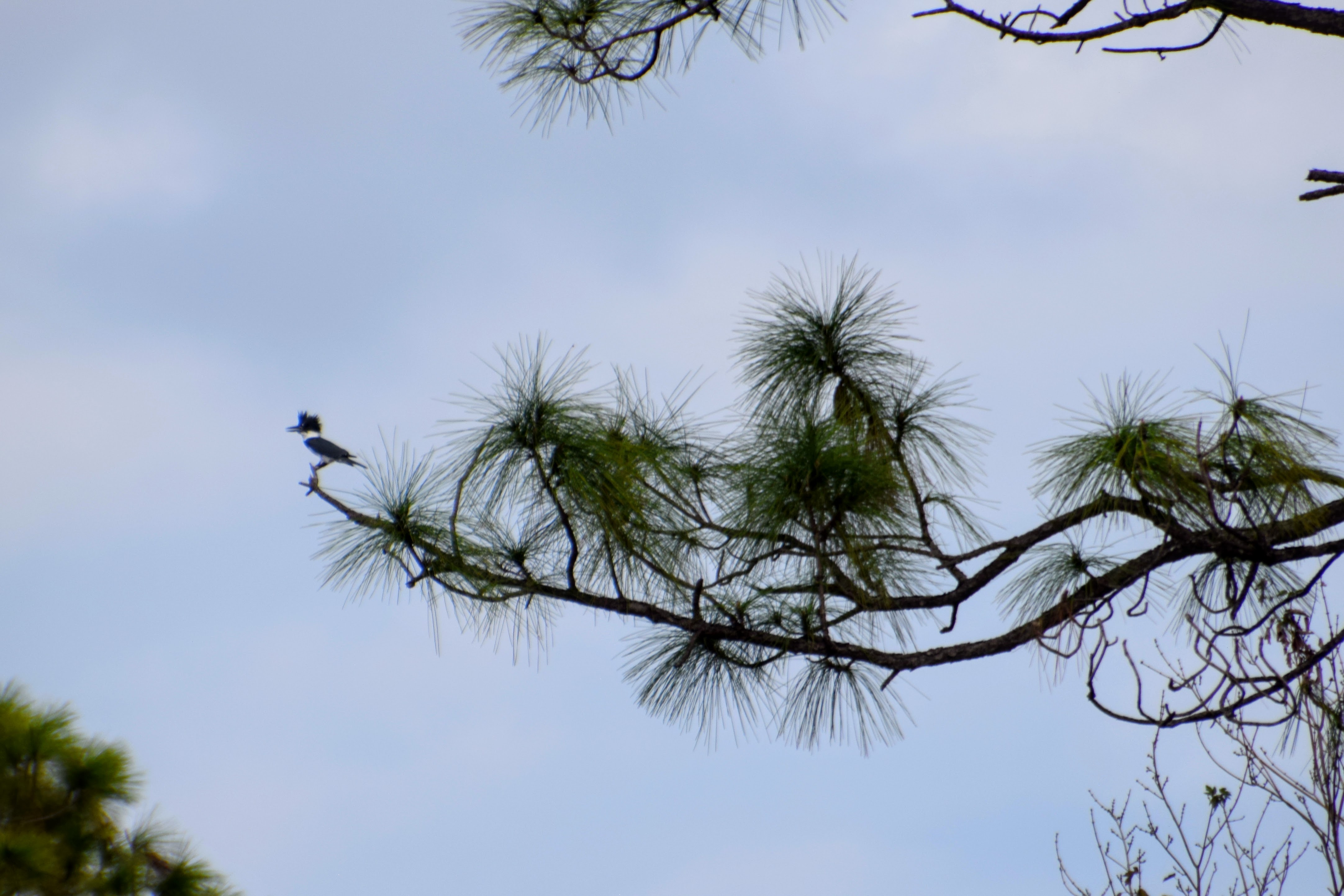
This is the first photo I’ve ever been able to get of any kind of kingfisher, in this case a Belted Kingfisher. He made distinctive noises while flying, and often perched on prominent branches, but never got very close. (It’s a bad idea to stray from the path here for fear of encountering alligators.)
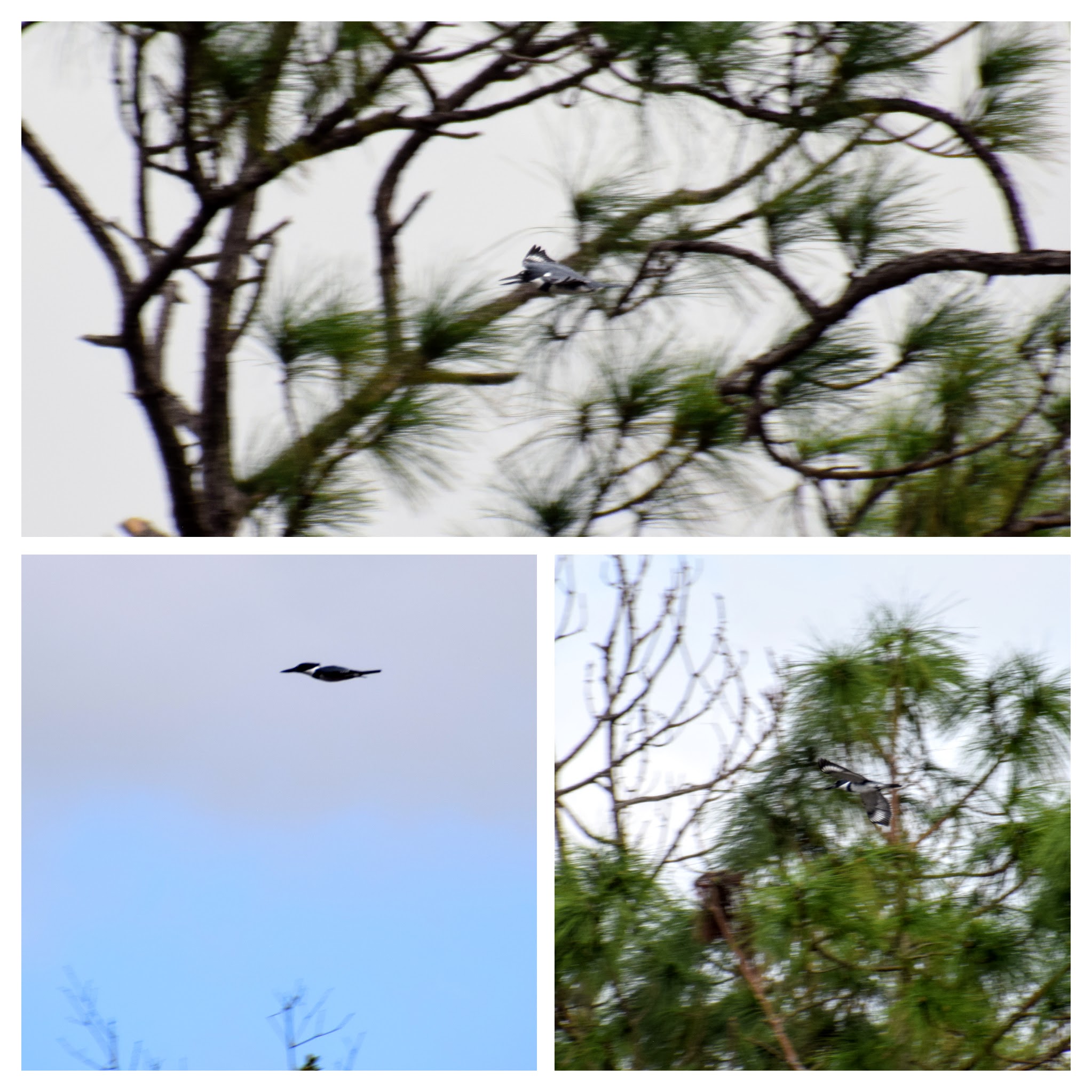
This one individual was often flying around and making noise. I saw the same guy many times over the few days I walked by his habitat.
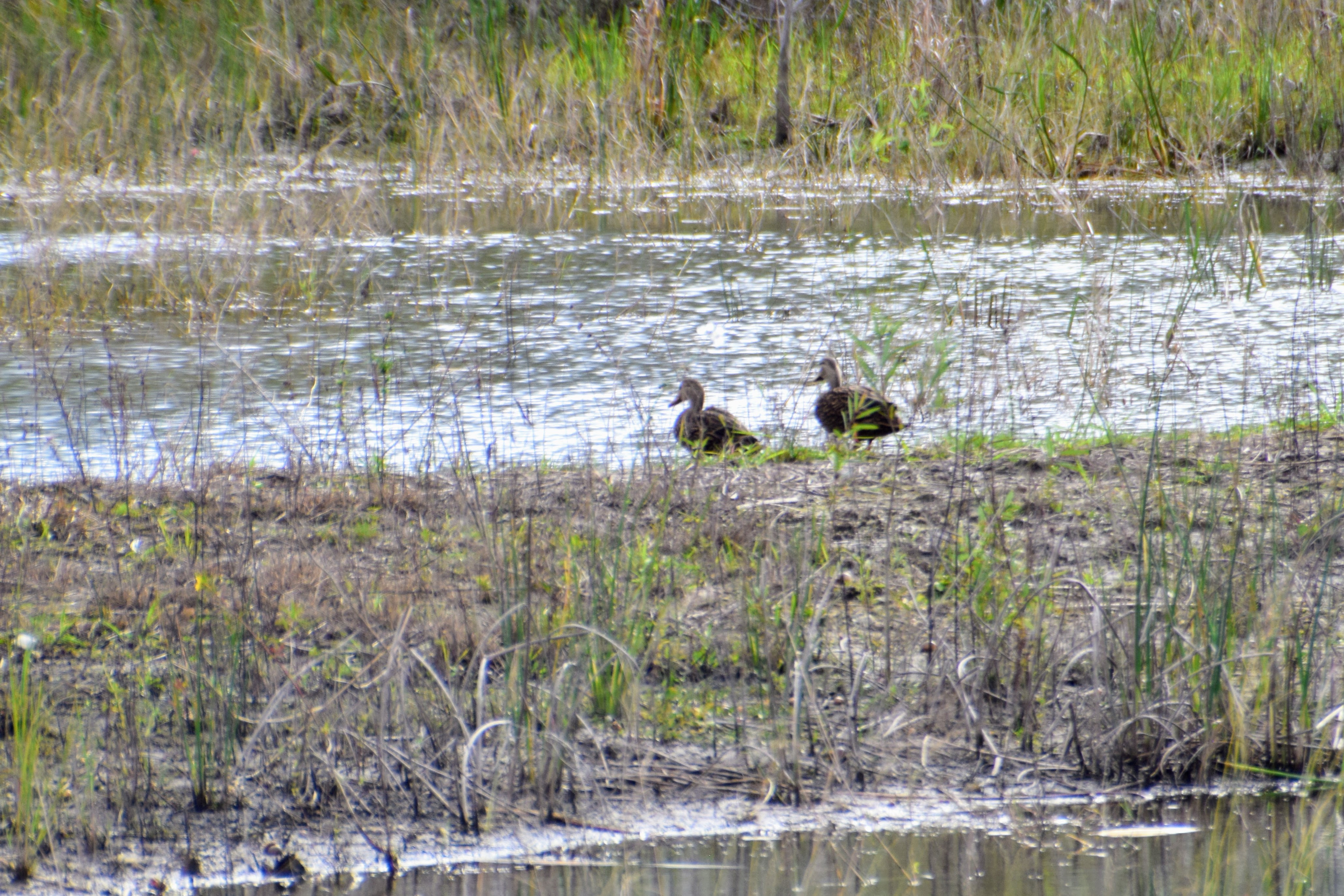
These are Mottled Ducks, a close relative of the Mallard. When I took this picture, I thought they were Mallards, and didn’t try very hard to get a good shot.
In addition to the birds I was able to get pictures of, we also saw some flocks of Wilson’s Snipes and got a glimpse of a single American Bittern. The Wilson’s Snipes were so short that I couldn’t see them over the grass, and when they took off they moved too fast for me to get a picture. The Bittern is by nature very secretive, and blends into the reeds incredibly well. The only reason I saw it at all was because it was moving, but when it noticed me lift my camera it stopped moving and disappeared among the reeds. Both snipes and bitterns are famous for their ridiculous eyeball placement: snipes’ eyes are so far back on their skulls that they can see all around, behind, and above them without moving their heads, while bitterns’ eyes are nearly on the underside of their skulls so that they can look forward while their bill is pointed at the sky in their reed-mimicking posture.
Landbirds
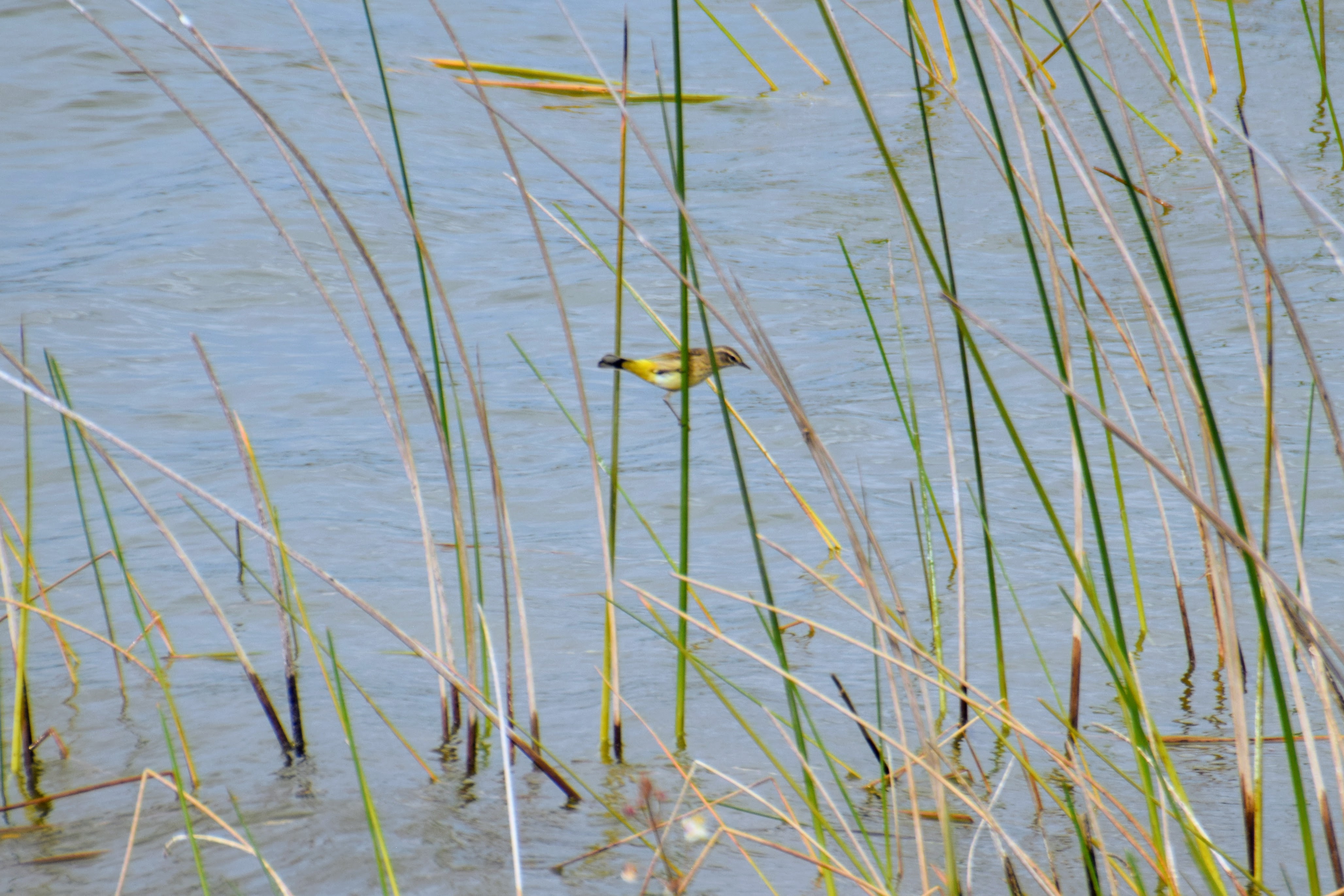
There were lots of Palm Warblers all over, both in the wetlands perching on the reeds, and in the town scavenging for leftovers.
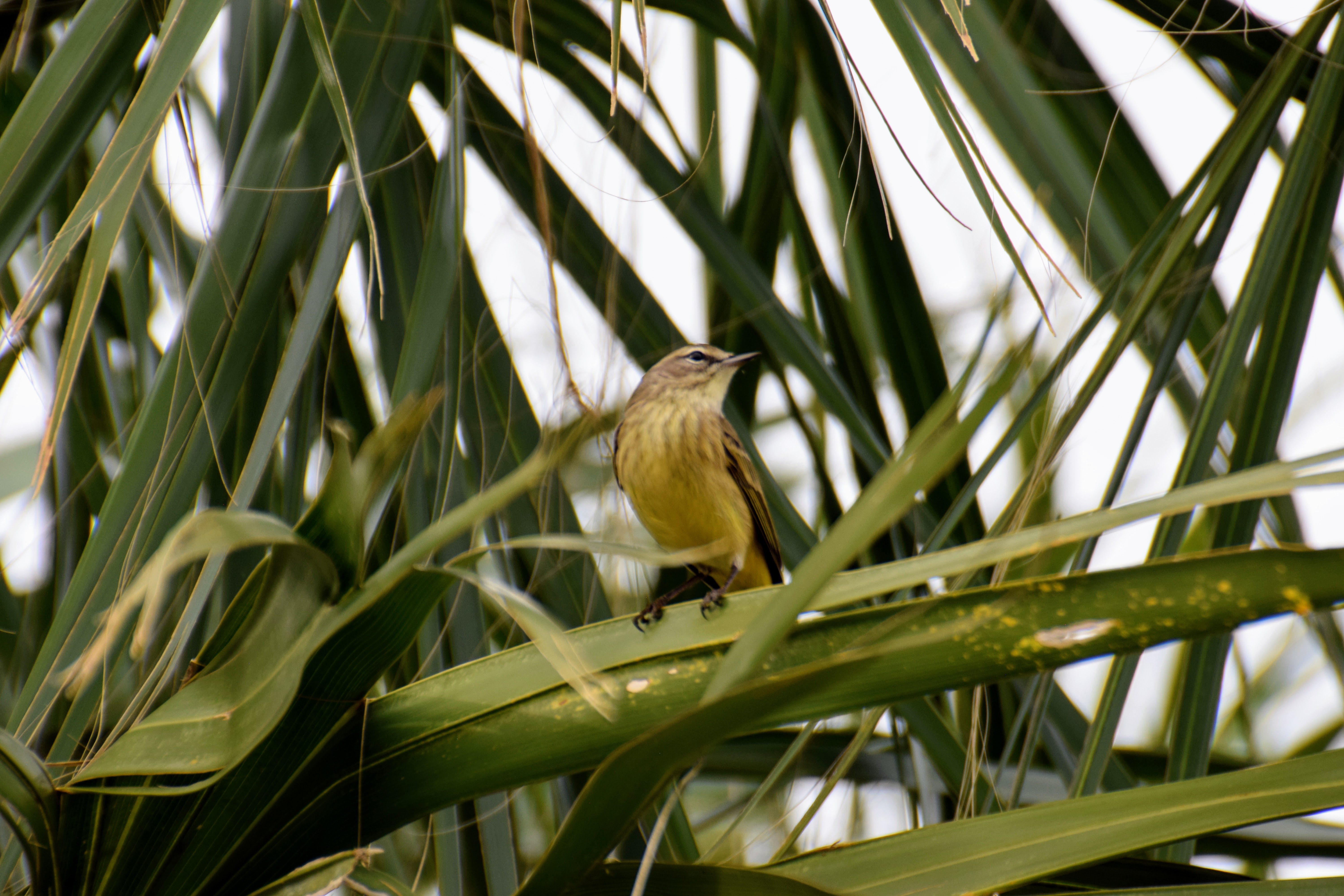
As far as I could tell, this was the only kind of warbler around. It’s definitely possible that there were Pine Warblers as well, but that I missed them.
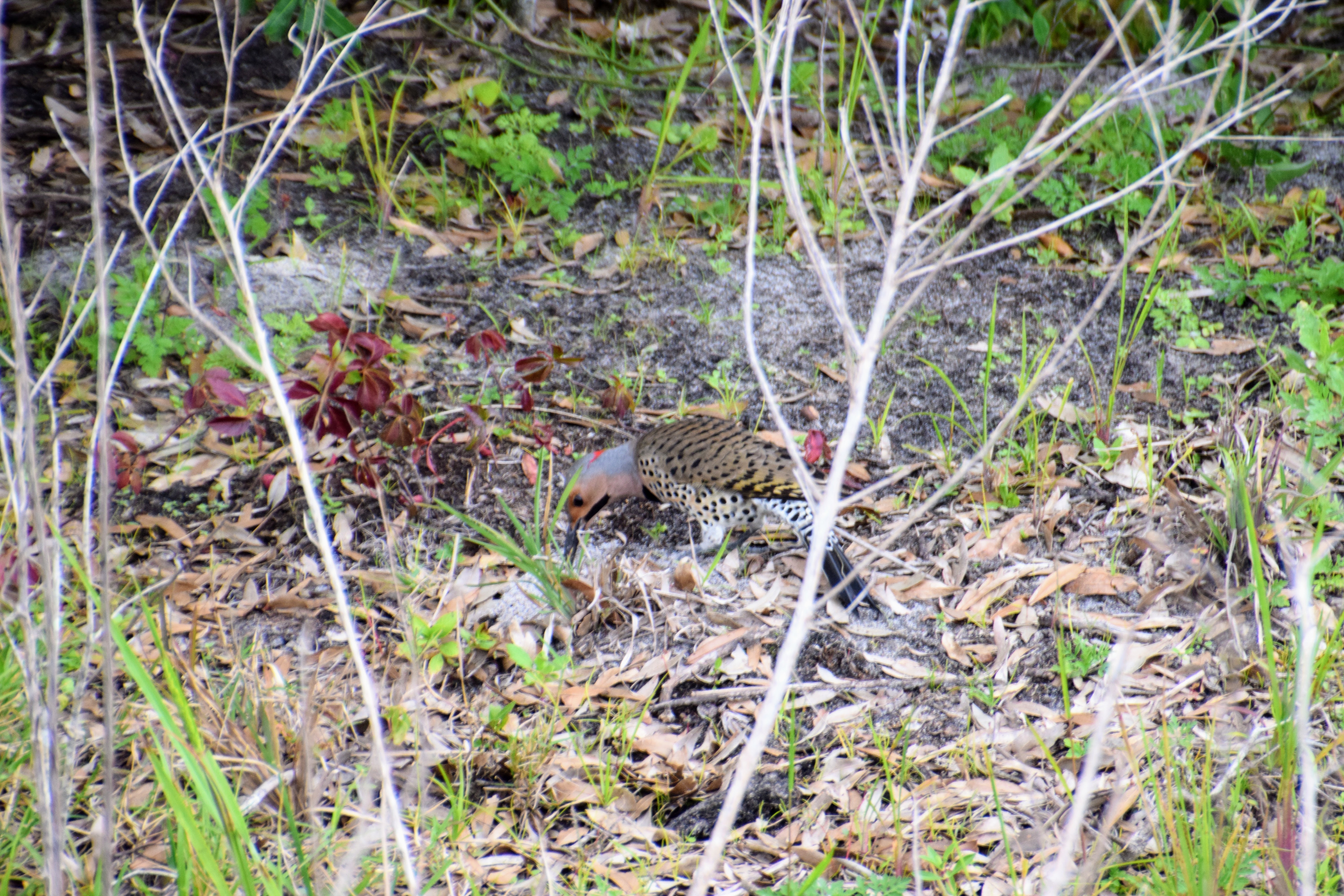
This is a Northern Flicker, a bird I see often in California but haven’t been able to get a picture of until now. They are the classiest kind of woodpecker–their red and black is more subtle and is accented with metallic gold and silver. They don’t peck wood, but thrive on golf courses, where they dig for worms. They come in two subspecies, “red-shafted” and “yellow-shafted”, referring to the color of the shaft of their primary feathers. In Florida, they had the yellow-shafted variety.
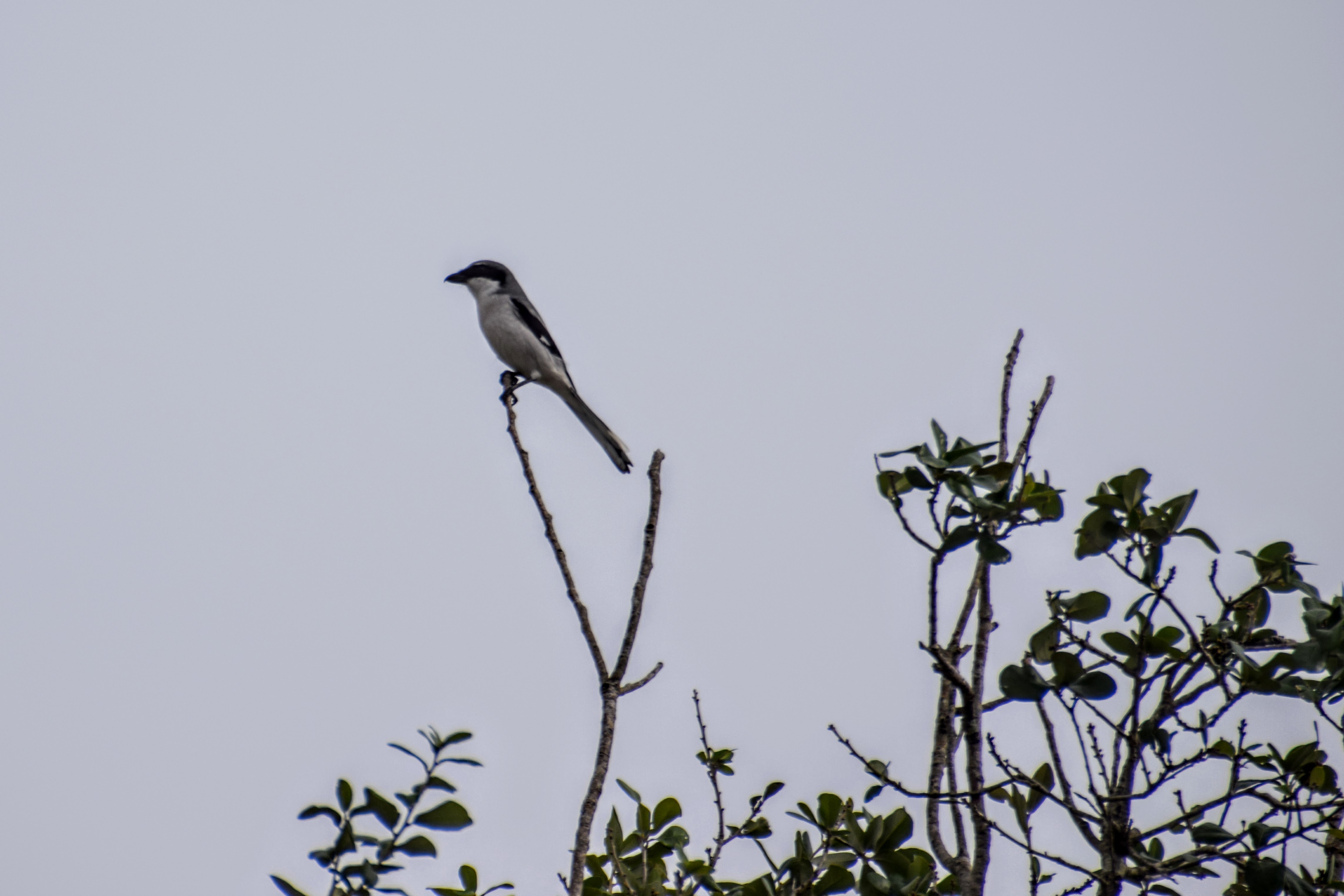
This is a Loggerhead Shrike, also known as a butcherbird. They’re the ones that impale small prey on thorns or barbed wire, both to store it for later and to help the bird pull the prey apart, since it lacks the strong talons of most birds of prey. I like its little bandit mask. What do you think is the adaptive purpose of bandit masks?
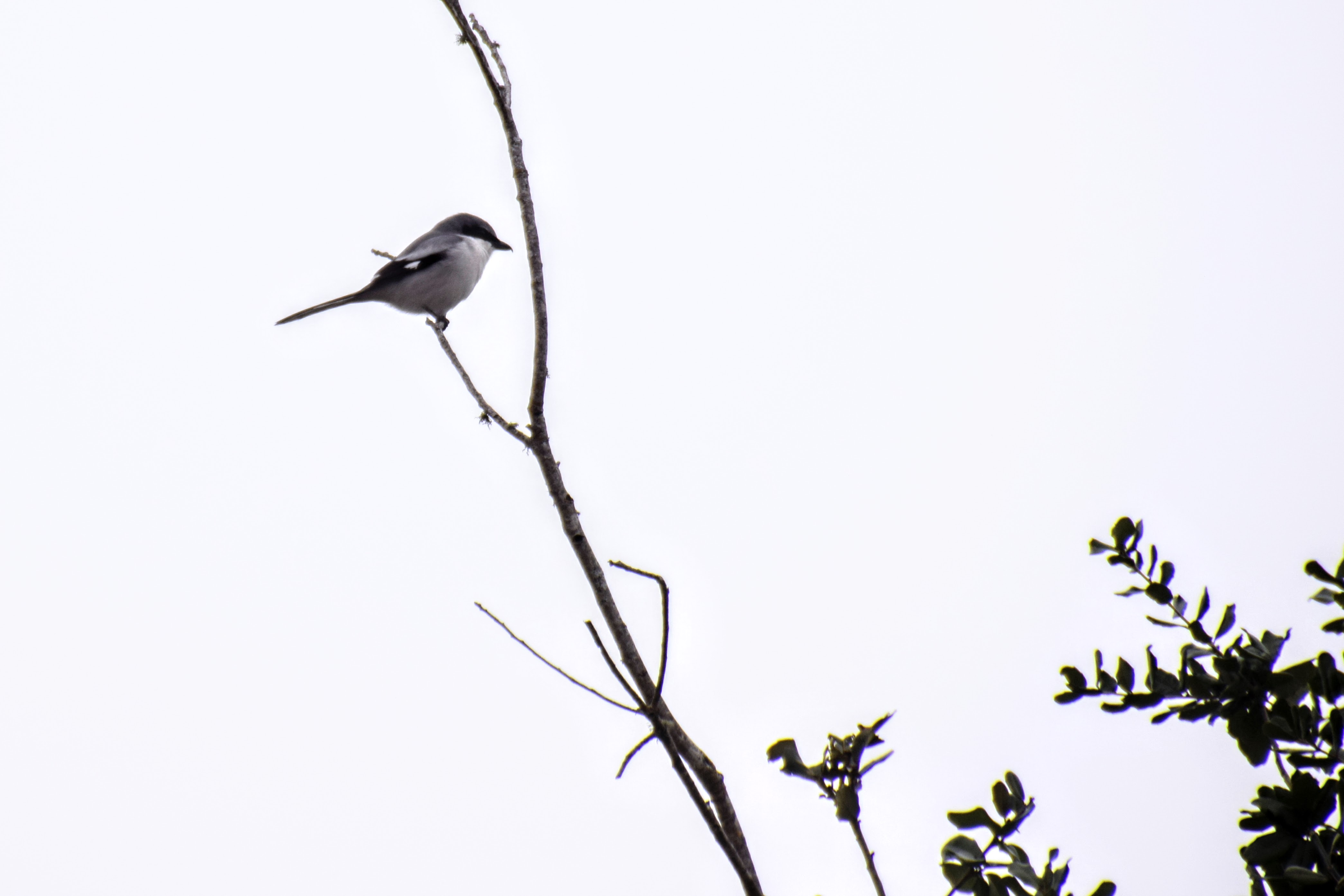
Here as well, you can see the change in posture between the warm day and the cold day. On cold days, small songbirds are nearly spherical. The Loggerhead Shrike is called that because its head is oversized relative to its body compared to most songbirds.
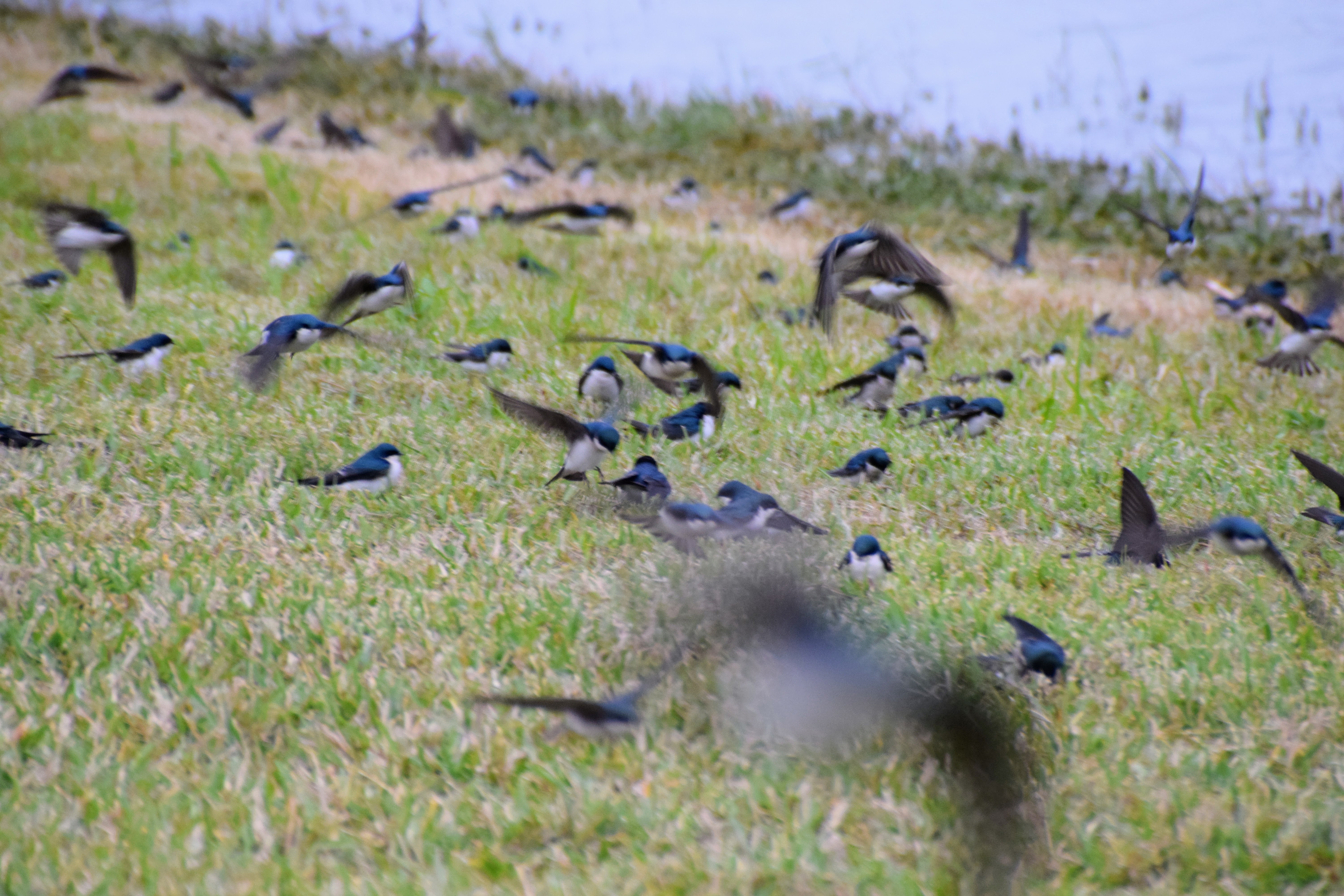
This flock of hundreds of Tree Swallows was flying around at dusk near the lake, hawking bugs on the wing. They went over and around us like we weren’t there–it was like being immersed in an aquarium of air-fish. Some of them were sitting on the grass. It looked like they were going to bed down for the night right there on the lawn! I thought they were supposed to be Tree Swallows, not Lawn Swallows.
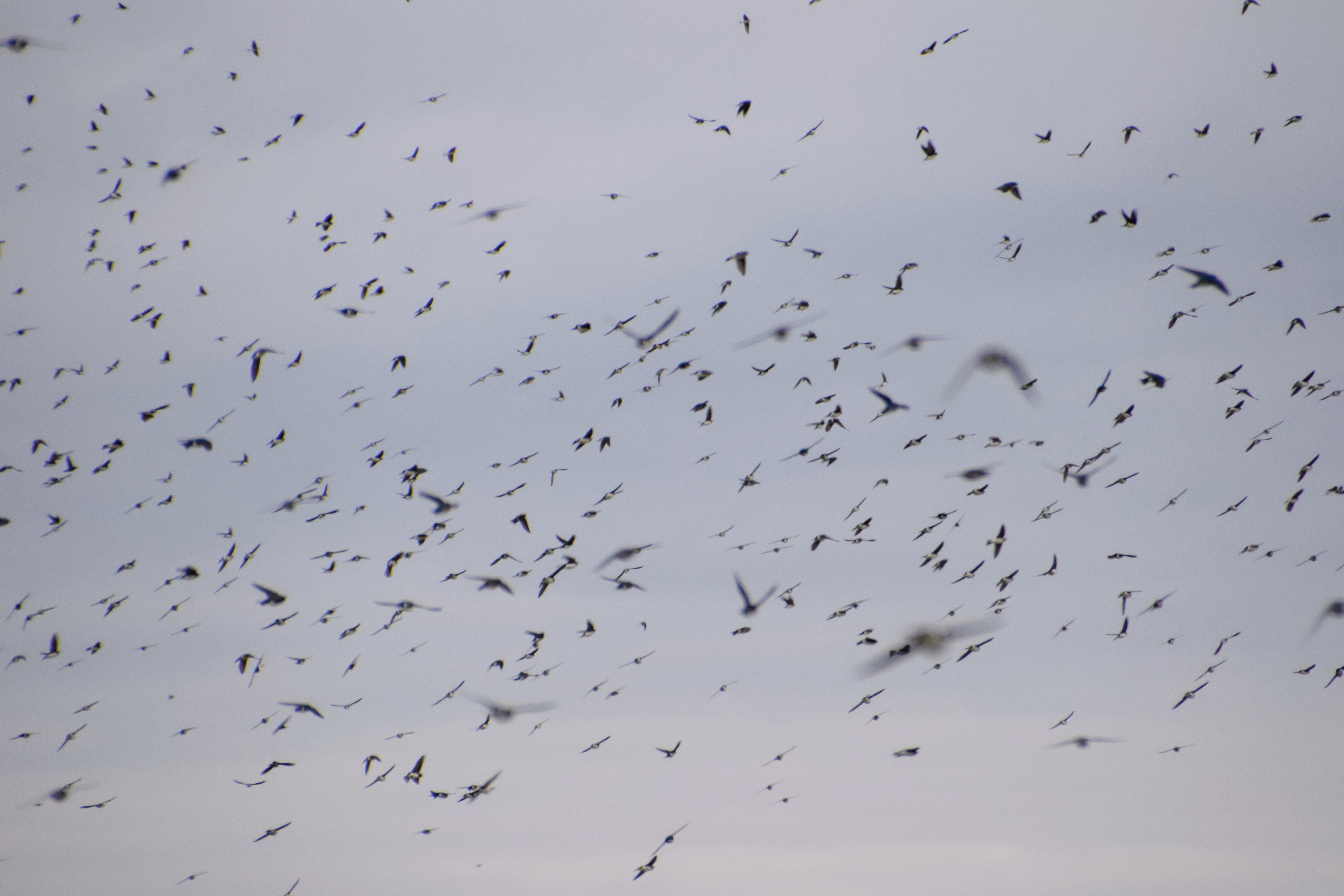
It’s hard to convey the magnitude of this flock. They don’t all fit in the frame!
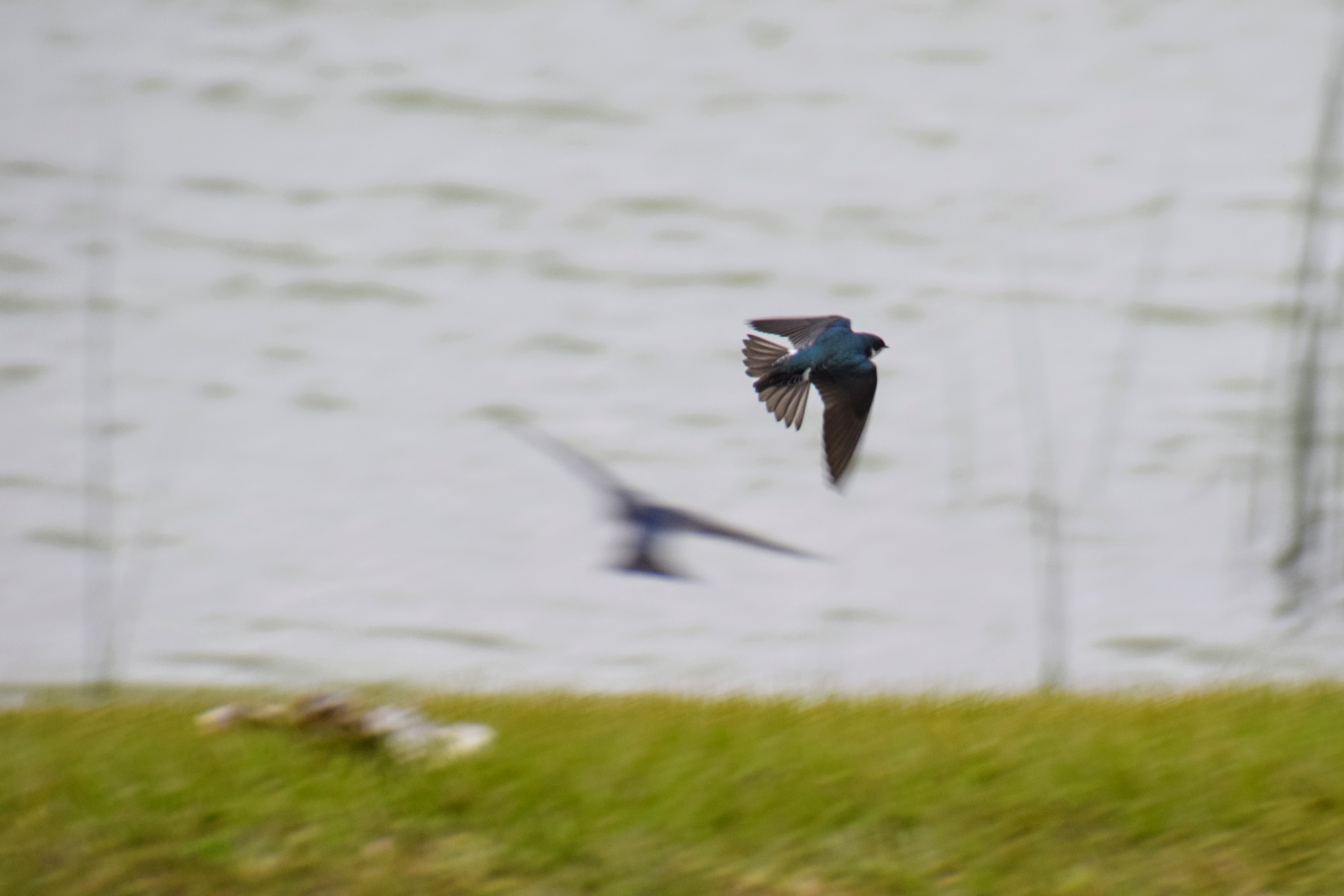
Male Tree Swallows have pretty iridescent blue backs.
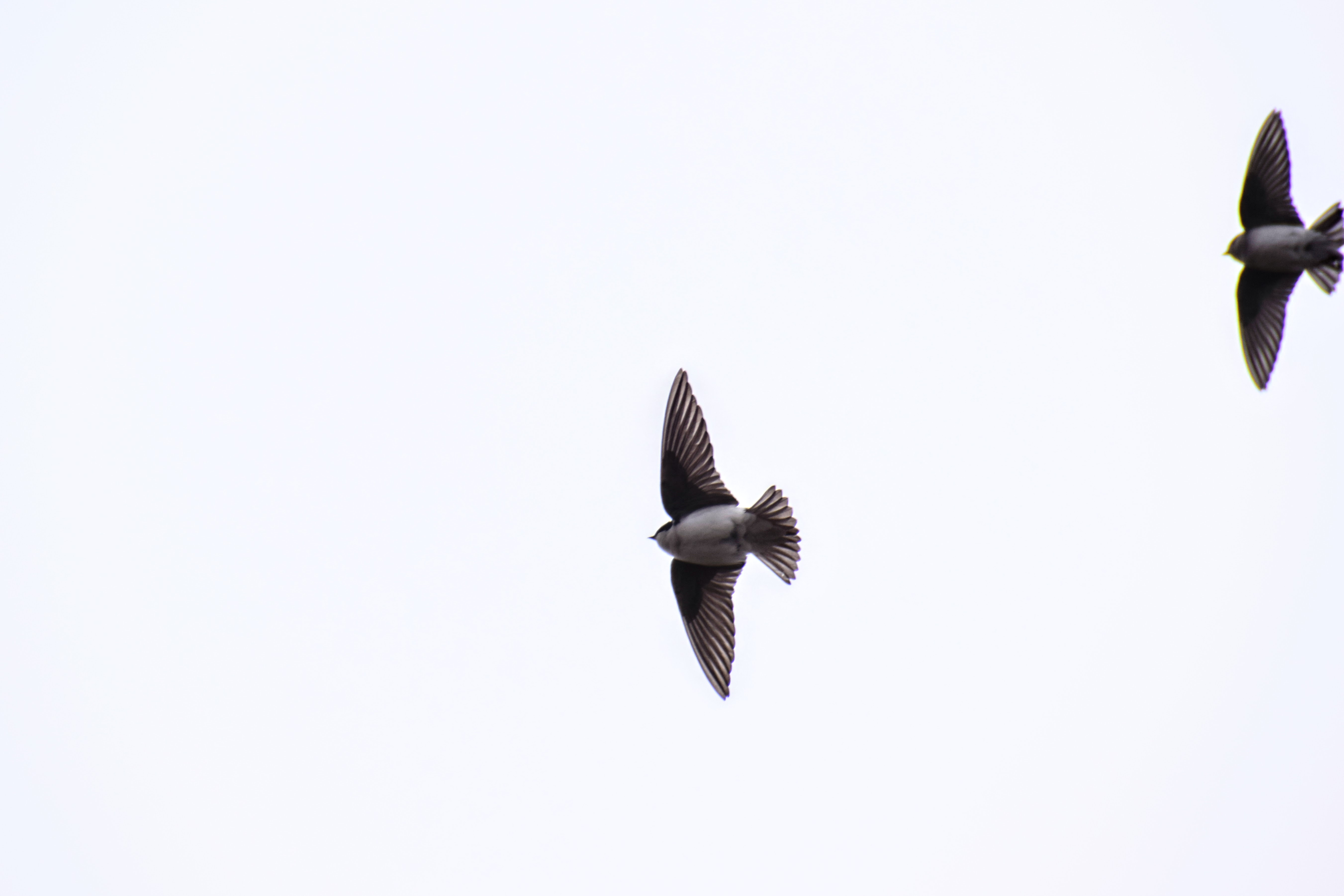
They’re shaped like little planes.
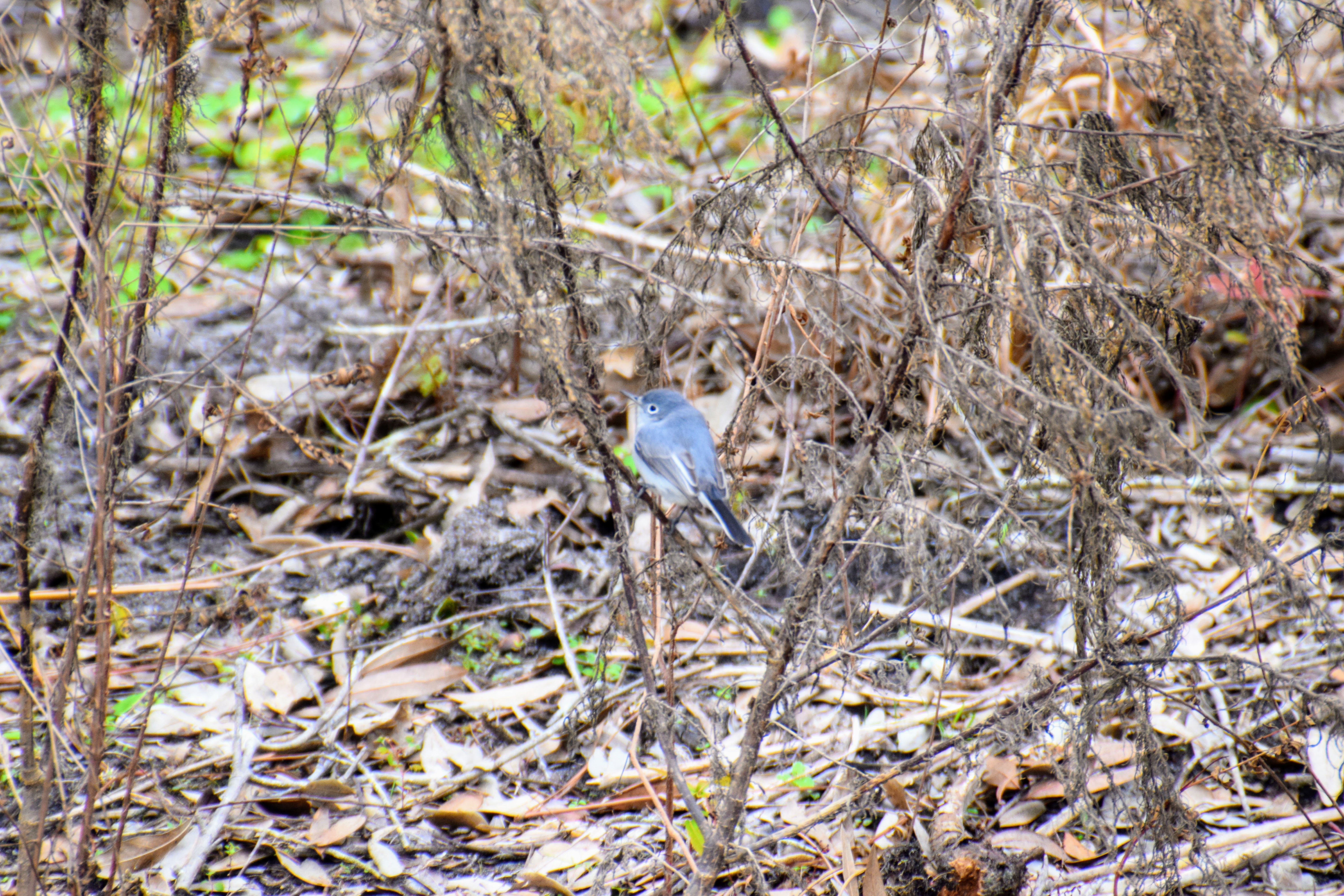
This is a Blue-Gray Gnatcatcher, which I saw last time I was in Florida but were much more common this time.
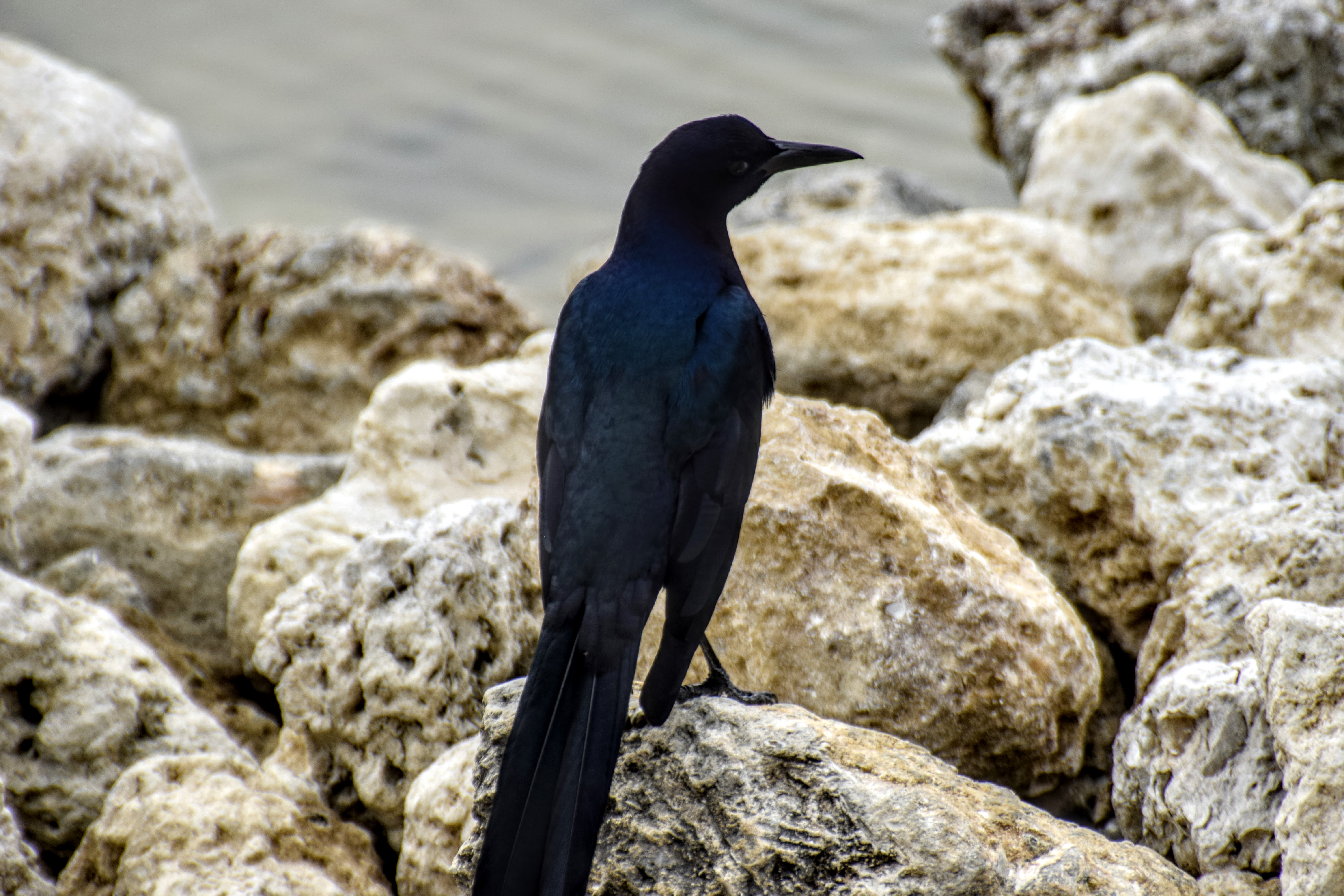
This is a Boat-Tailed Grackle, another species I saw the last time I was in Florida.
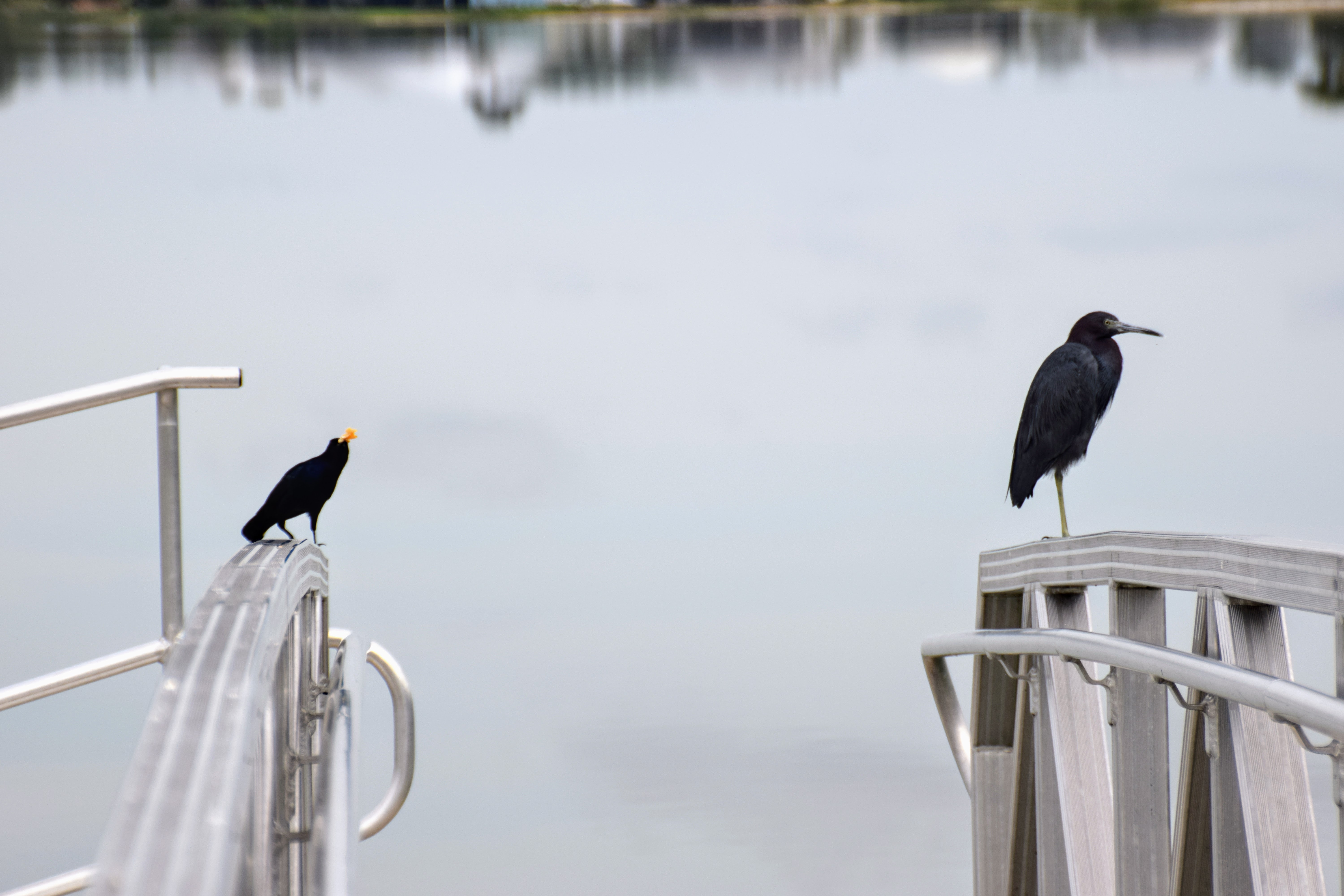
Here’s a Boat-Tailed Grackle eating a cheese puff near a Little Blue Heron. In Florida, there were very often mixed flocks of waterbirds, and I could get an impressive number of species in a single shot!
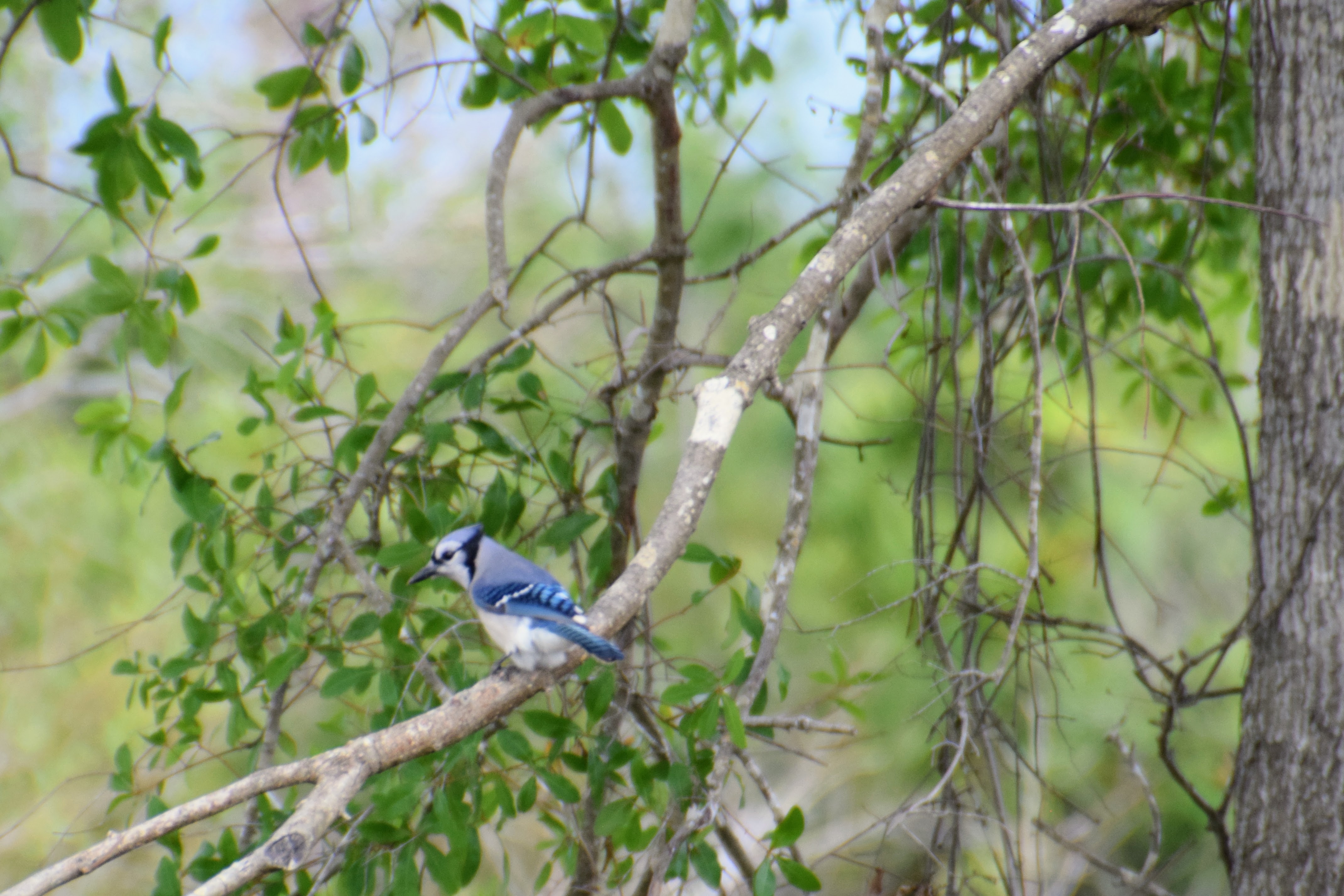
I was able to get some slightly better pictures of Blue Jays this time. The last time I saw Blue Jays was in New York.
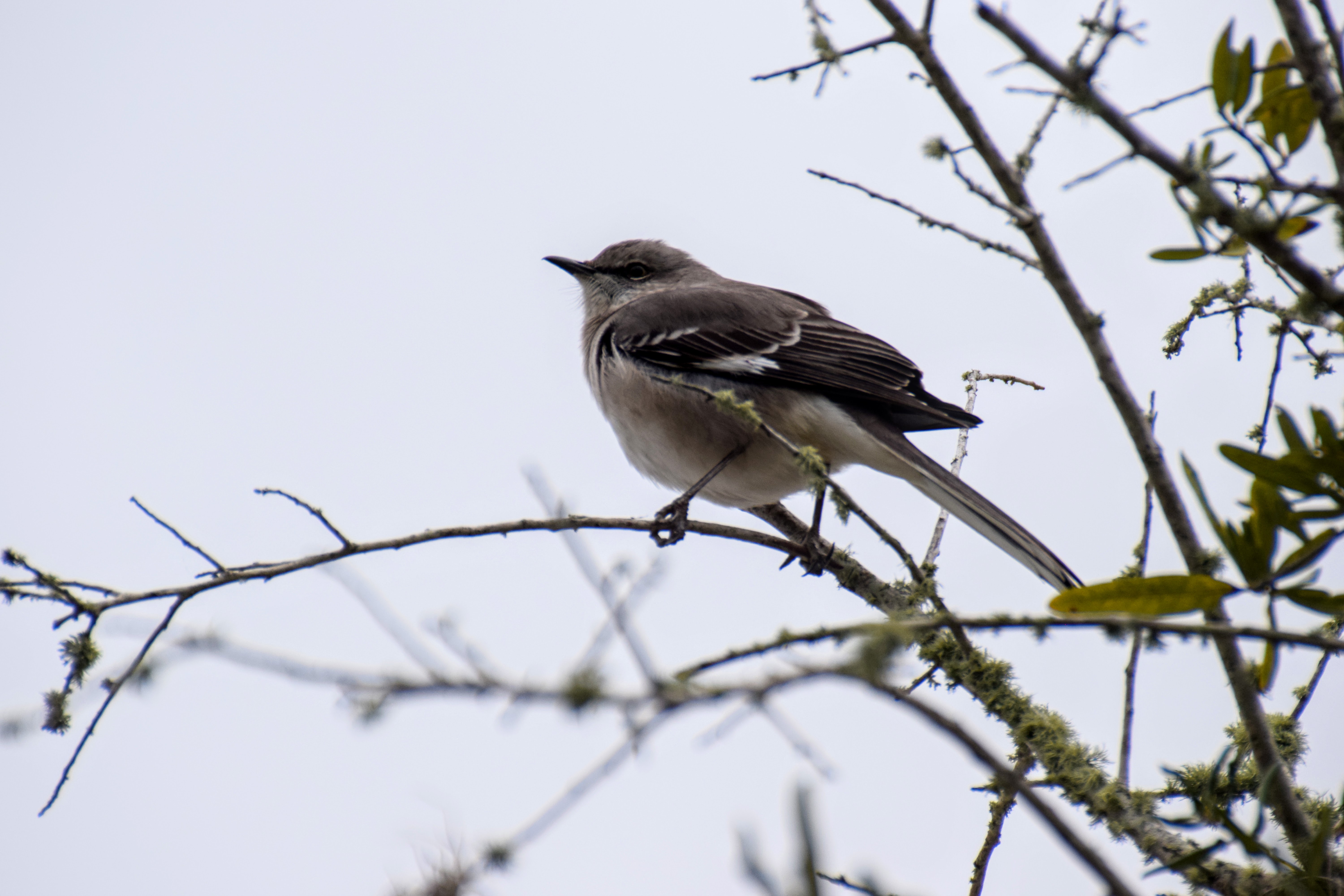
There were lots of Northern Mockingbirds on rooftops in the neighborhood. I’m not sure why they like the peaked roofs so much while other species don’t.
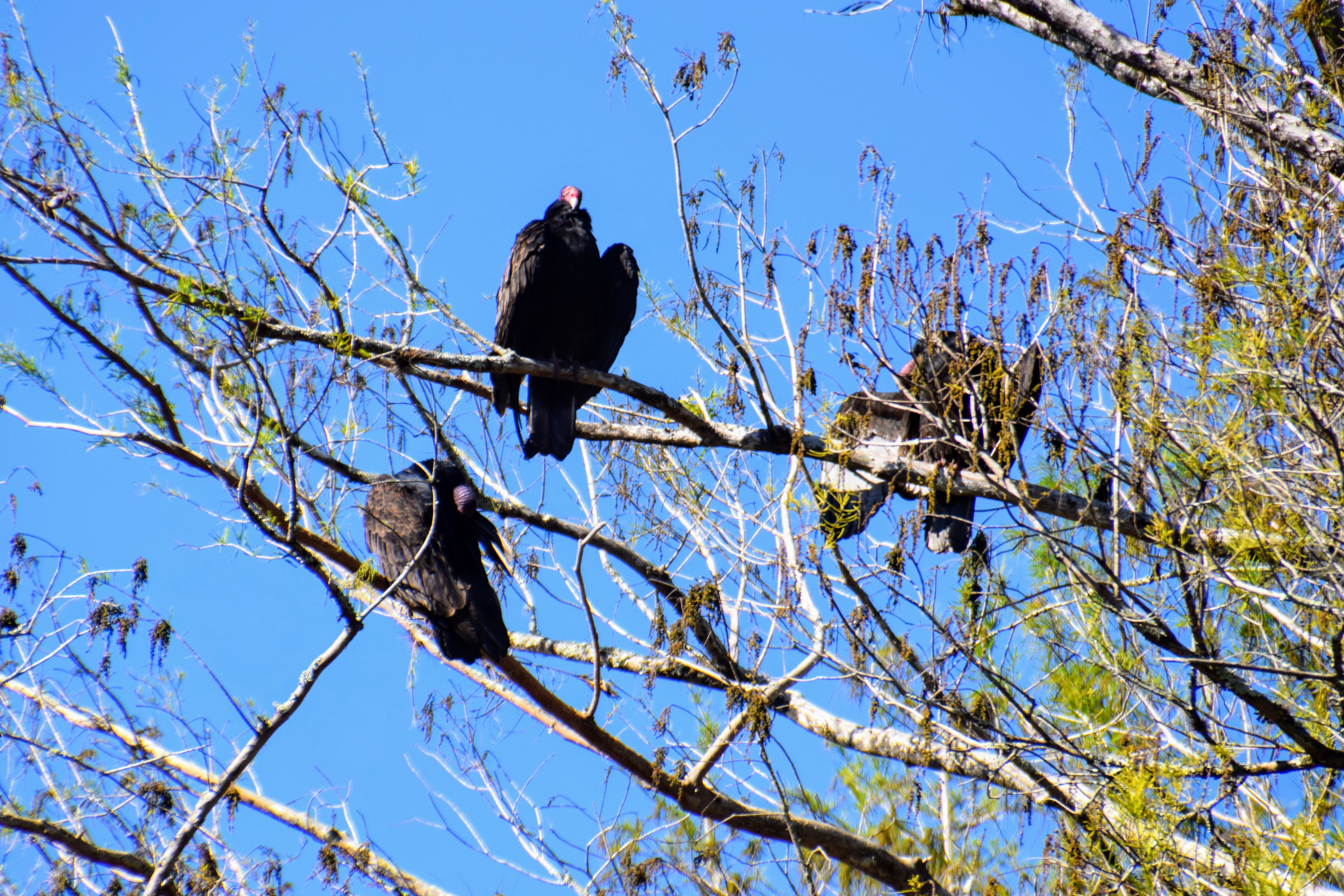
These Turkey Vultures were roosting high up in a tree in the nature preserve.
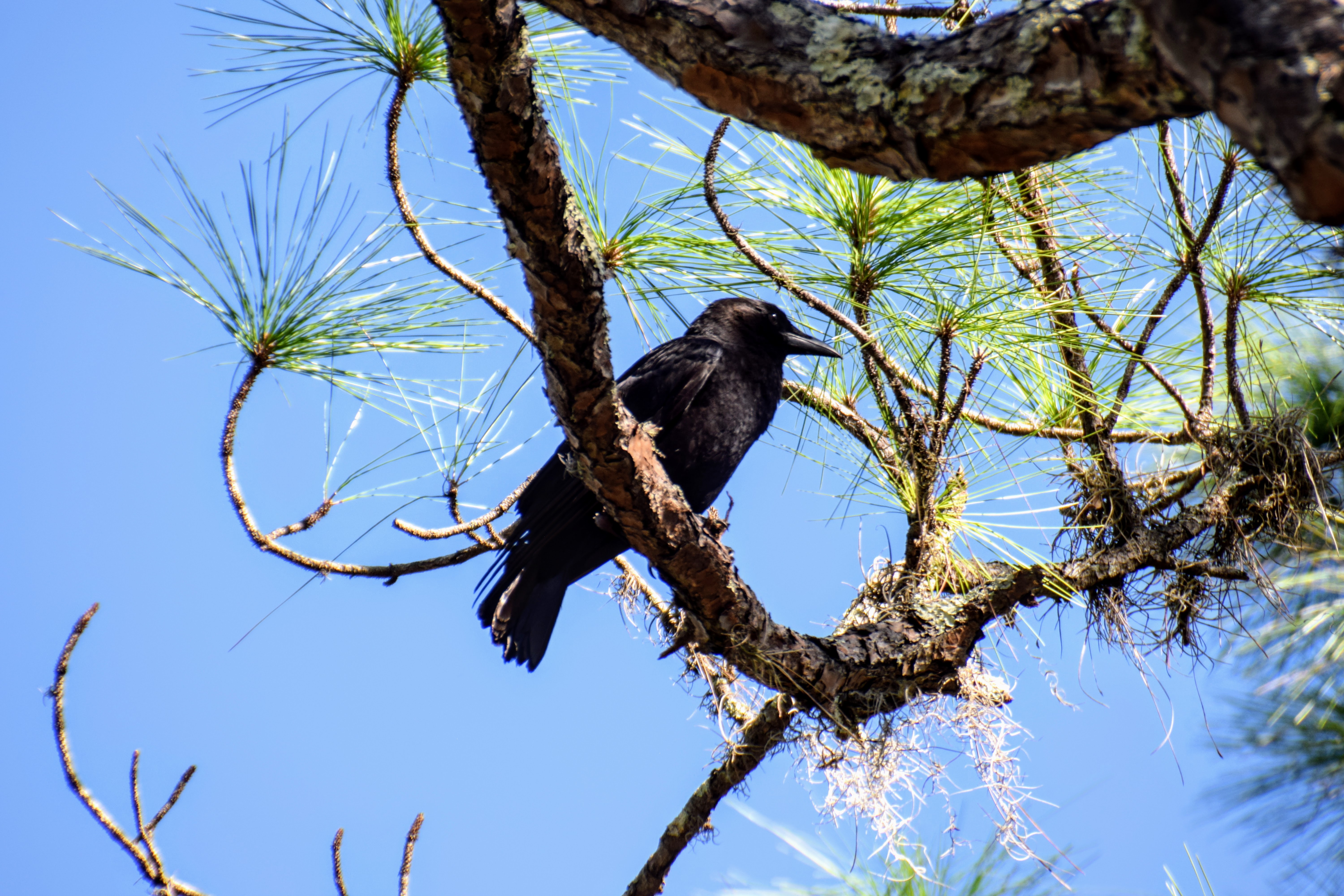
This is an American Crow, the same kind that’s ubiquitous across most of the country. However, last time I was in Florida I only saw Fish Crows, so I was a little surprised to hear this crow go “caw” instead of “keh”.
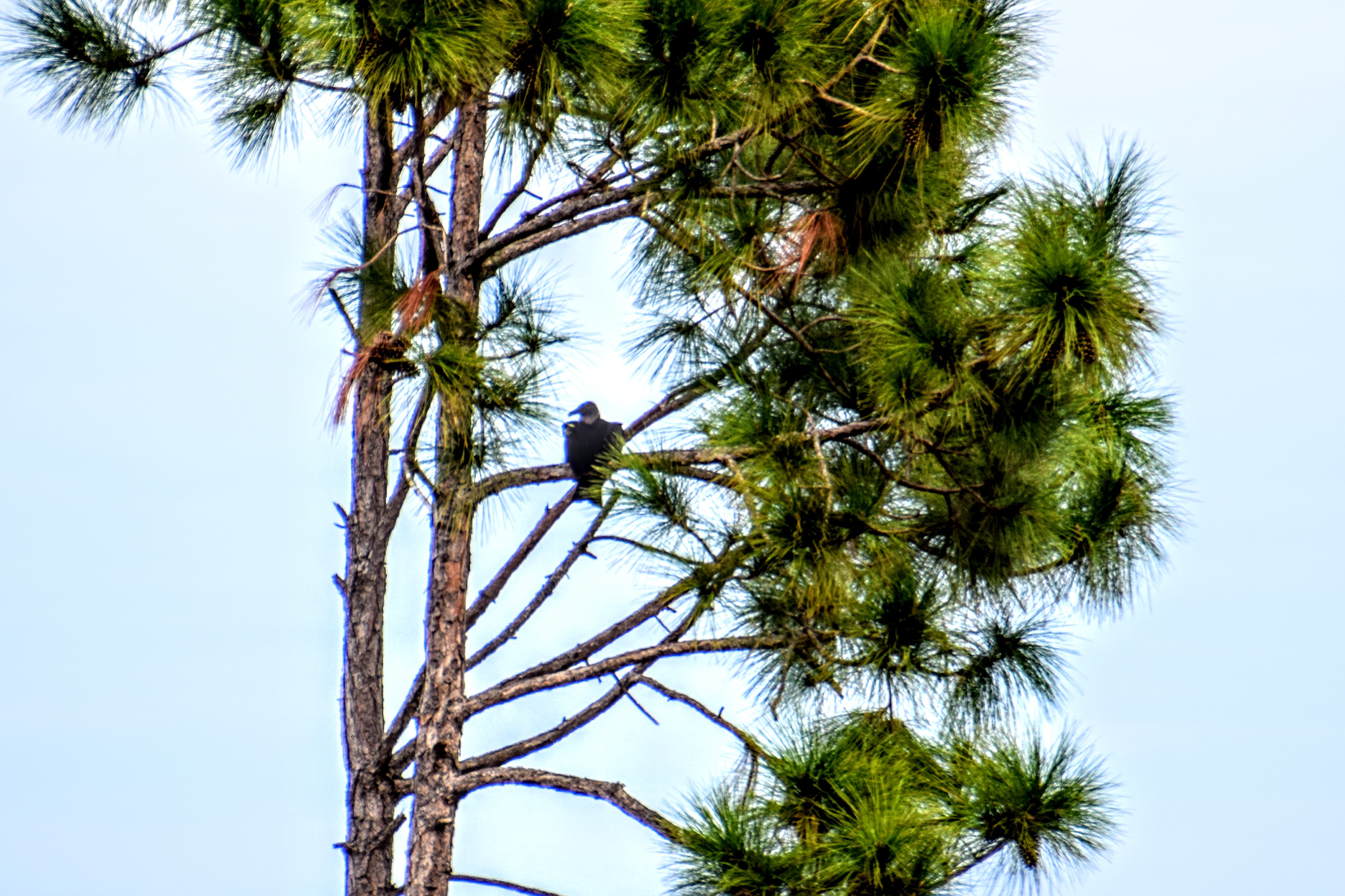
Like last time, I was unable to get any good pictures of a Black Vulture.
Waterbirds I’ve Seen Before
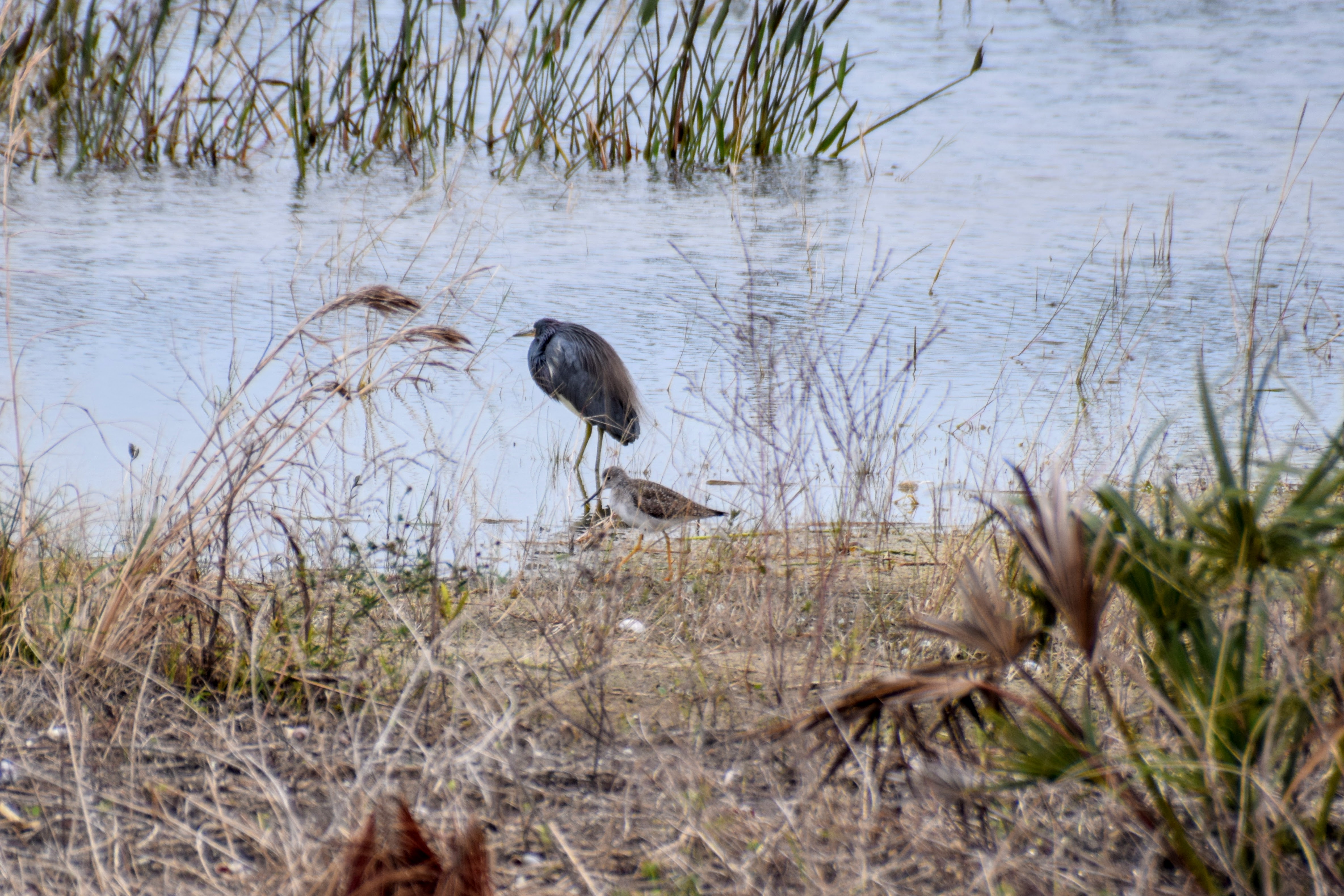
Here’s a Greater Yellowlegs walking near a Little Blue Heron.
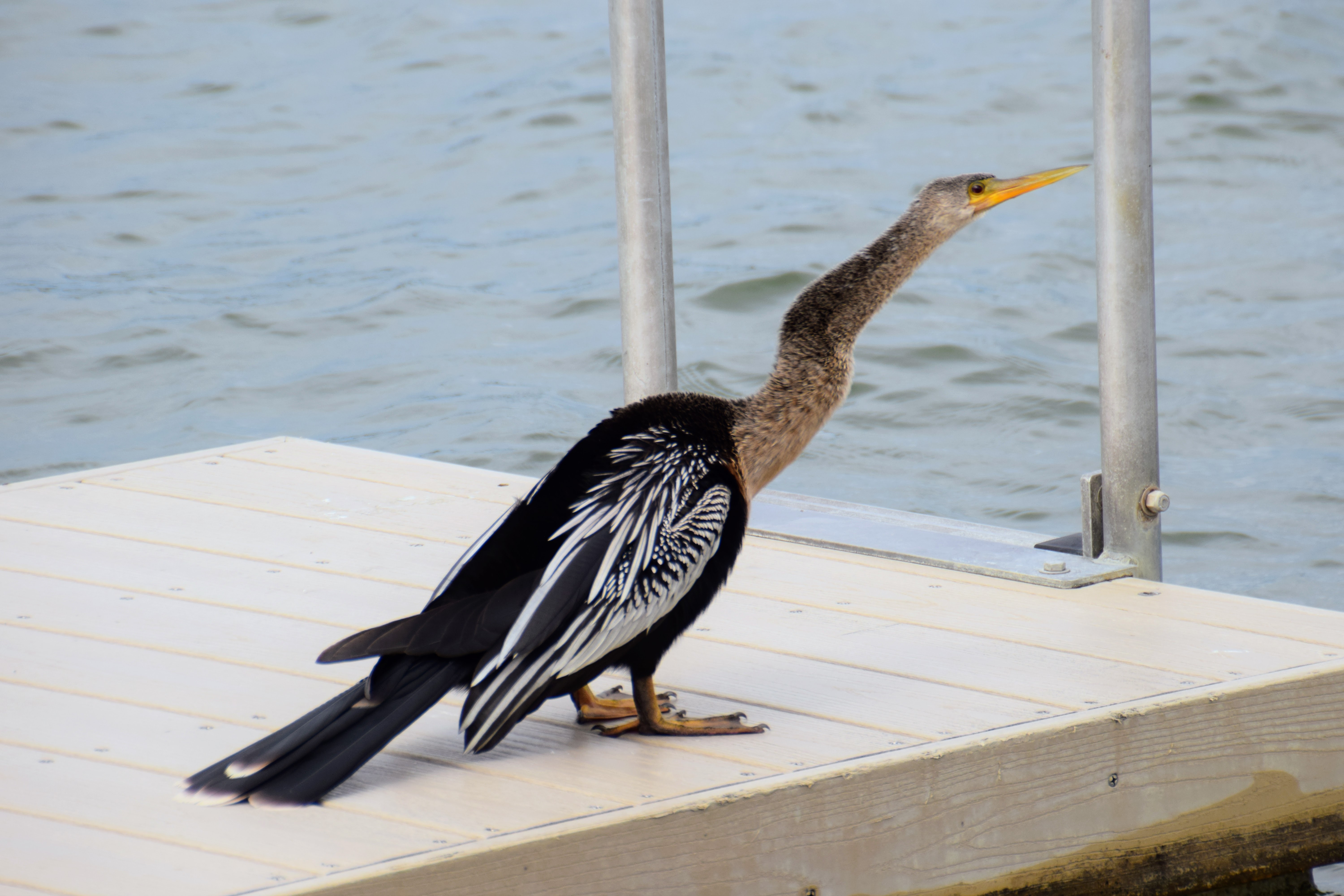
Last time I was in Florida it was a bit early to see Anhingas, but this time they were relatively common.
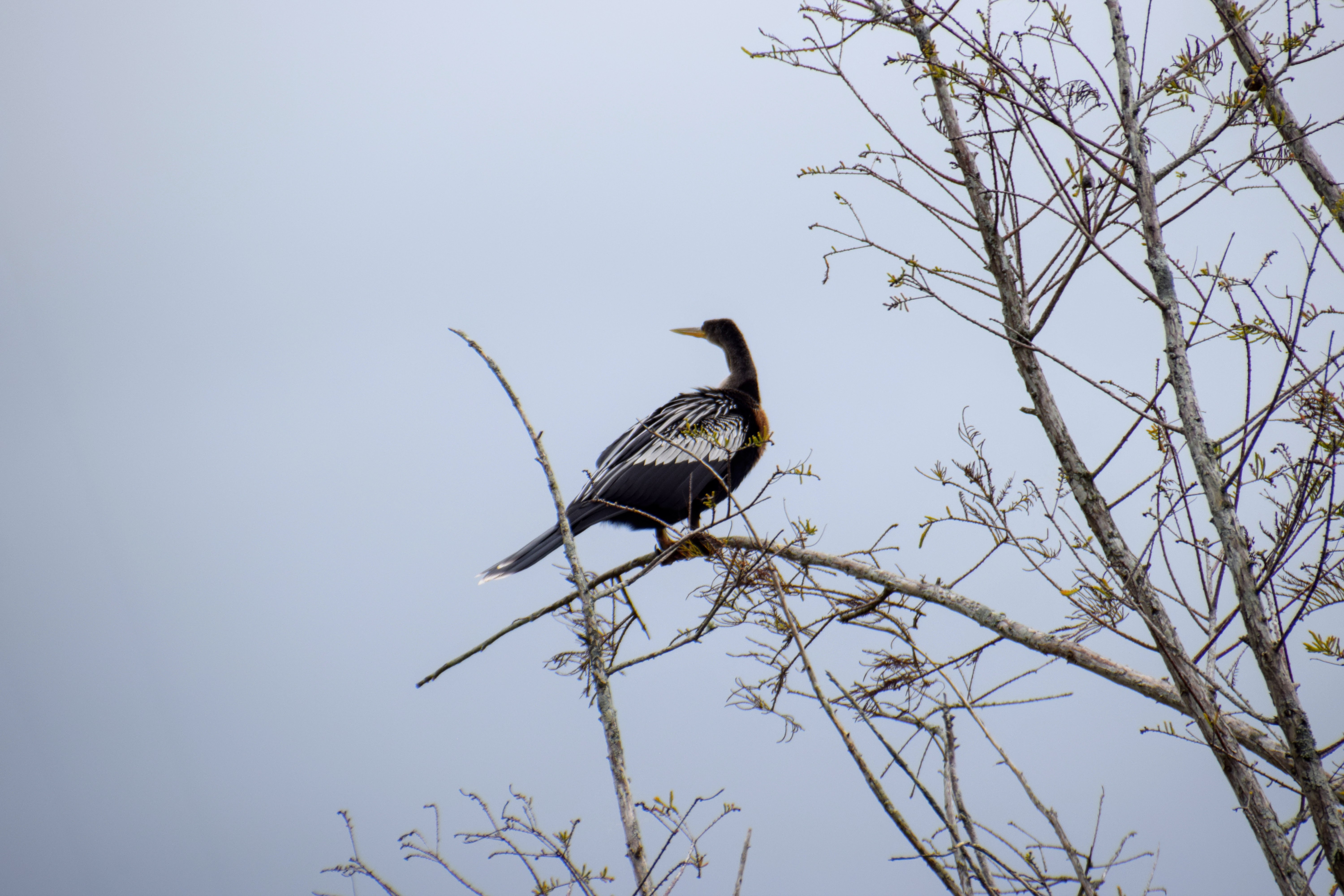
They often perched on branches that seemed way too thin for their weight, and bent down severely like Charlie Brown’s Christmas tree.
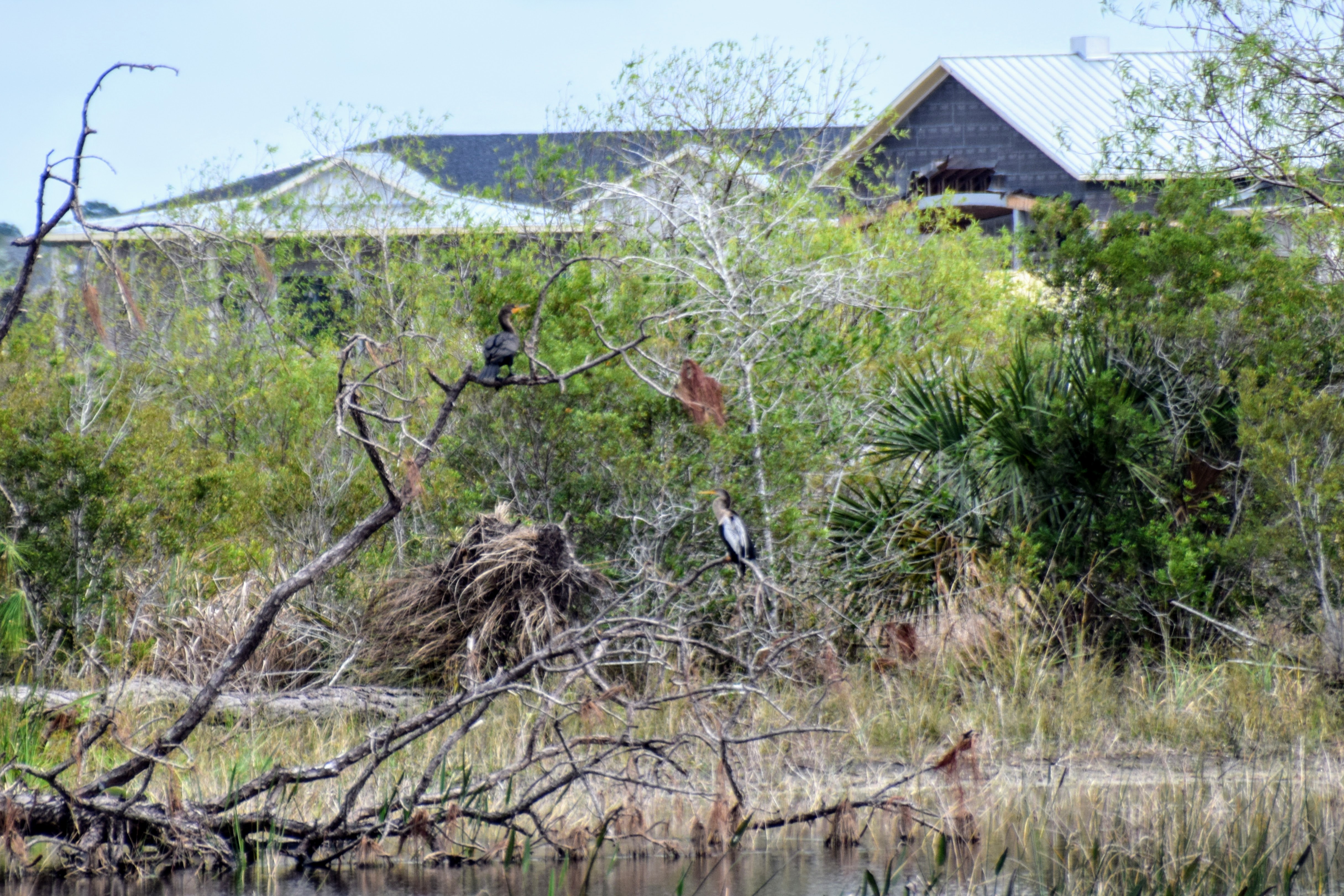
Here’s a Double-Crested Cormorant and an Anhinga perching together. We have Double-Crested Cormorants like this one in California as well; they’re related to Anhingas but are better swimmers and worse fliers. Both do the horaltic pose to dry their wings.
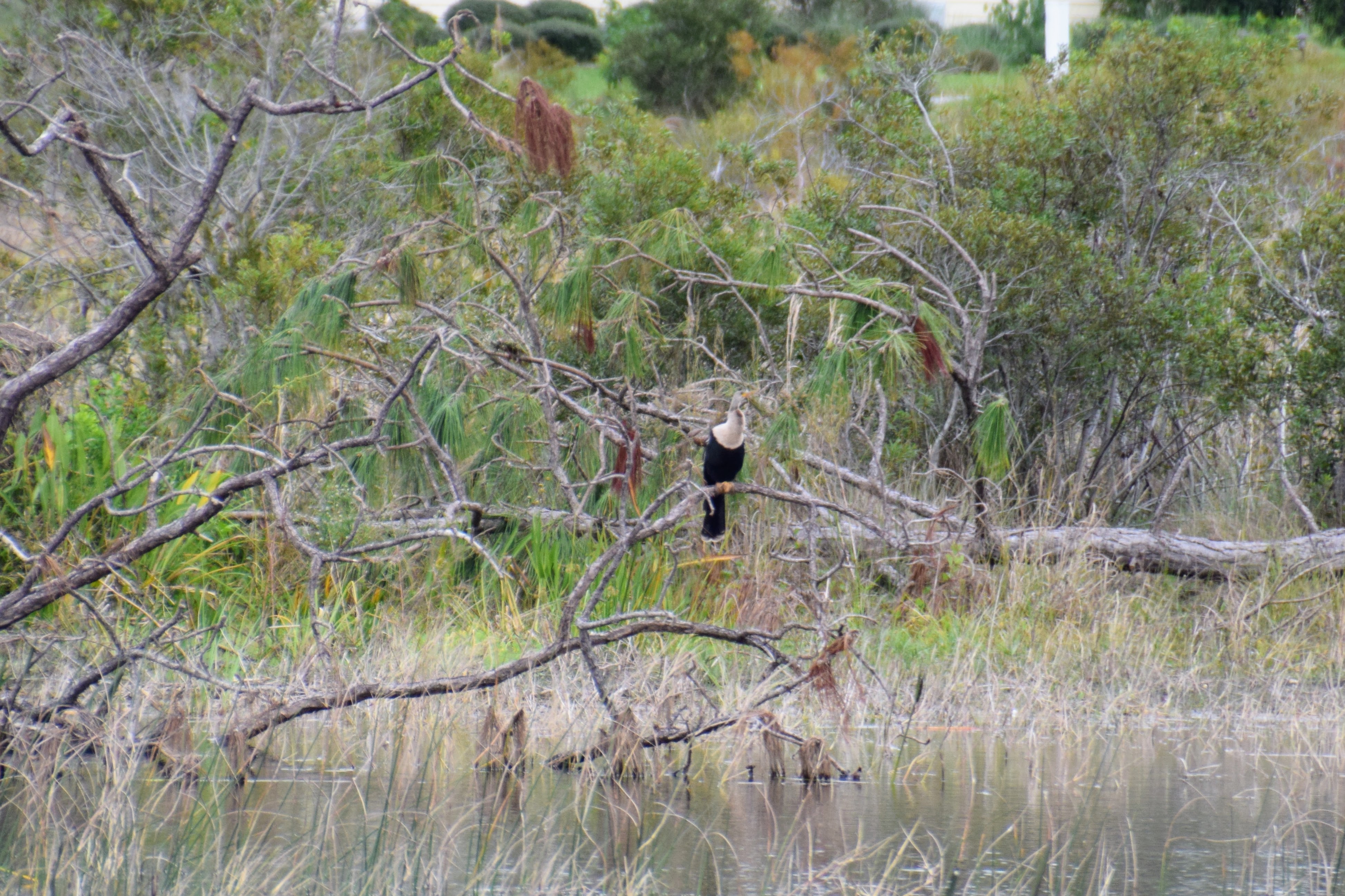
Male Anhingas have a black neck, while mature females have a very light brown neck.
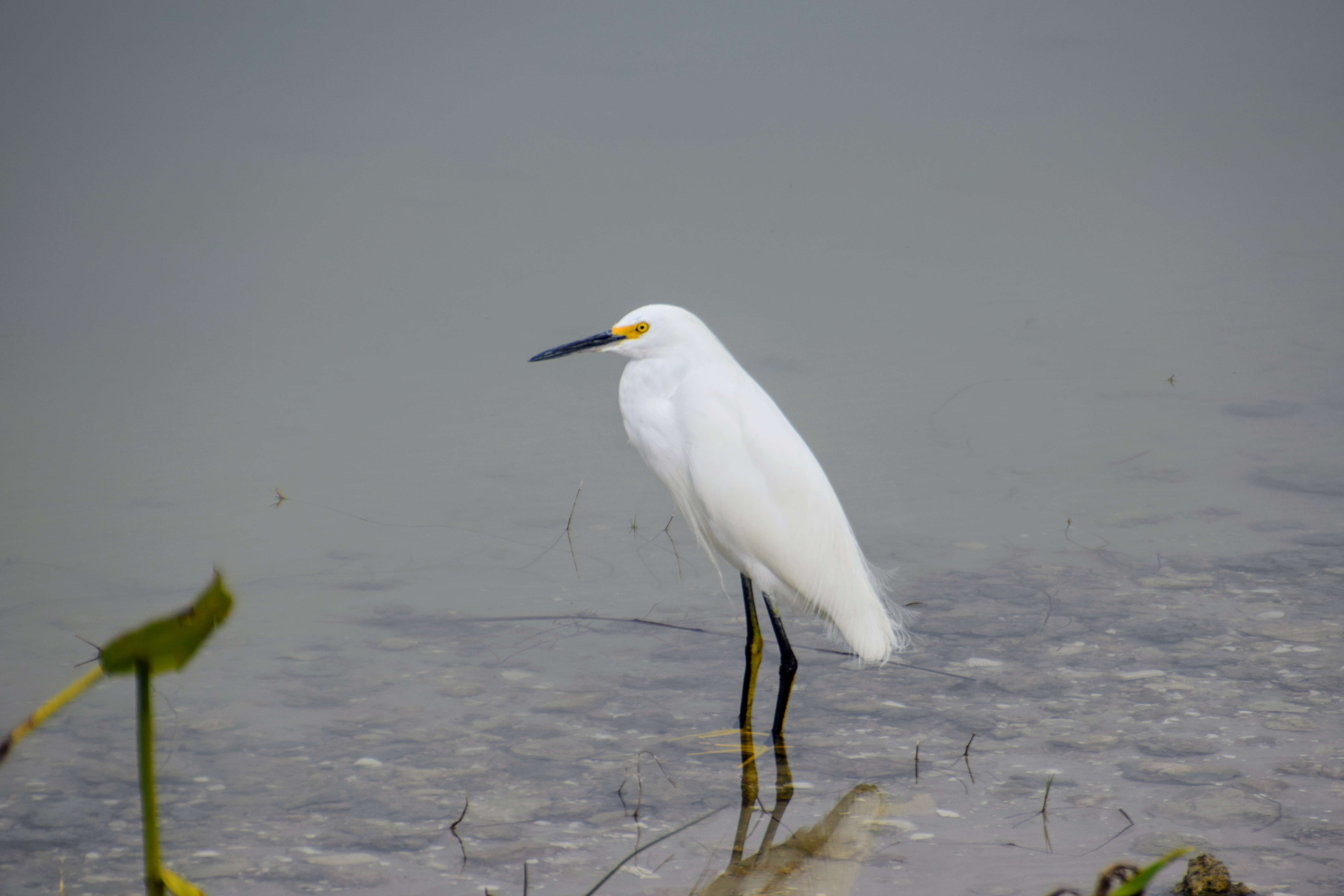
We have Snowy Egrets in California too. They are in the same genus as the Little Blue and Tricolored Herons.
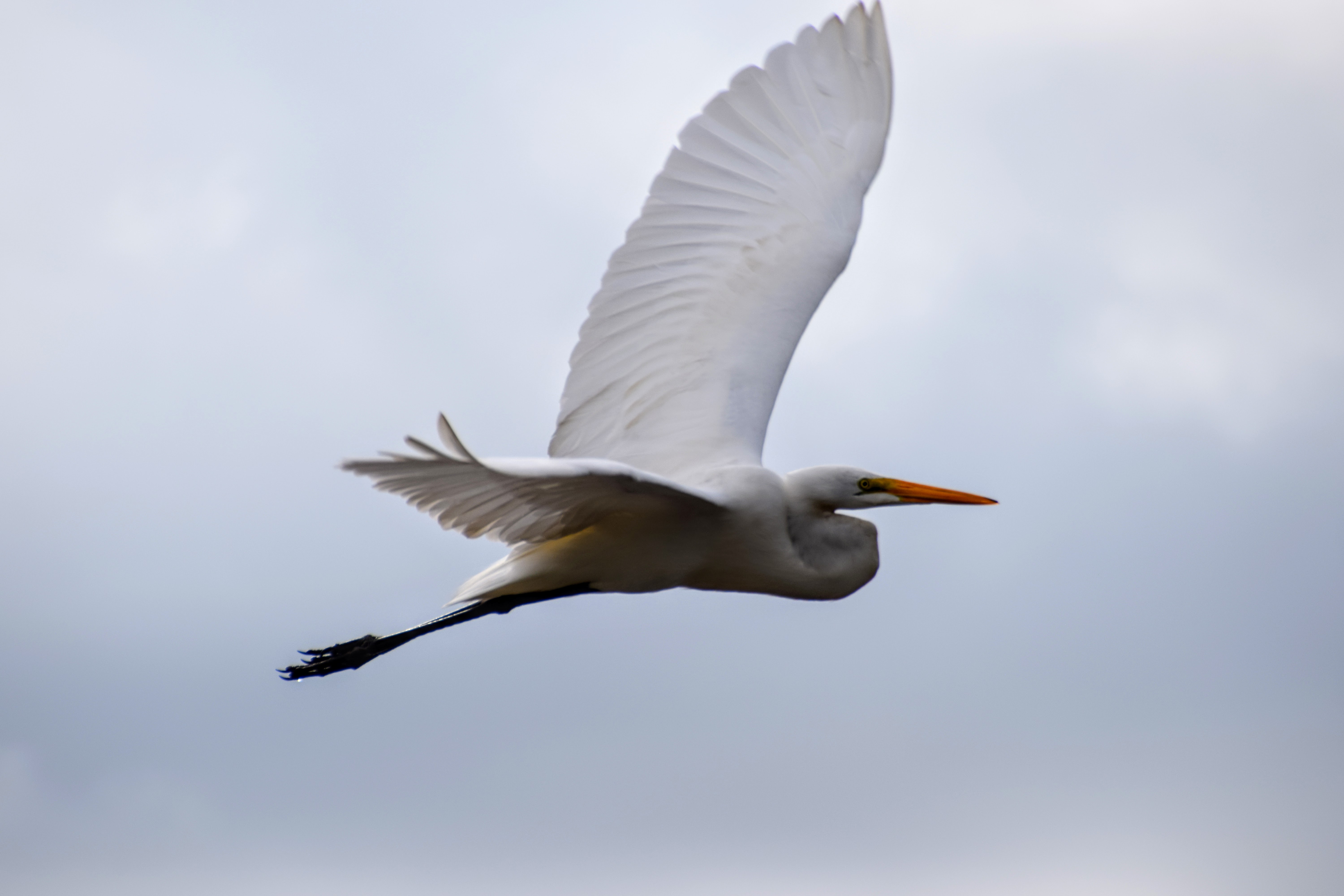
Great Egrets like this are found all over the world.
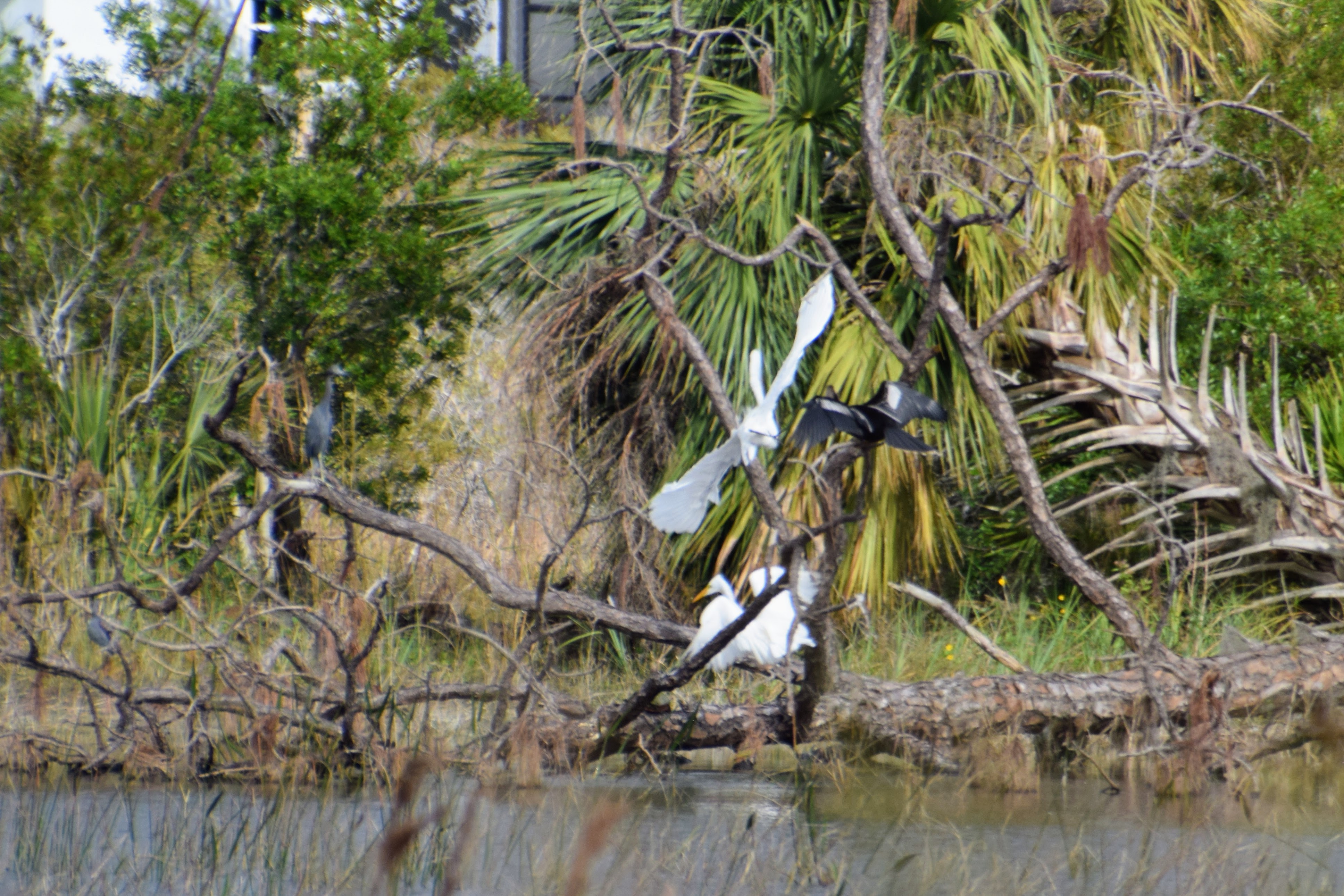
Here’s another example of Florida’s species diversity: two Great Egrets, an Anhinga, and two Little Blue Herons competing for space on a dead tree. This dead tree was a very popular spot to perch.
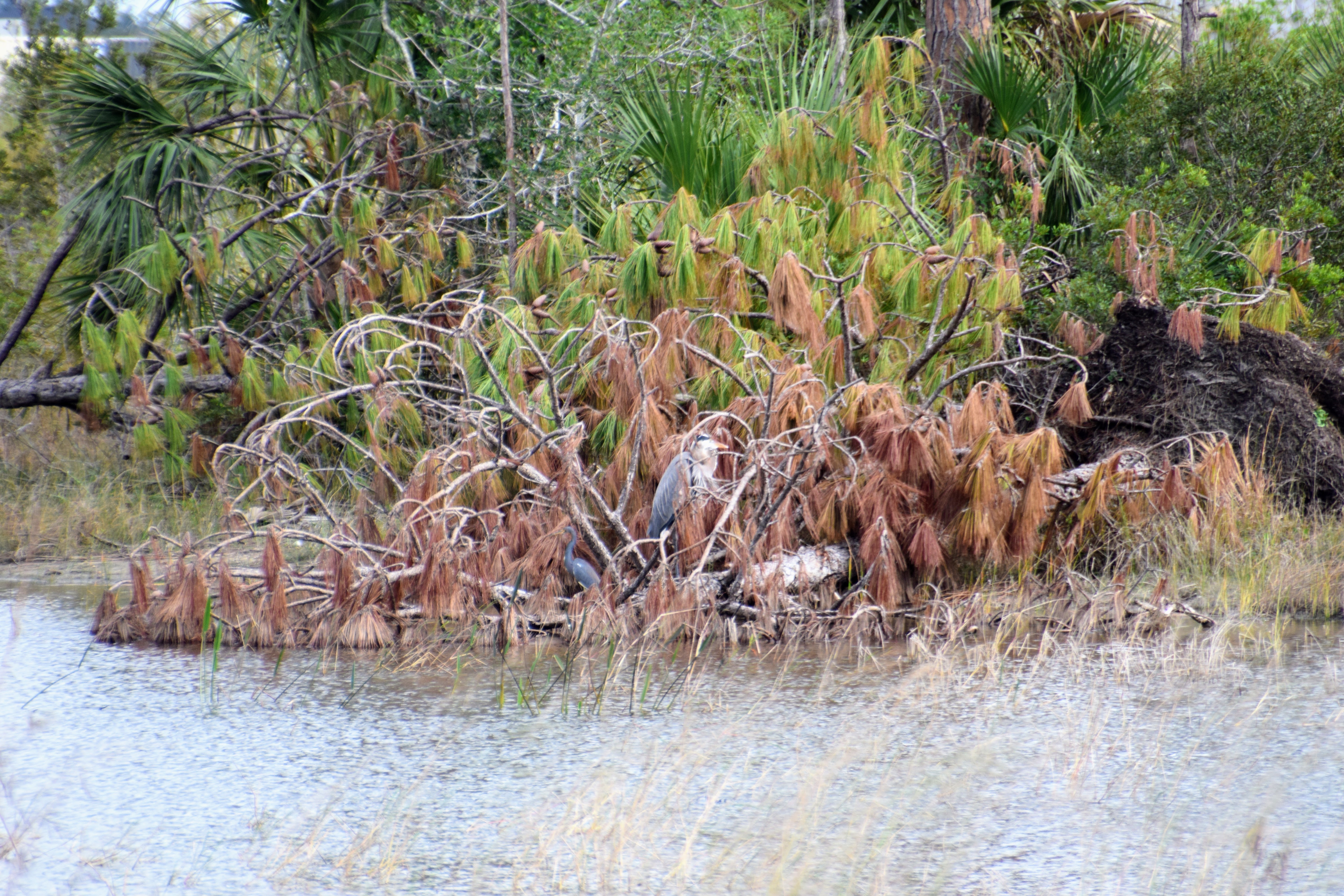
Here’s a Great Blue Heron and a Little Blue Heron together, demonstrating the size difference between Great and Little. The Great Blue Heron is in the same genus as the Great Egret. This means that the term “egret” and “heron” aren’t taxonomically meaningful. It seems that it refers to the color, with white birds being named egrets and non-white birds being named herons.
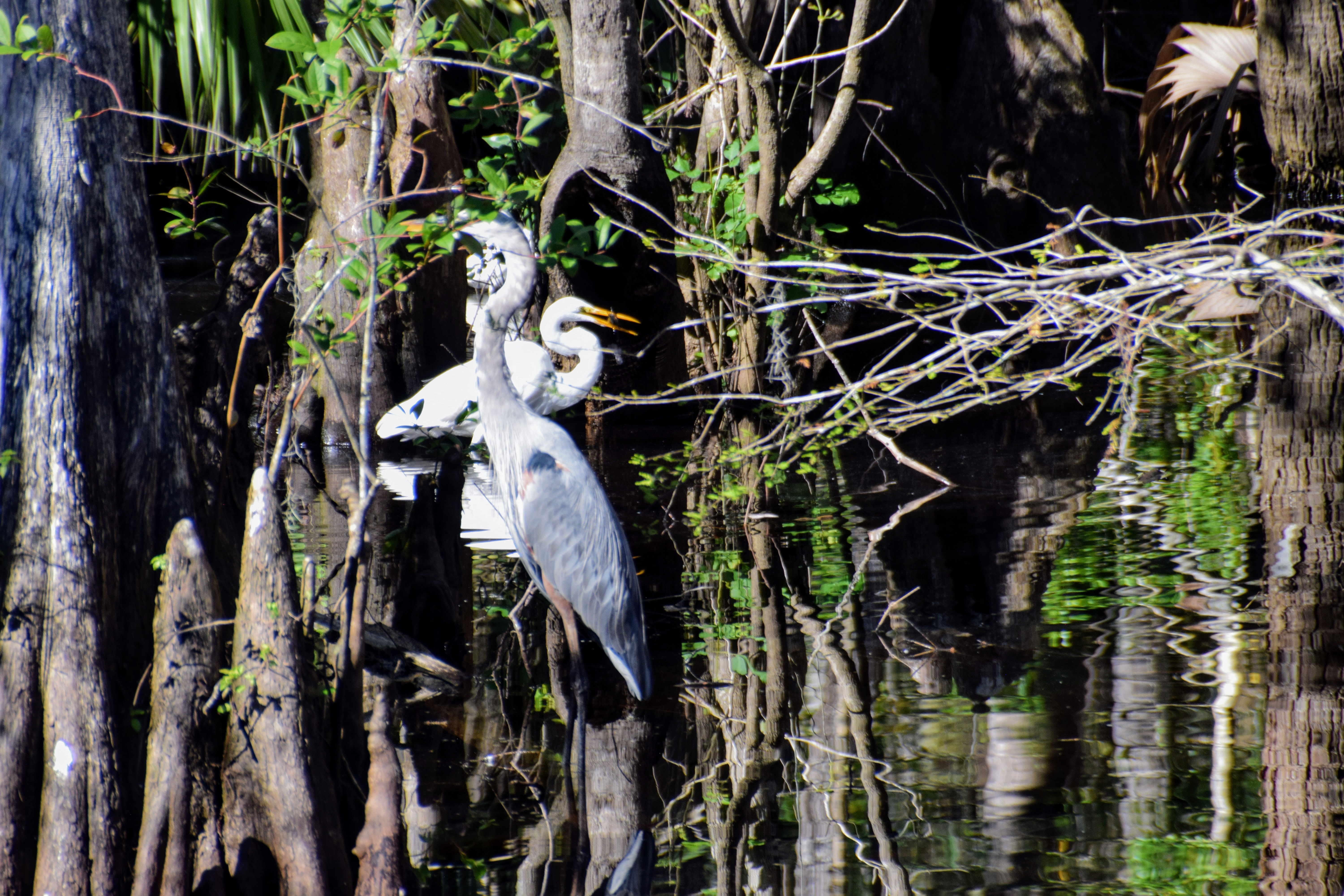
Here’s a Great Egret and a Great Blue Heron foraging near each other. The Great Egret has a fish in his mouth! It seemed like this area was extremely rich in fish, since many birds had them in their beaks.
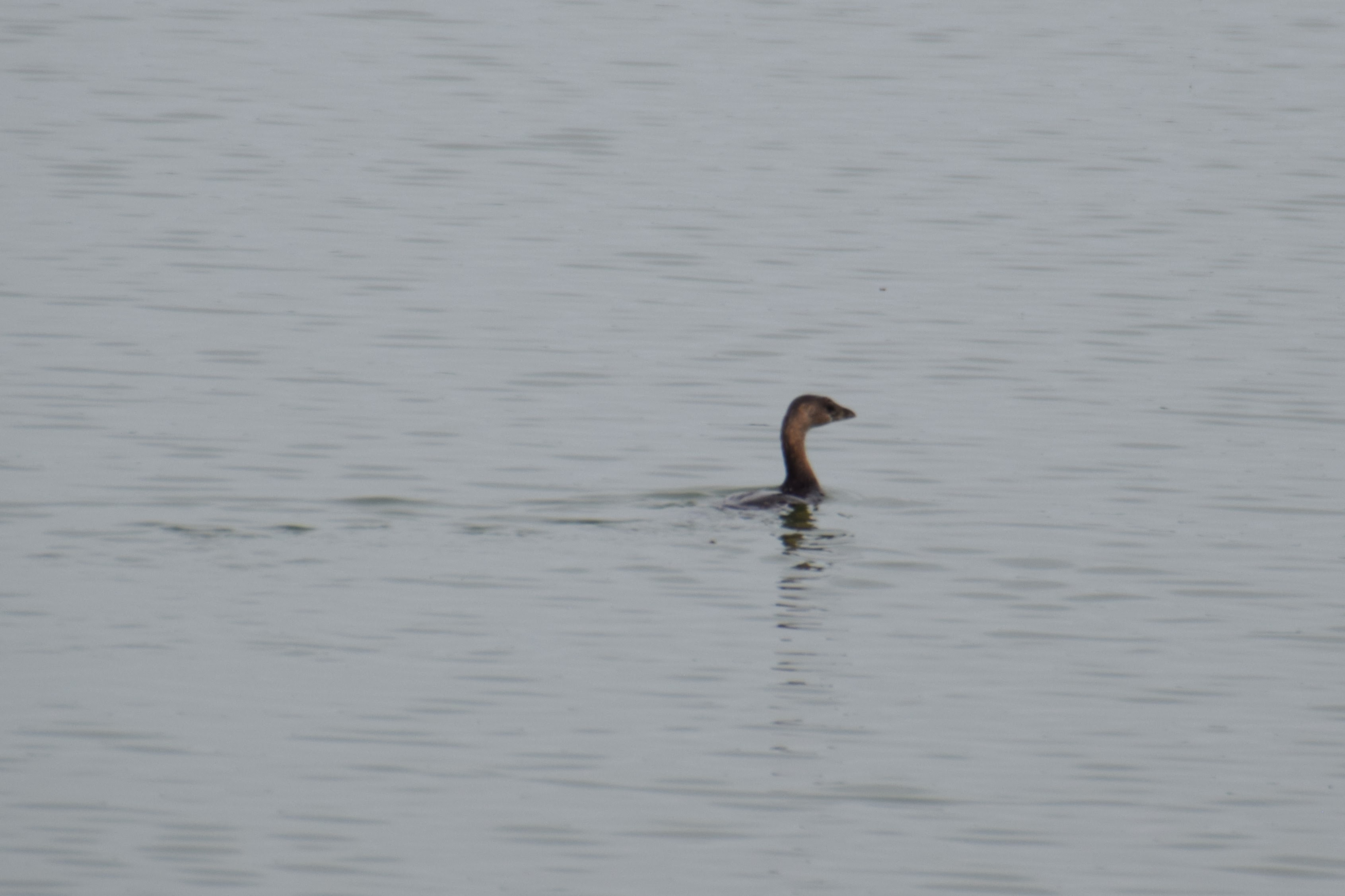
This is a Pied-Billed Grebe, which is in the samre family as flamingos. They have many silly colloquial names, including dabchick, hell-diver, and water witch. Does it look witchy to you?
Denver Birds
Before heading to Florida, we made a brief stop in Denver, where I was able to get a few more bird pictures. We also went to the Denver Zoo, which had some exotic birds, though many of the animals weren’t available to be seen because it was too cold out.
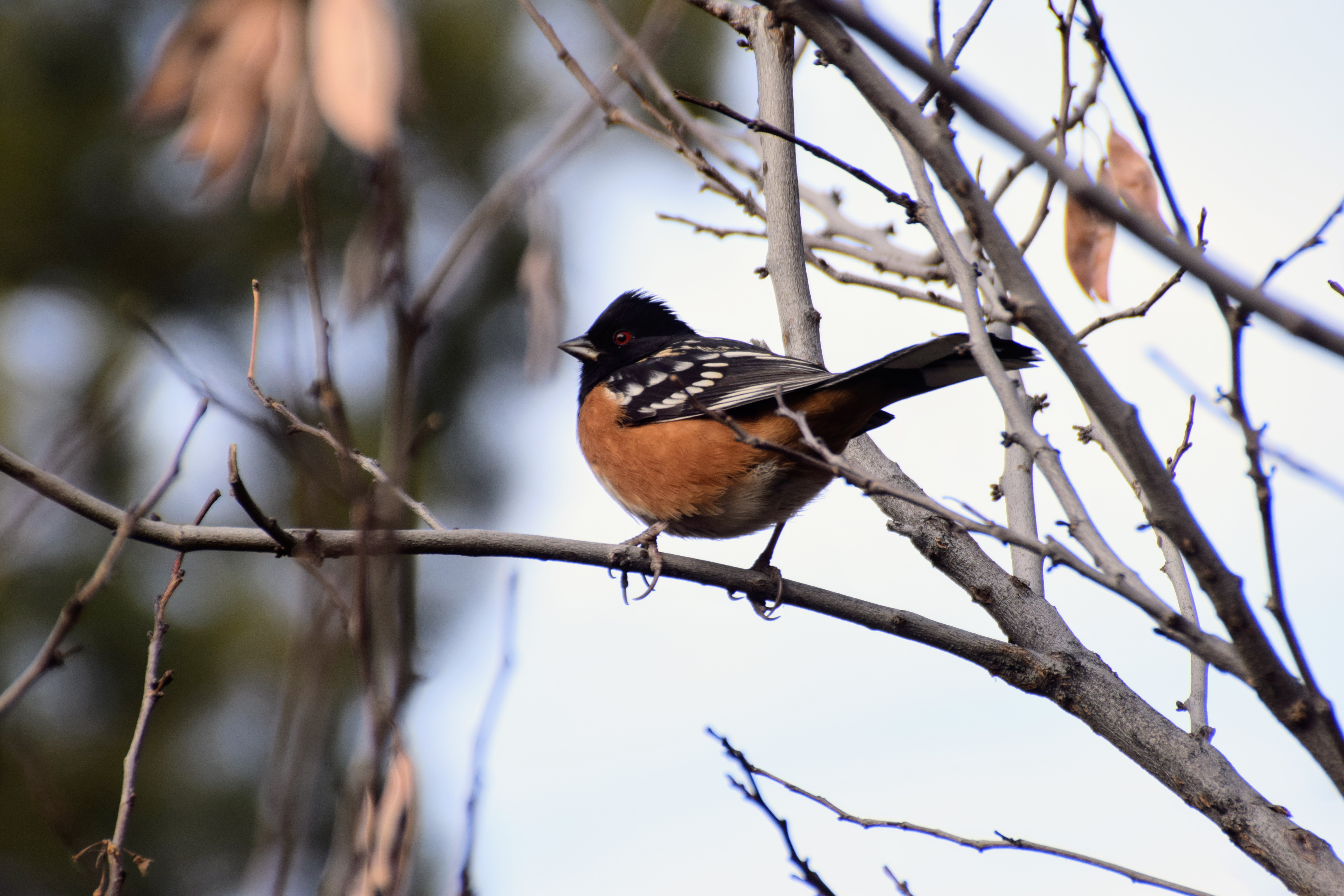
This is a Spotted Towhee, a species I haven’t been able to get a good photo of until now. Usually they’re very secretive, but this one just flew right up to us and stuck around long enough for a photoshoot.

This is a Townsend’s Solitaire, a relative of the American Robin. They happened to be in the orangutan enclosure, but could easily slip in and out between the bars.
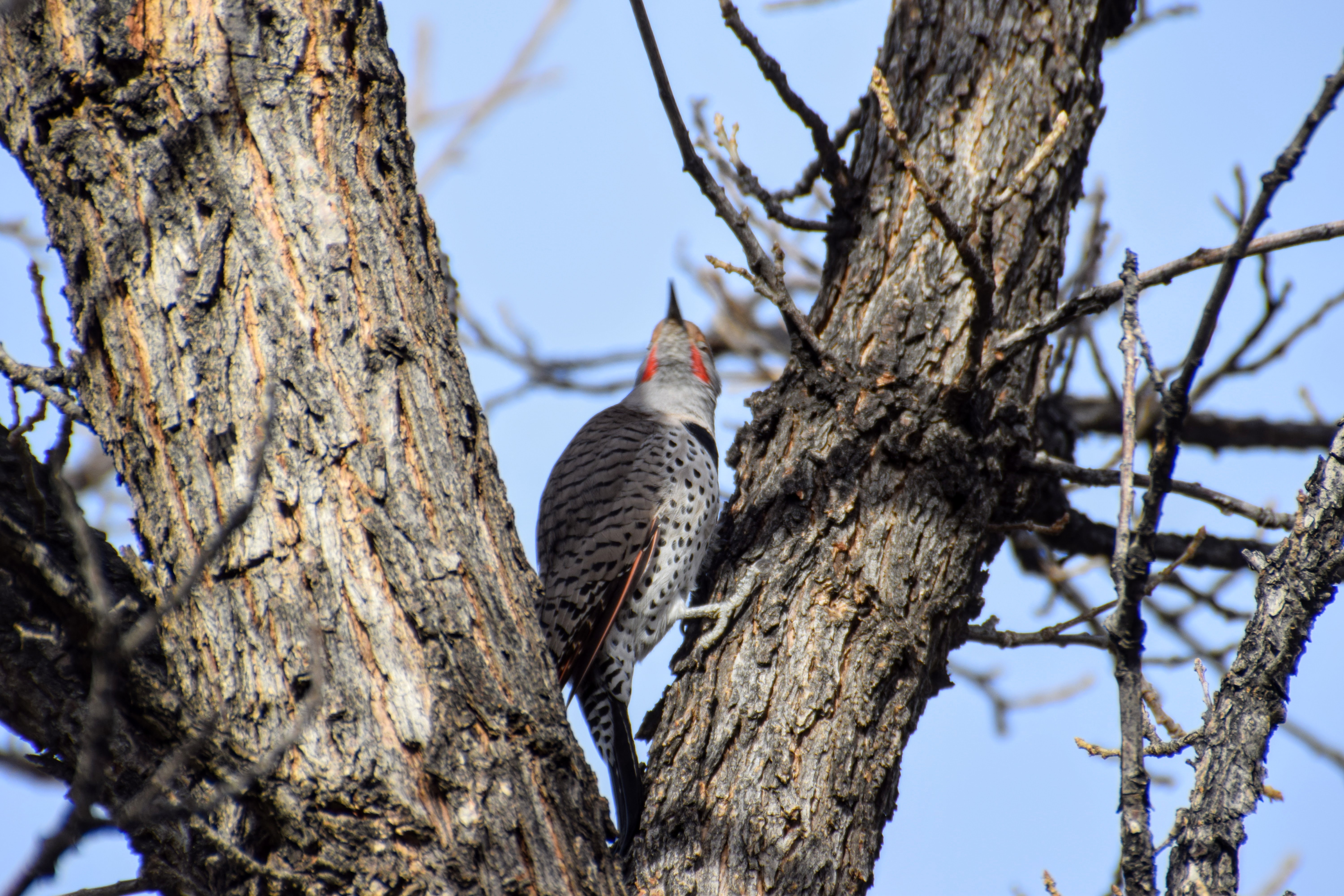
In Denver, they had the red-shafted variety of Northern Flicker.
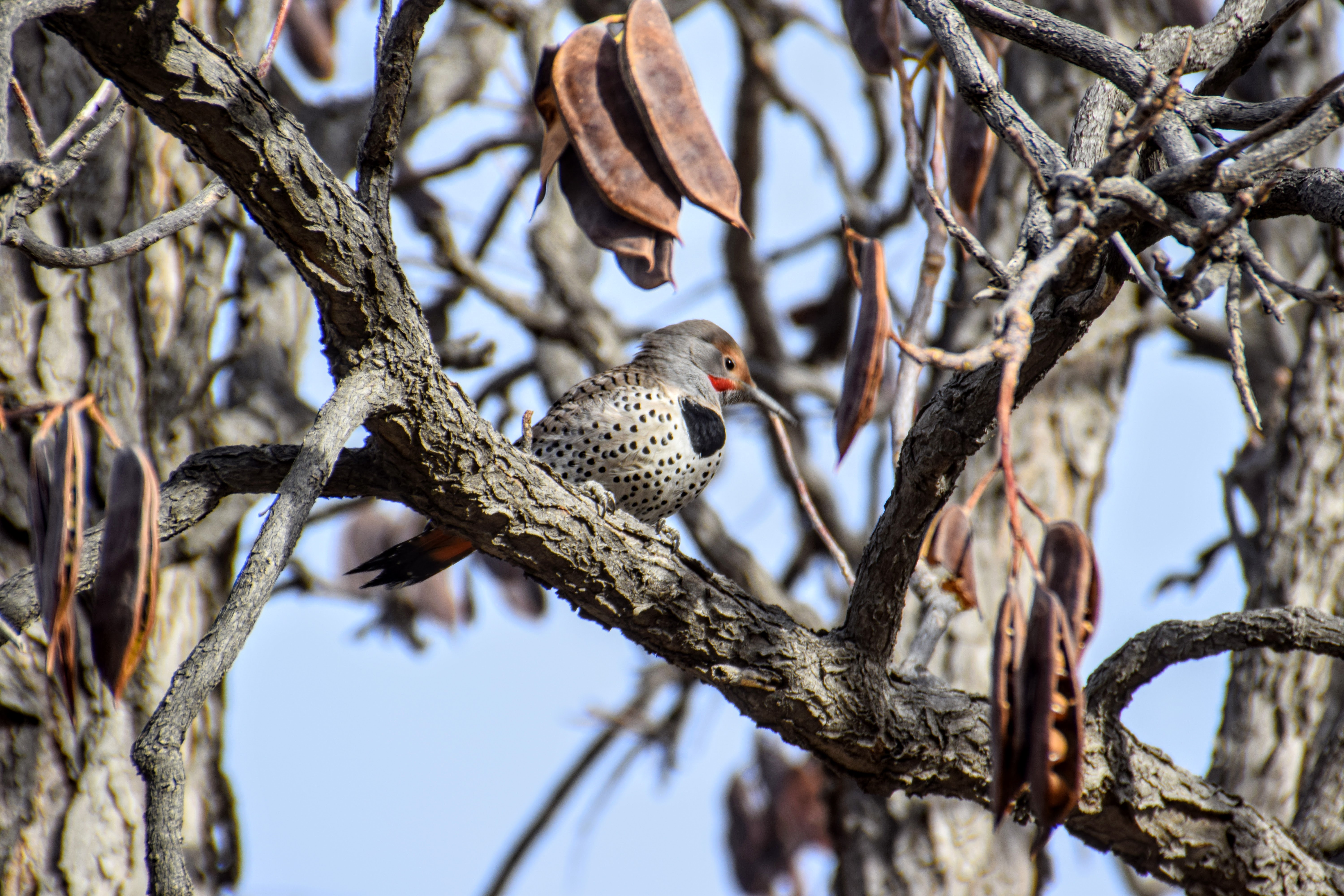
True to form, these ones were on a golf course.
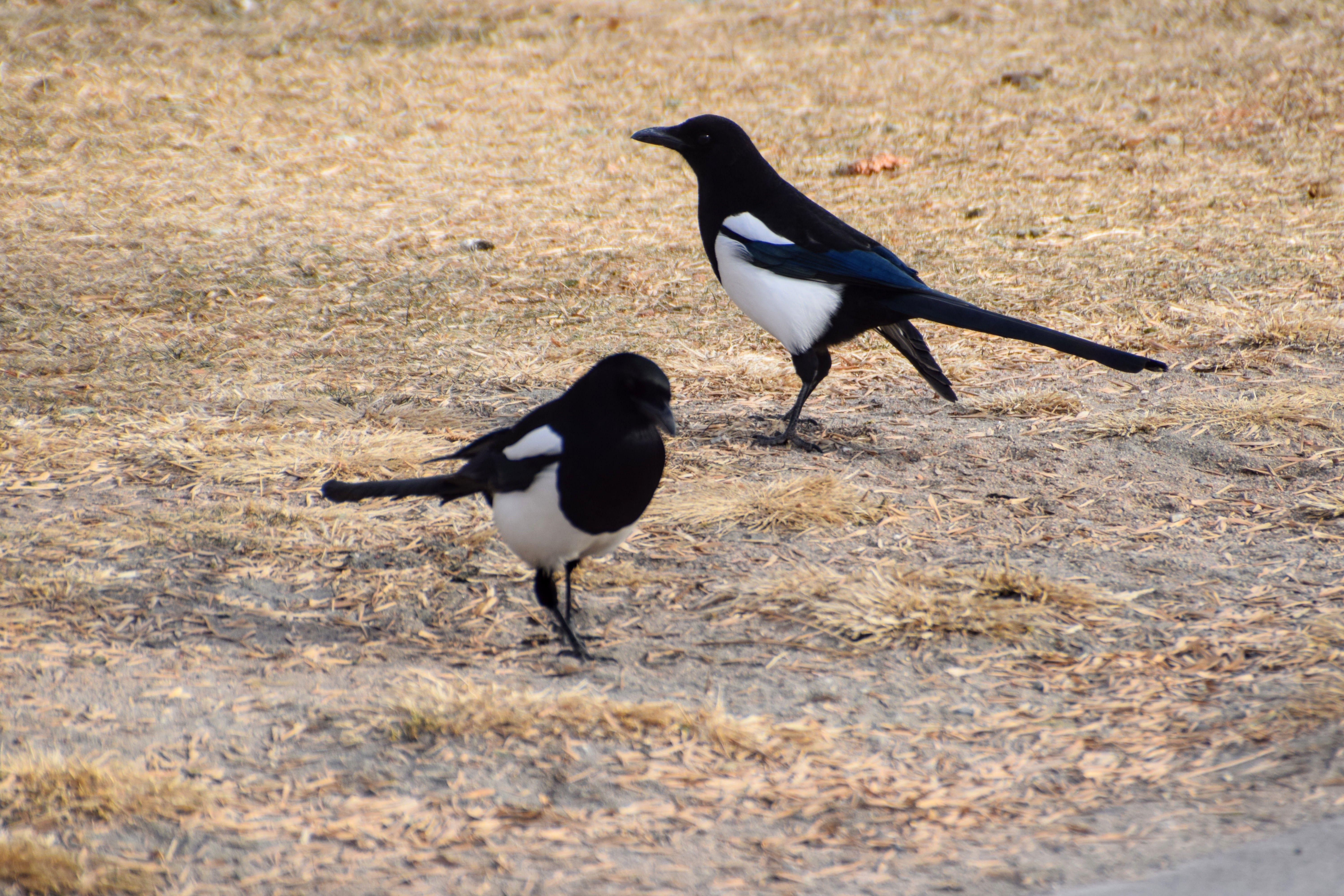
Here are some more Black-Billed Magpies, which are more common than crows in Denver. One of these had an injured wing that didn’t fold correctly.
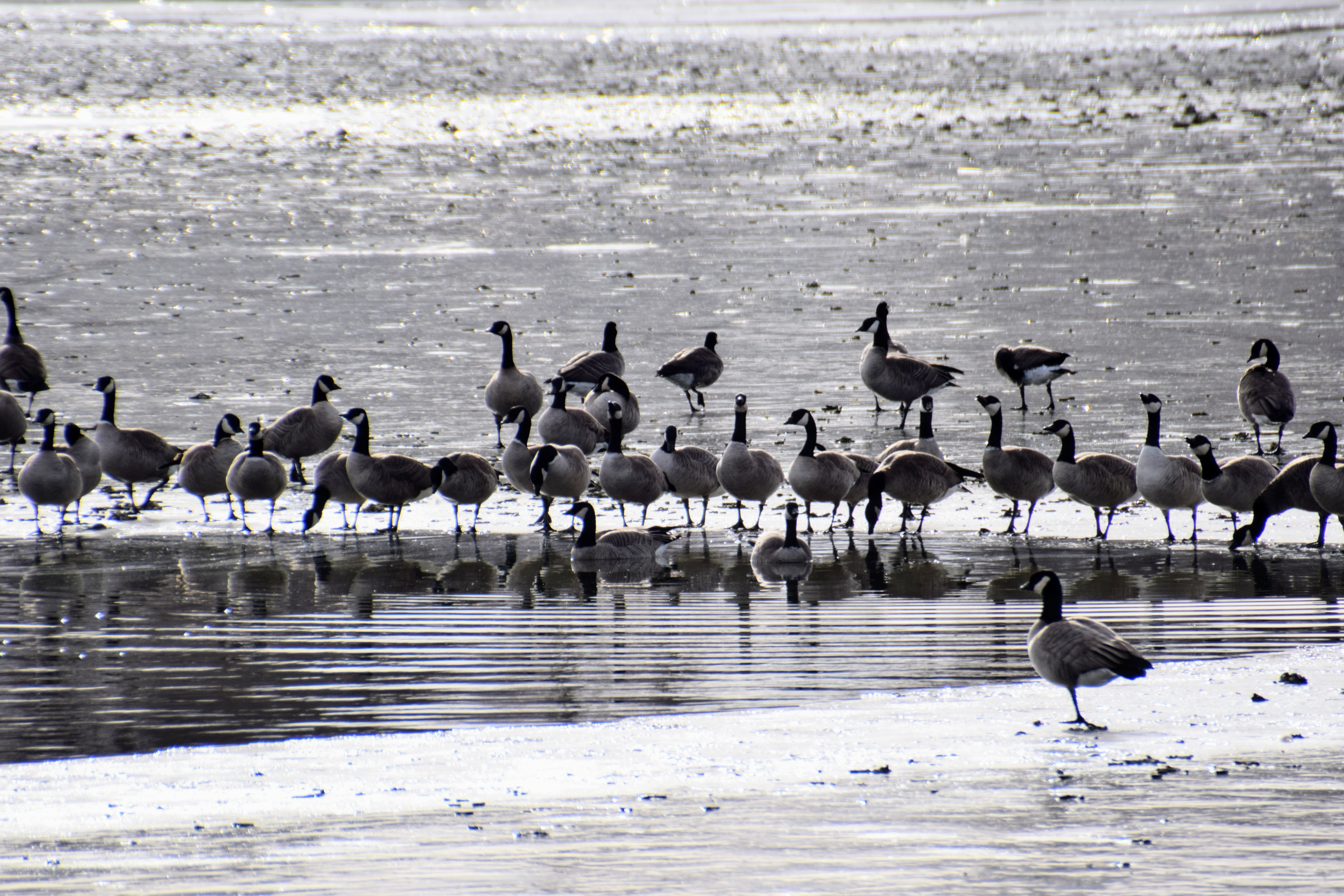
There were a ridiculous amount of Canada Geese in Denver. These are enjoying a small unfrozen patch in the middle of a frozen lake.
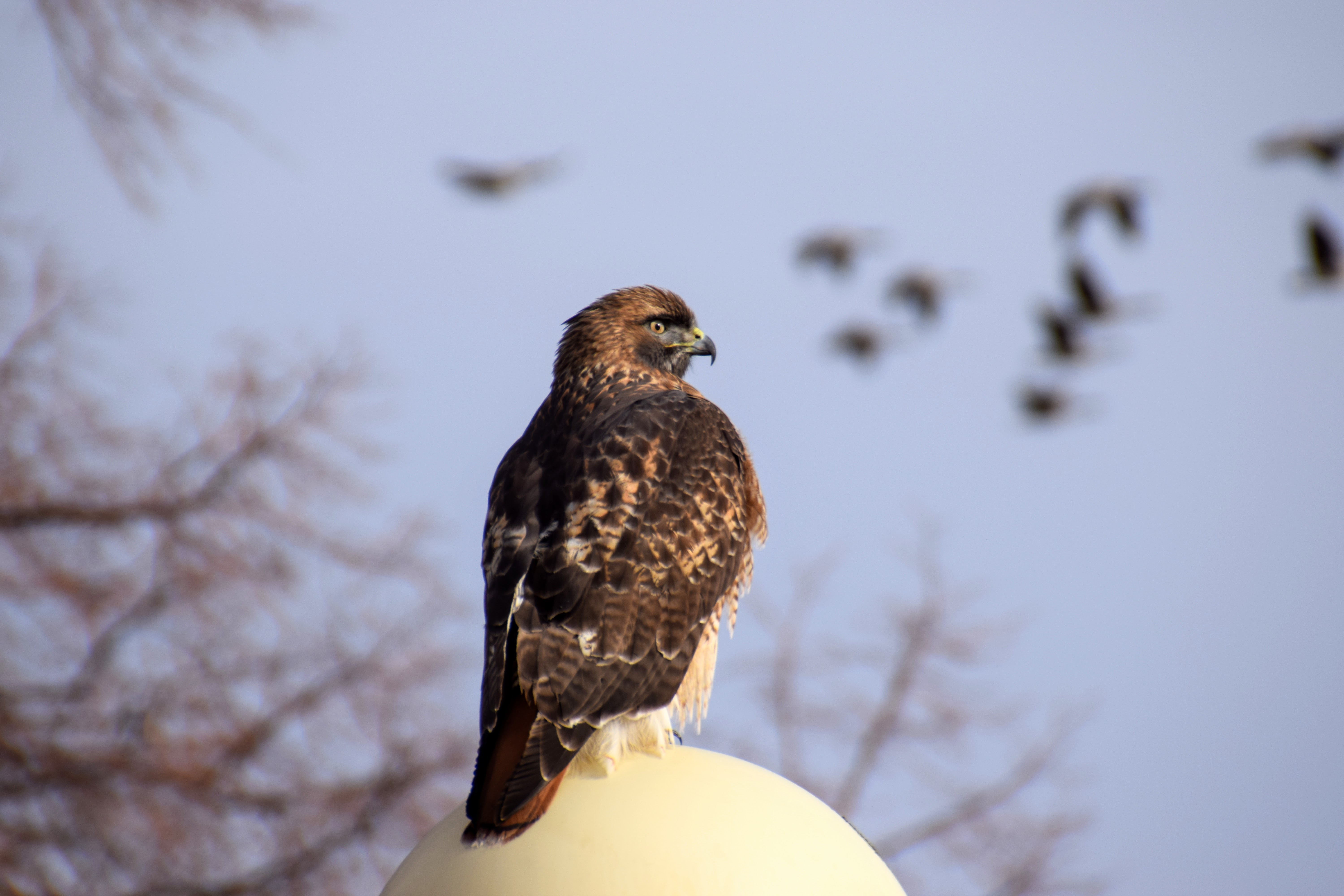
This Red-Tailed Hawk was sitting on a light post in a park and let us get very close. You can see the geese flying in the background.
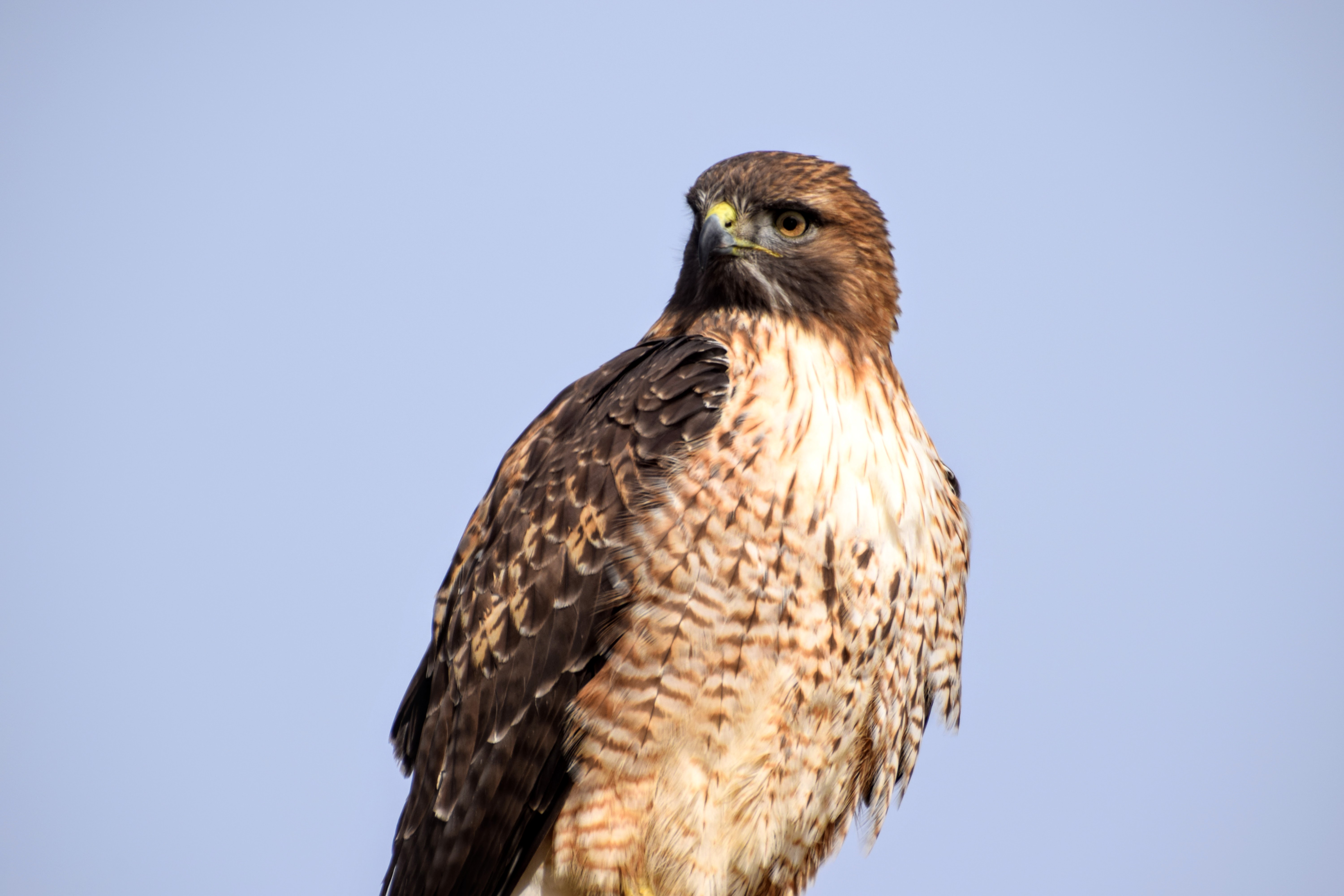
She’s so pretty!
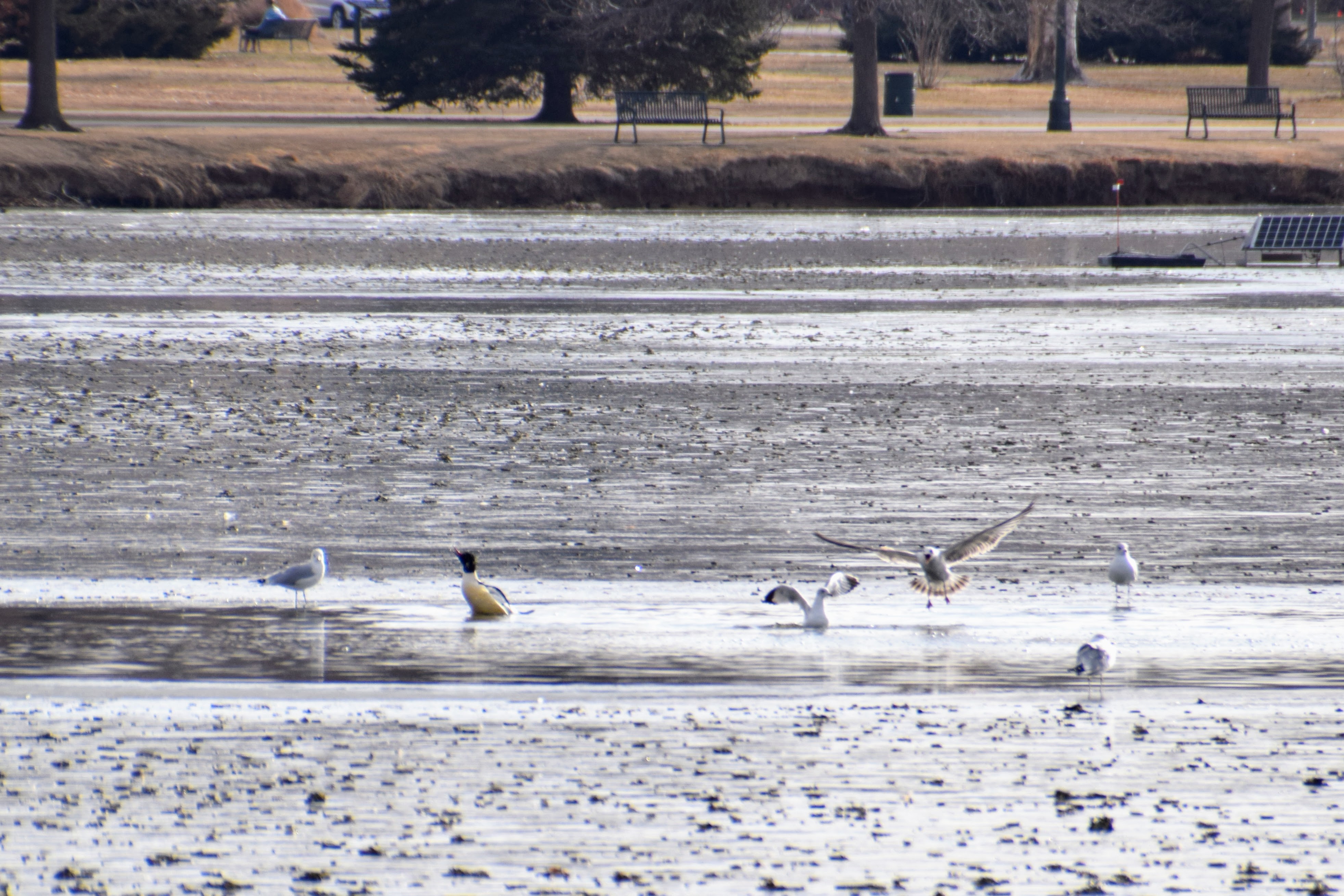
Here’s a Common Merganser (second from left) with a few Ring-Billed Gulls. They were also in the middle of the frozen lake, so I wasn’t able to get very close.
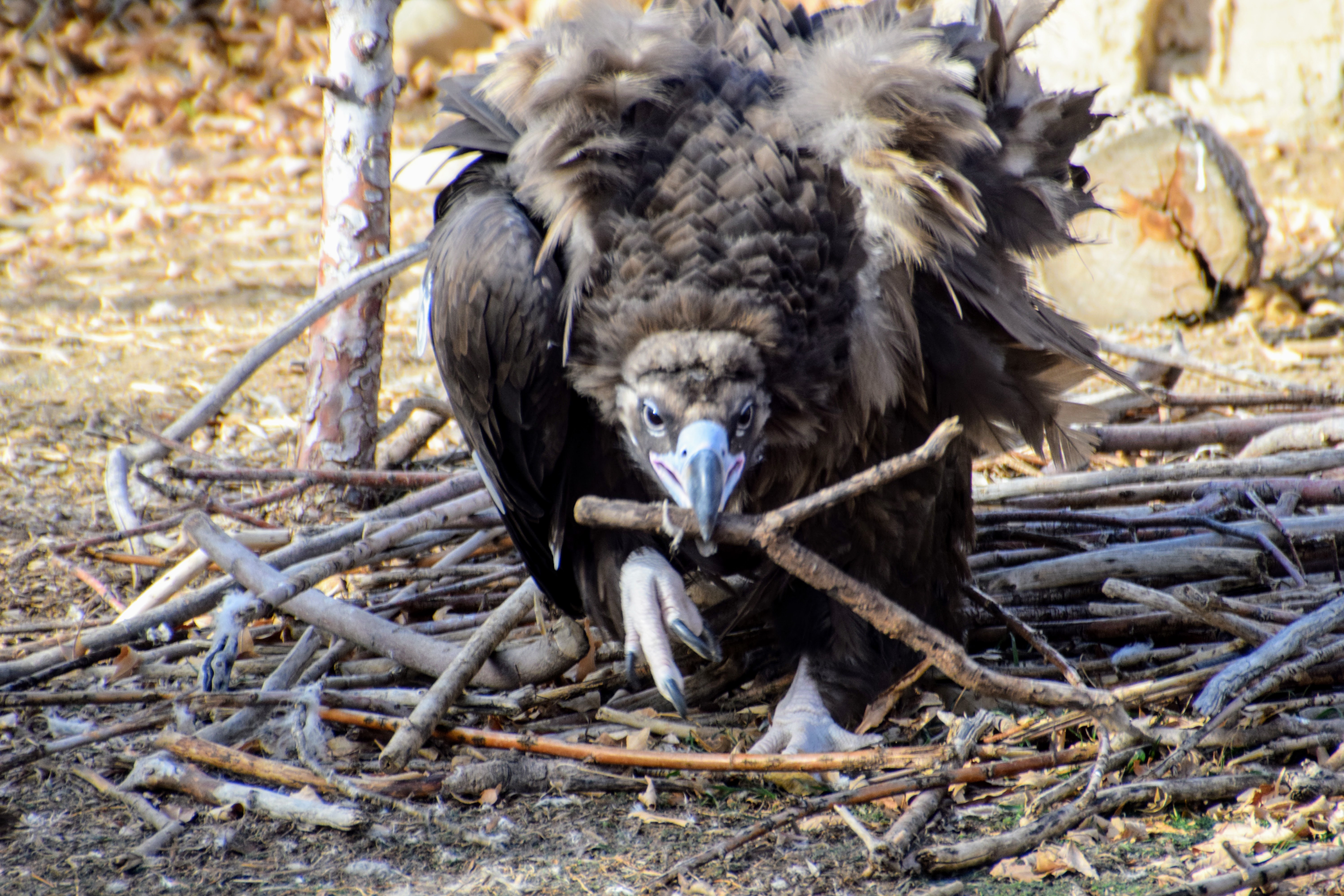
This is a Cinereous Vulture that was in the Denver Zoo. At up to 14 kg (31 lbs), they’re the largest of the Old World vultures. This one seemed to have a wing problem but didn’t let that stop him from lurching around enthusiastically and futzing with sticks.
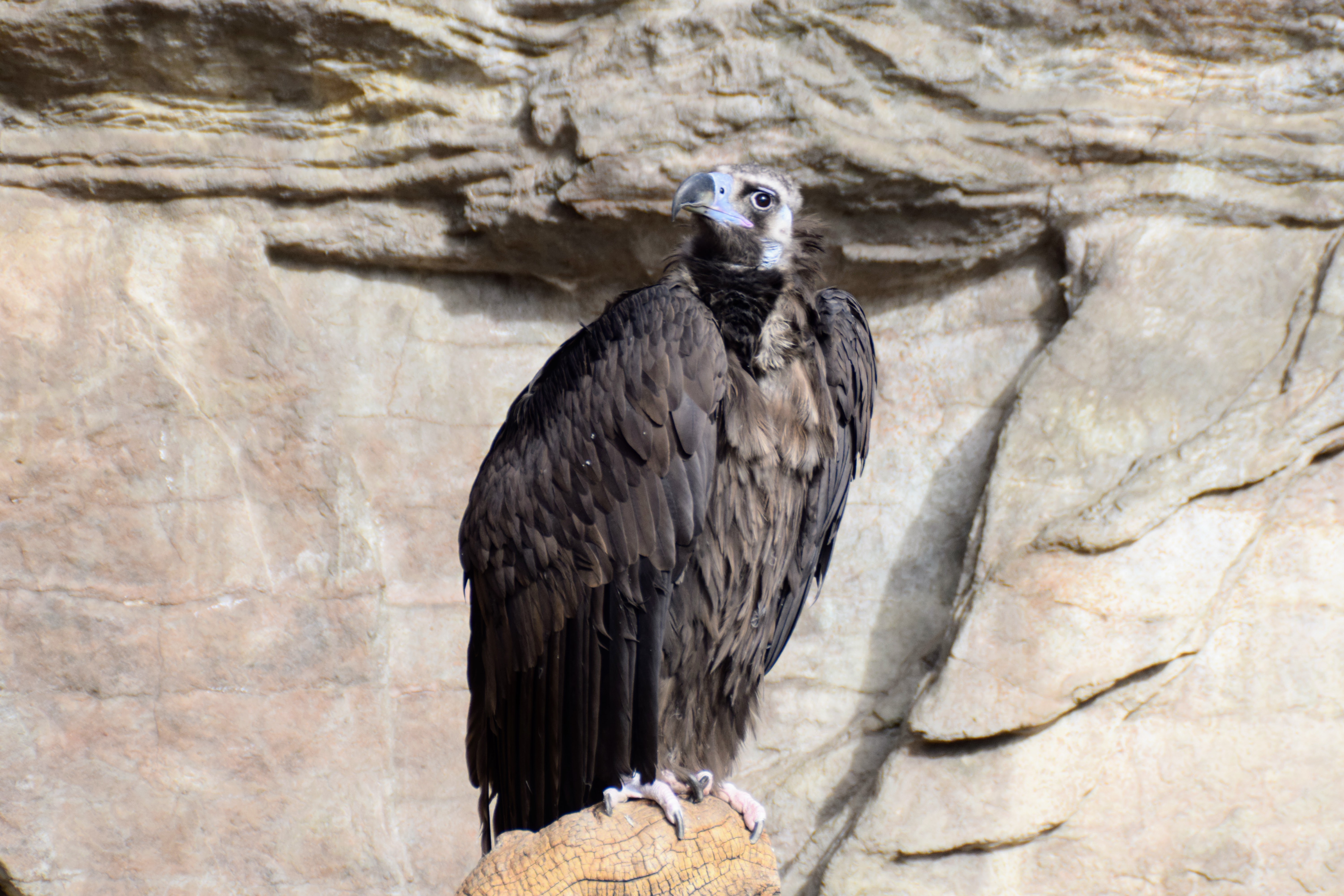
This Cinereous Vulture was in a different enclosure than the other two for some reason. It looks quite majestic and more like an eagle than a stereotypical vulture.
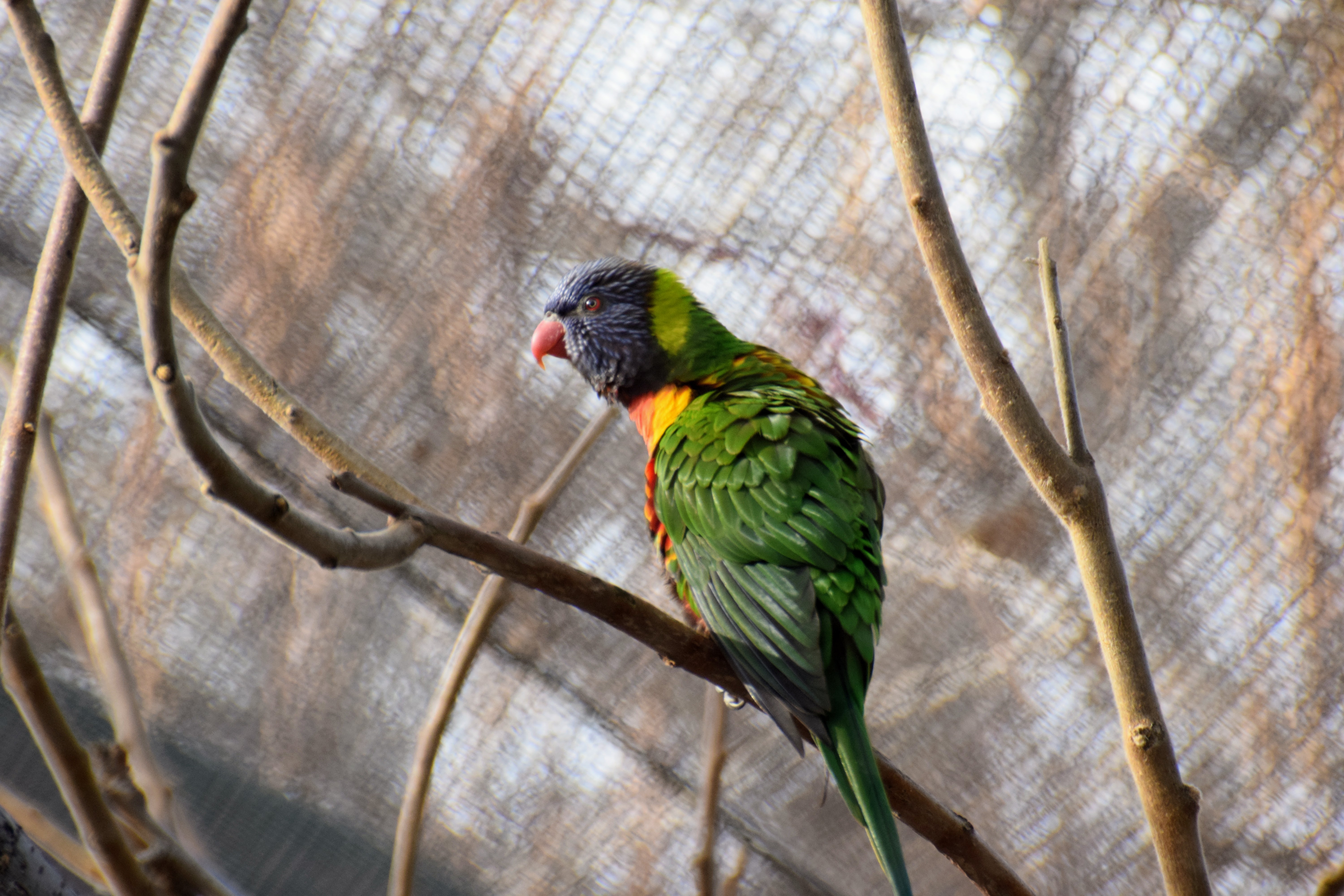
This is a Rainbow Lorikeet, a small Australian parrot that does not make a very good pet. Its excrement is liquid and apparently just gets everywhere.
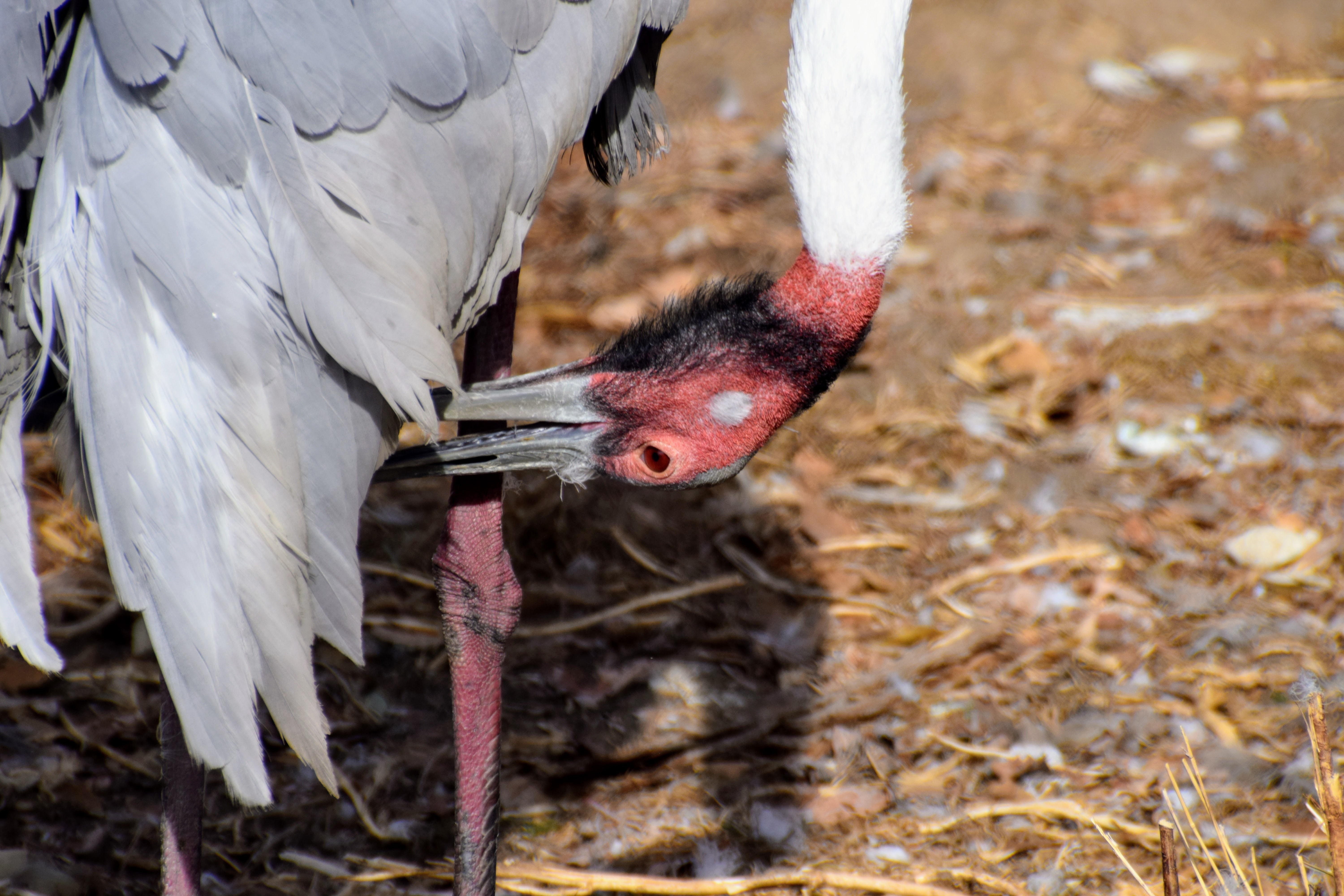
The Denver Zoo had lots of cranes, including this Sarus Crane, hailing from India.
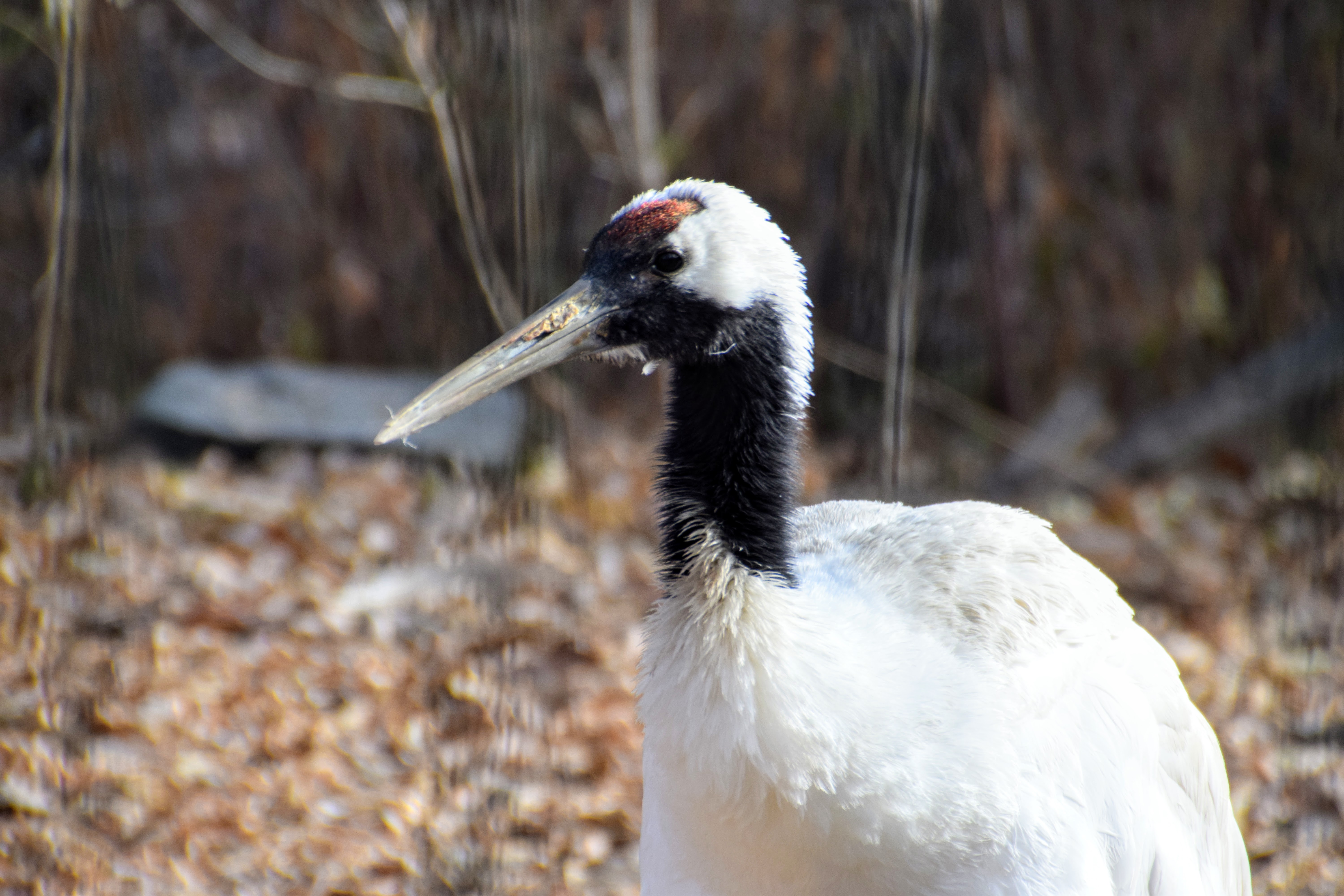
This is a Red-Crowned Crane, the type you see in medieval Japanese art.
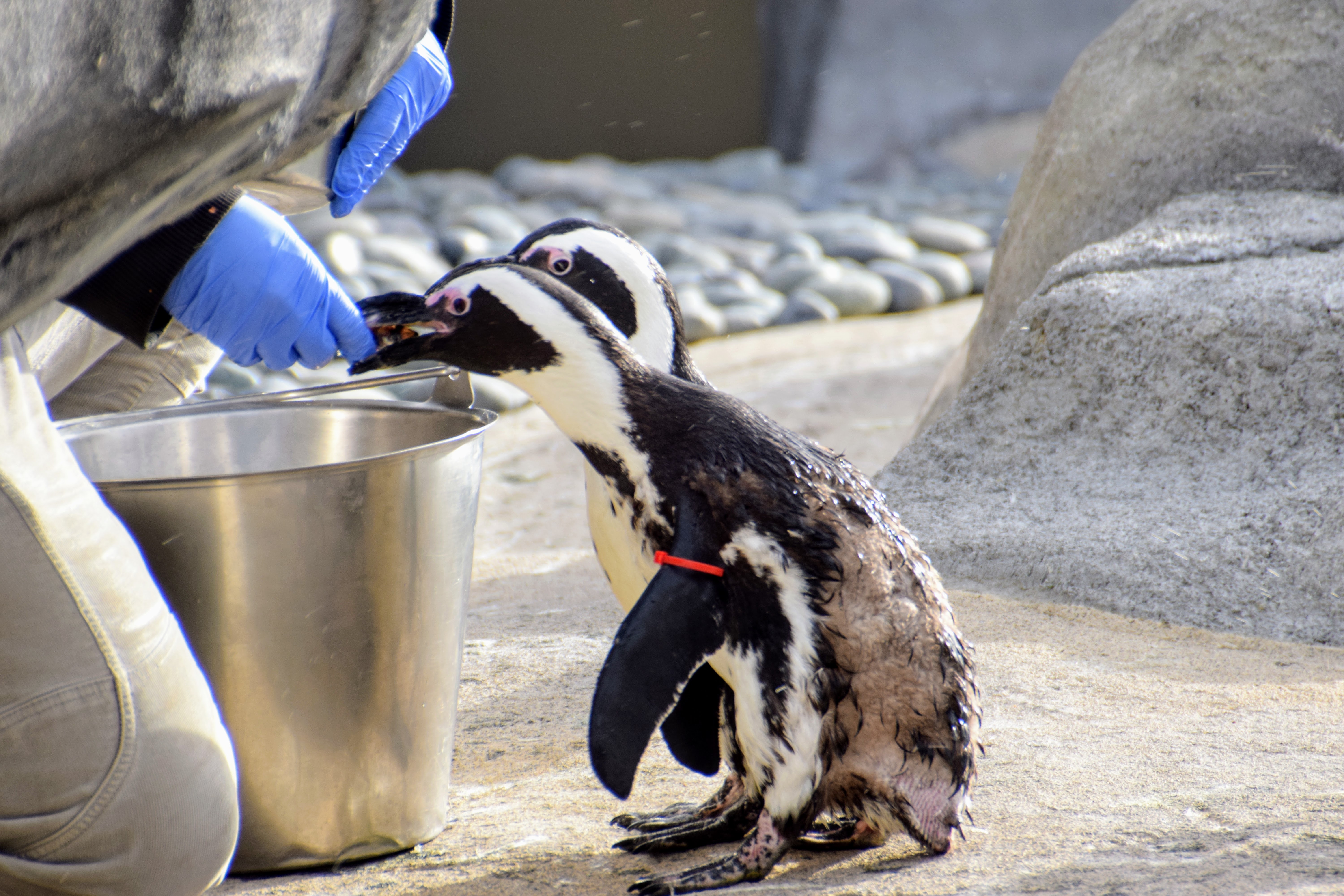
It was molting season for these African Penguins, so some of them looked extremely ratty. Penguins molt catastrophically, losing all their feathers at once, while most flighted birds molt sequentially, losing feathers symmetrically and one at a time in order to remain flighted.
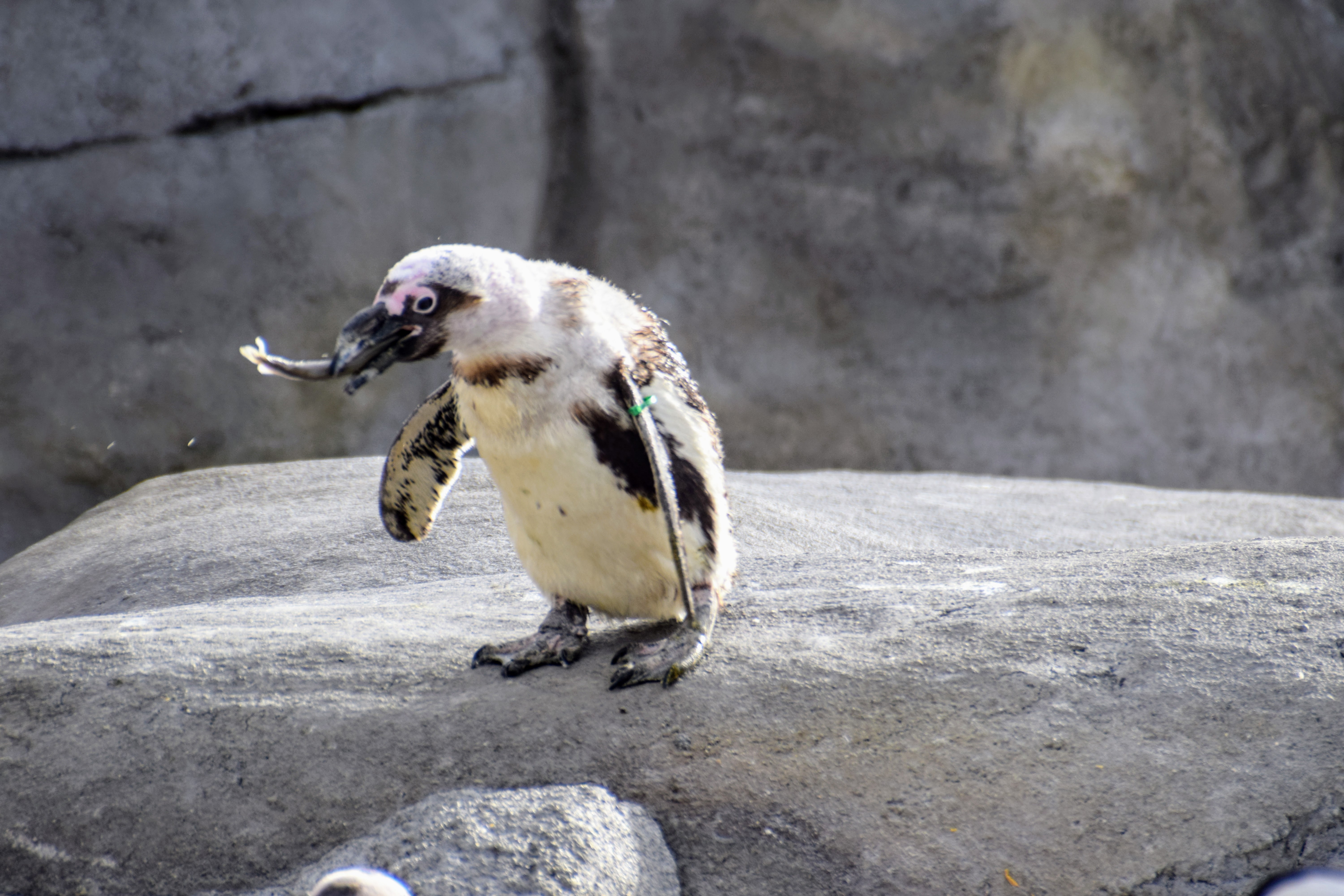
This penguin was the most ratty-looking and also the most hungry. He ate like 10 enormous fish back to back.
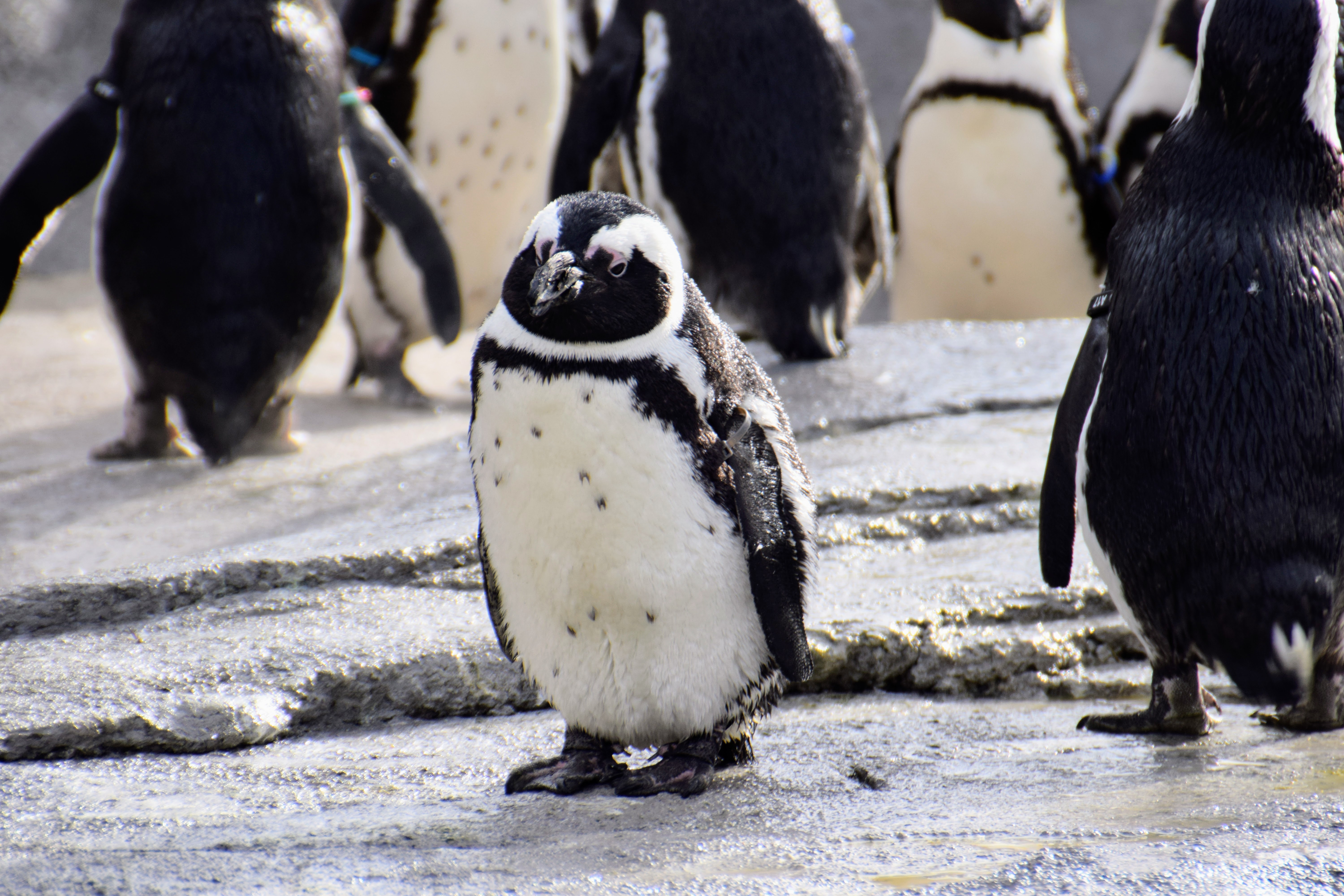
This penguin appeared to have special needs. He was just standing there, staring blankly while the rest were fed fish.
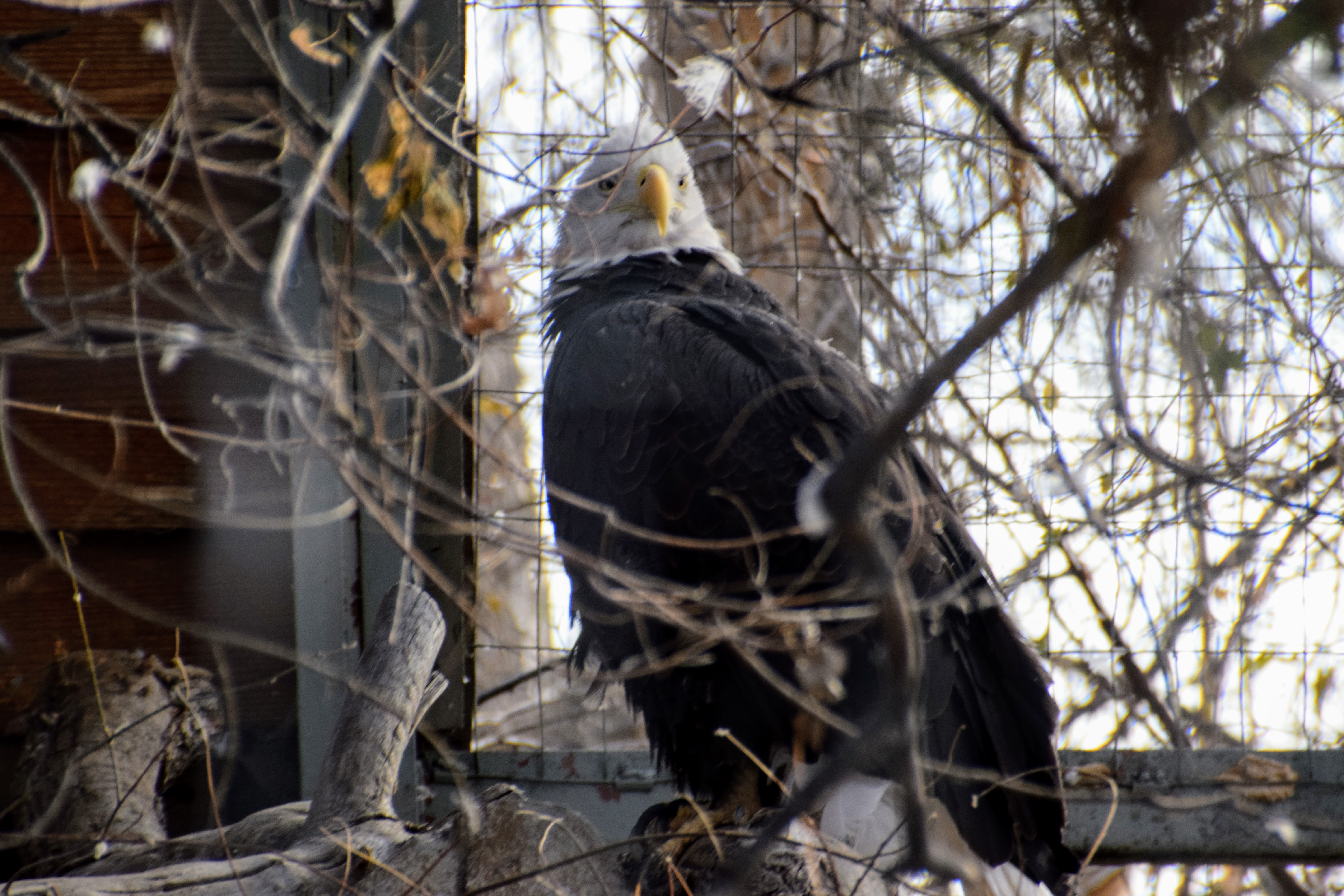
I still haven’t seen any Bald Eagles in the wild, even though they’re supposedly common.
Other Wildlife
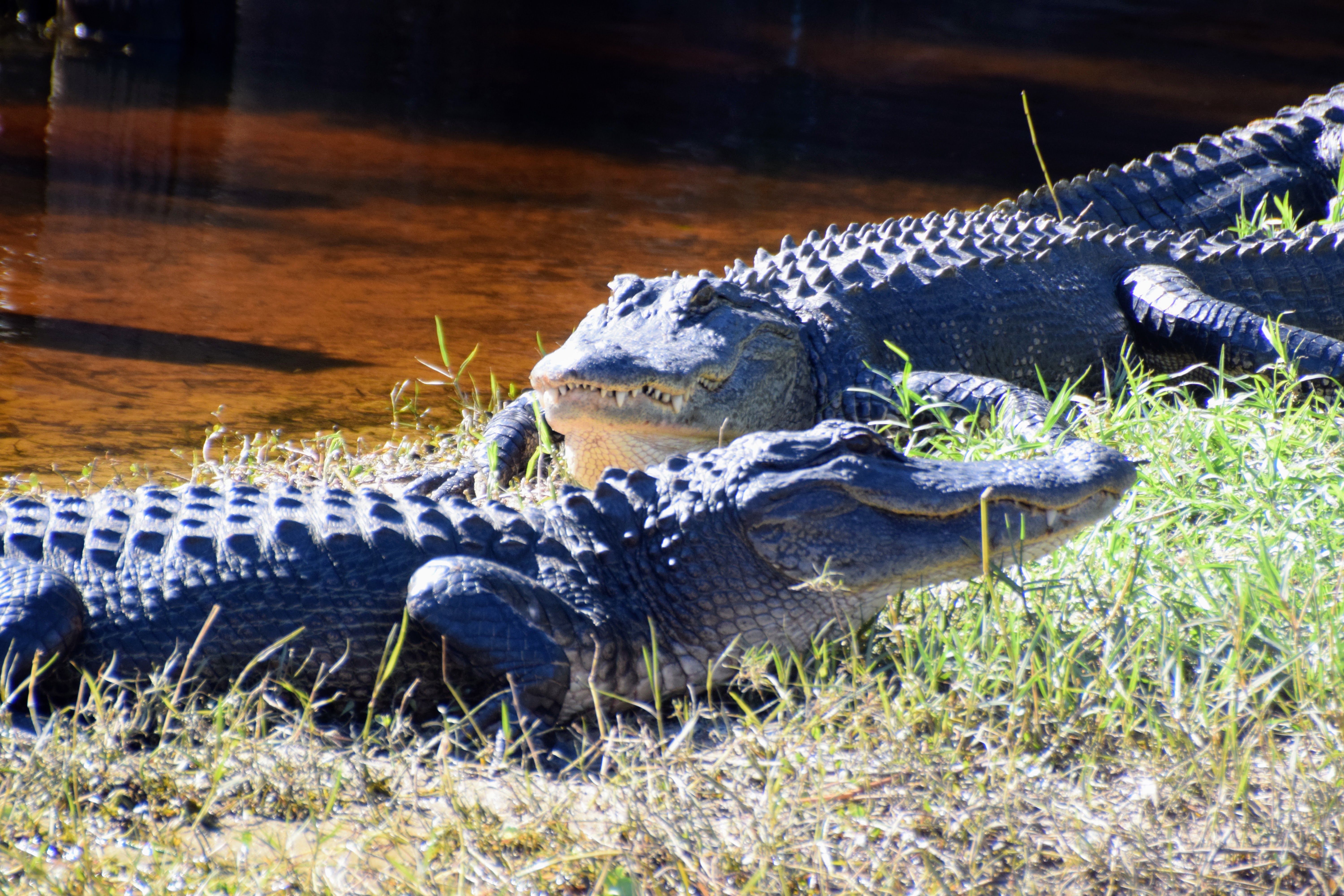
There were lots of American alligators in the nature preserve. These ones were over ten feet long! Check out those osteoderms on his back.
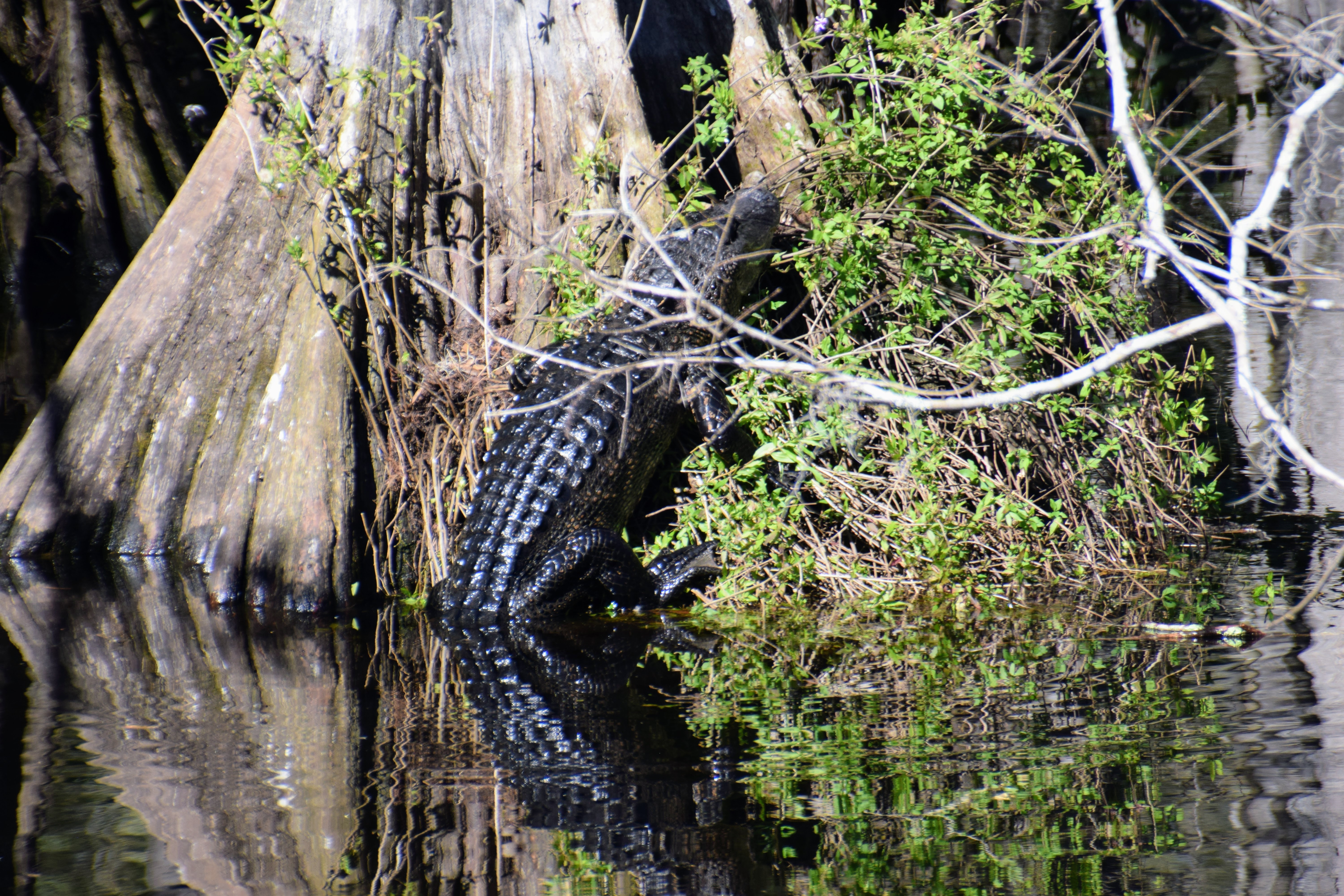
This gator was climbing a tree for some reason. Apparently a good way to estimate body length for American alligators is to estimate the snout-to-eye length in inches, and that’s how many feet long the gator is.
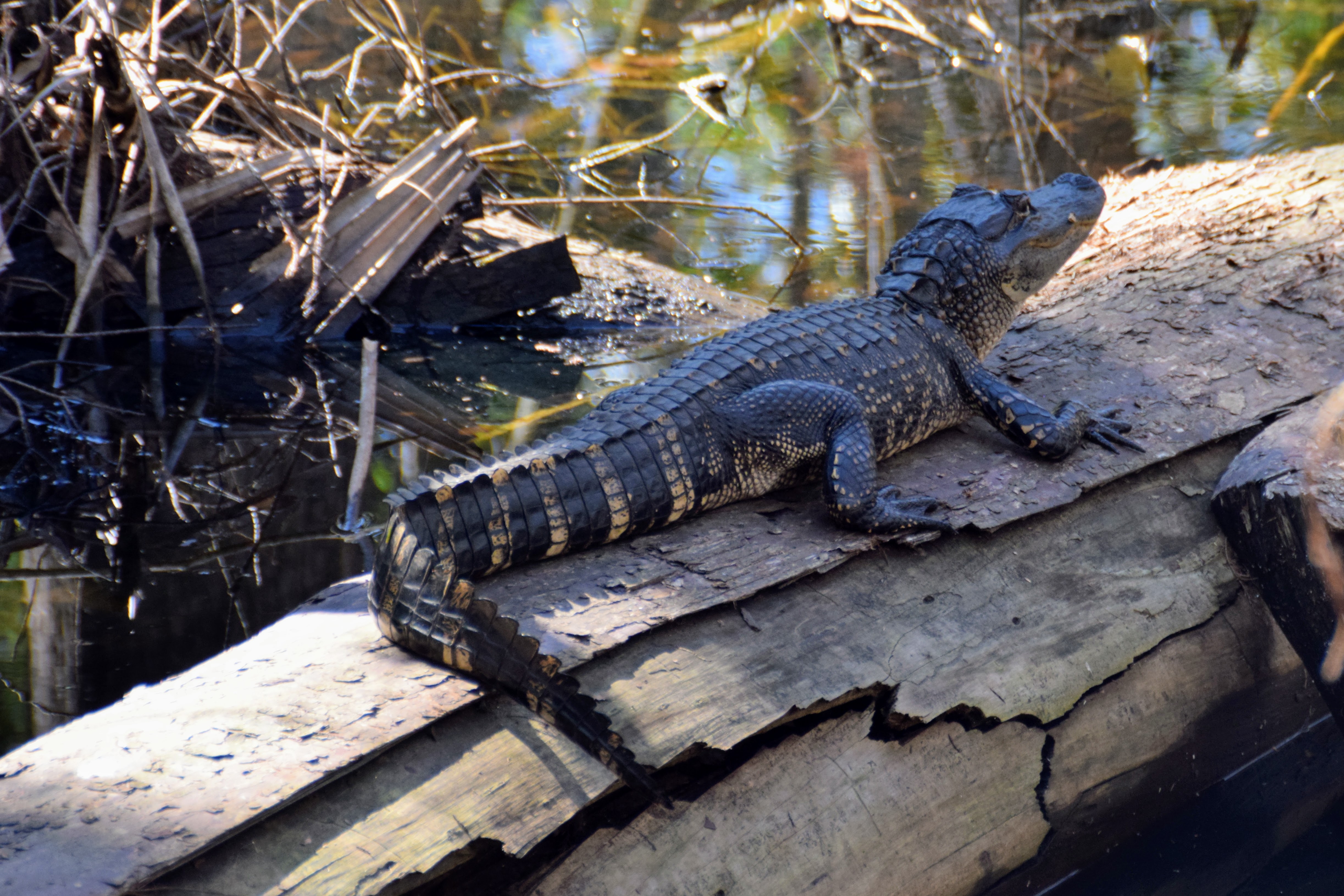
This is a three or four-foot-long baby alligator. The babies have yellow stripes on their tails, which they lose as adults.

This is a feral pig, which are invasive descendants of domestic pigs. They are very smart and cute though!
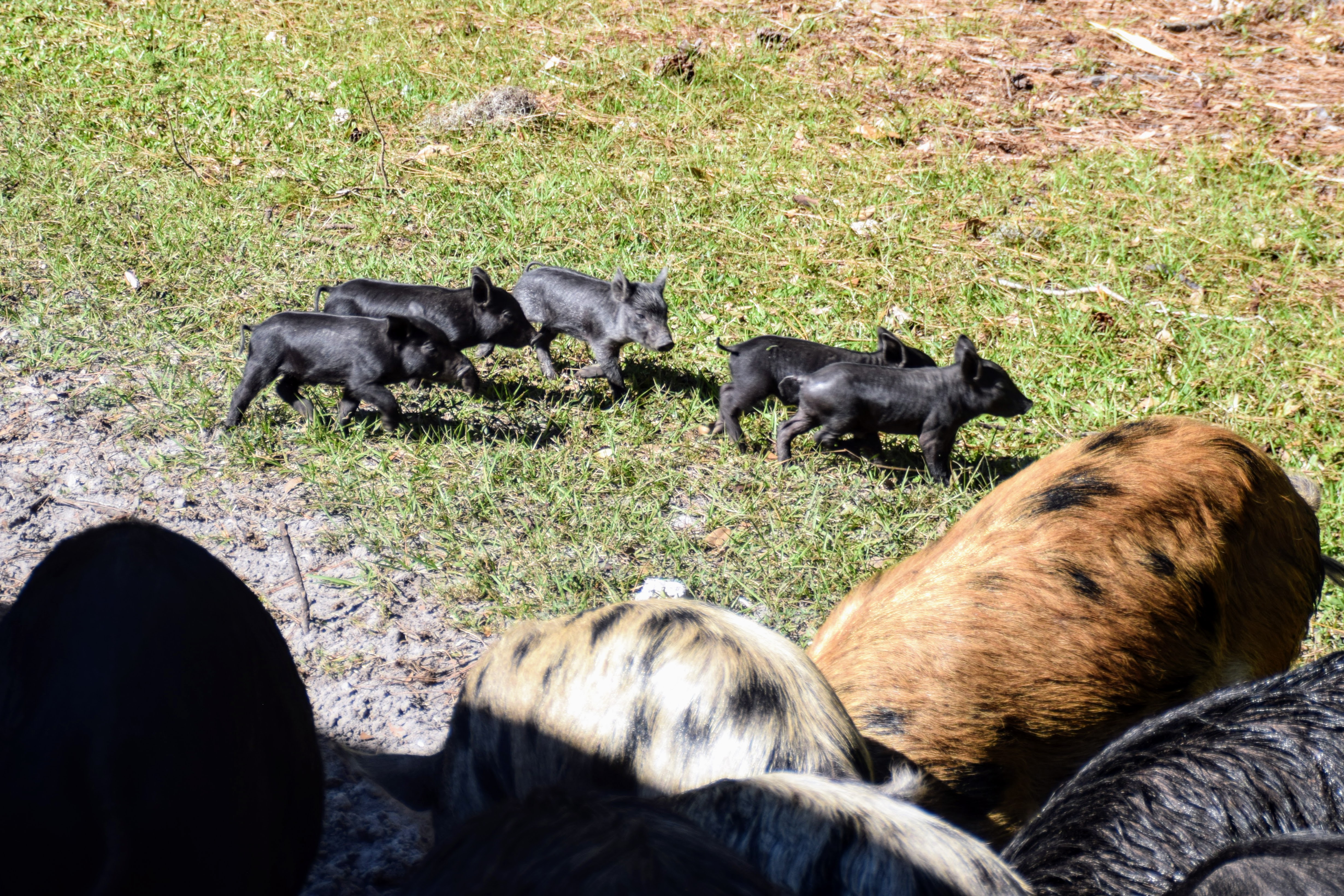
These are feral piglets! They were staying together in a clump and not mingling with the adults. They look so soft!
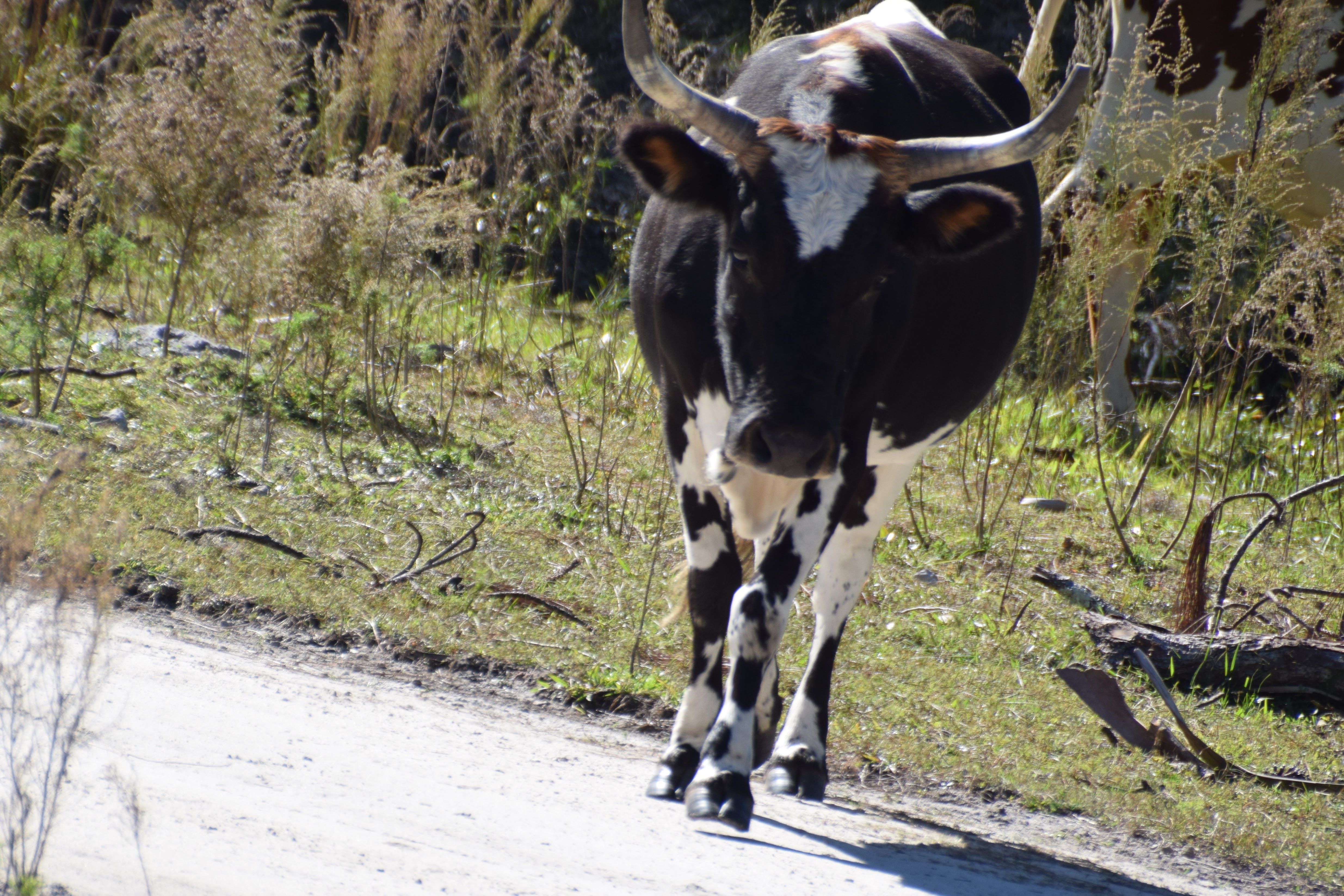
The nature preserve was also home to these “Cracker Cattle”, a breed not normally eaten or milked anymore. Even the lady cows had impressive horns. Most cows’ horns were cropped on the ends to keep them from injuring each other. The bull’s horns were super cropped.
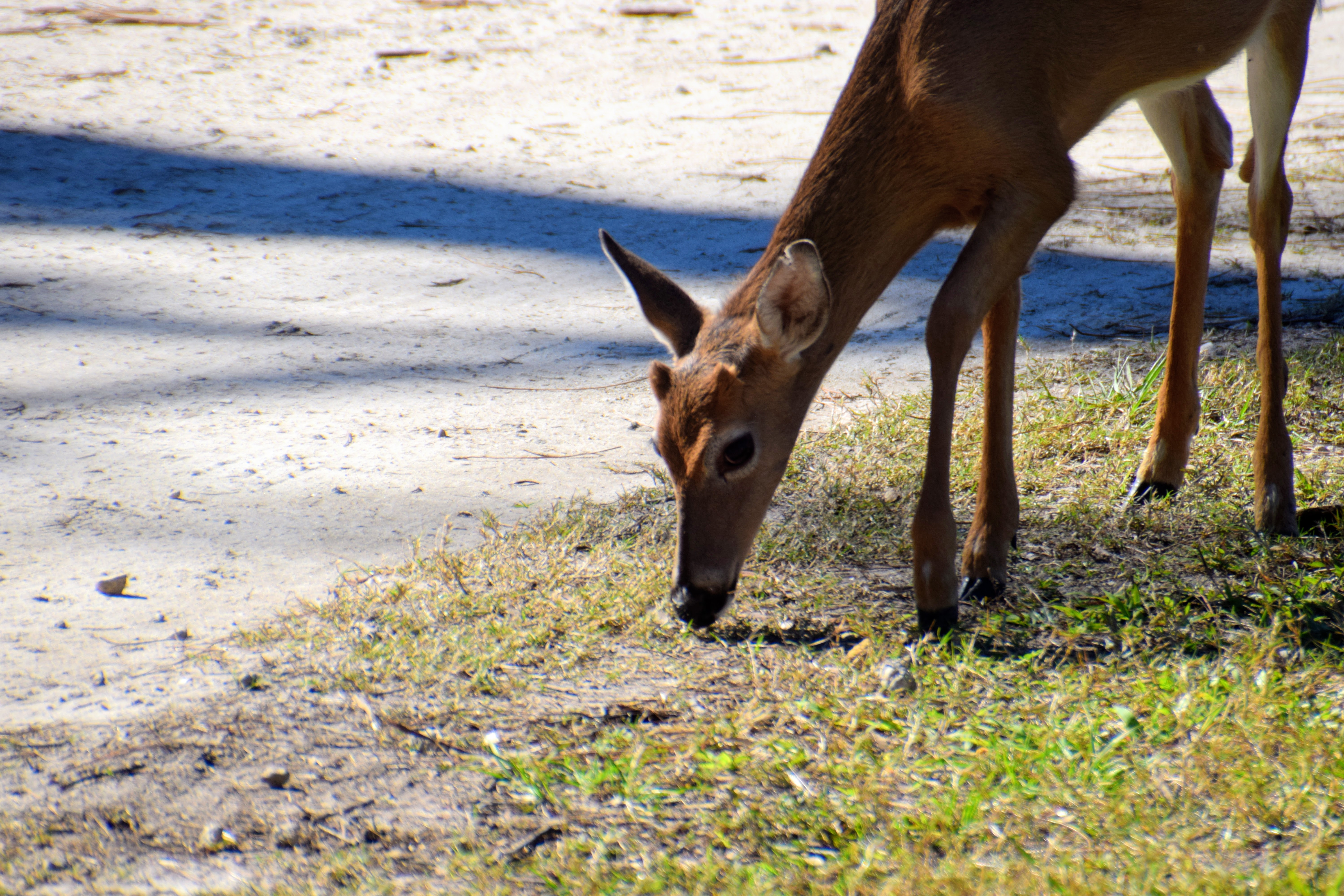
This is a white-tailed deer whose antlers are just beginning to poke out.
Other Zoo Animals
Just in case you were curious what you can see at the Denver Zoo, here are some of the mammals on exhibit.
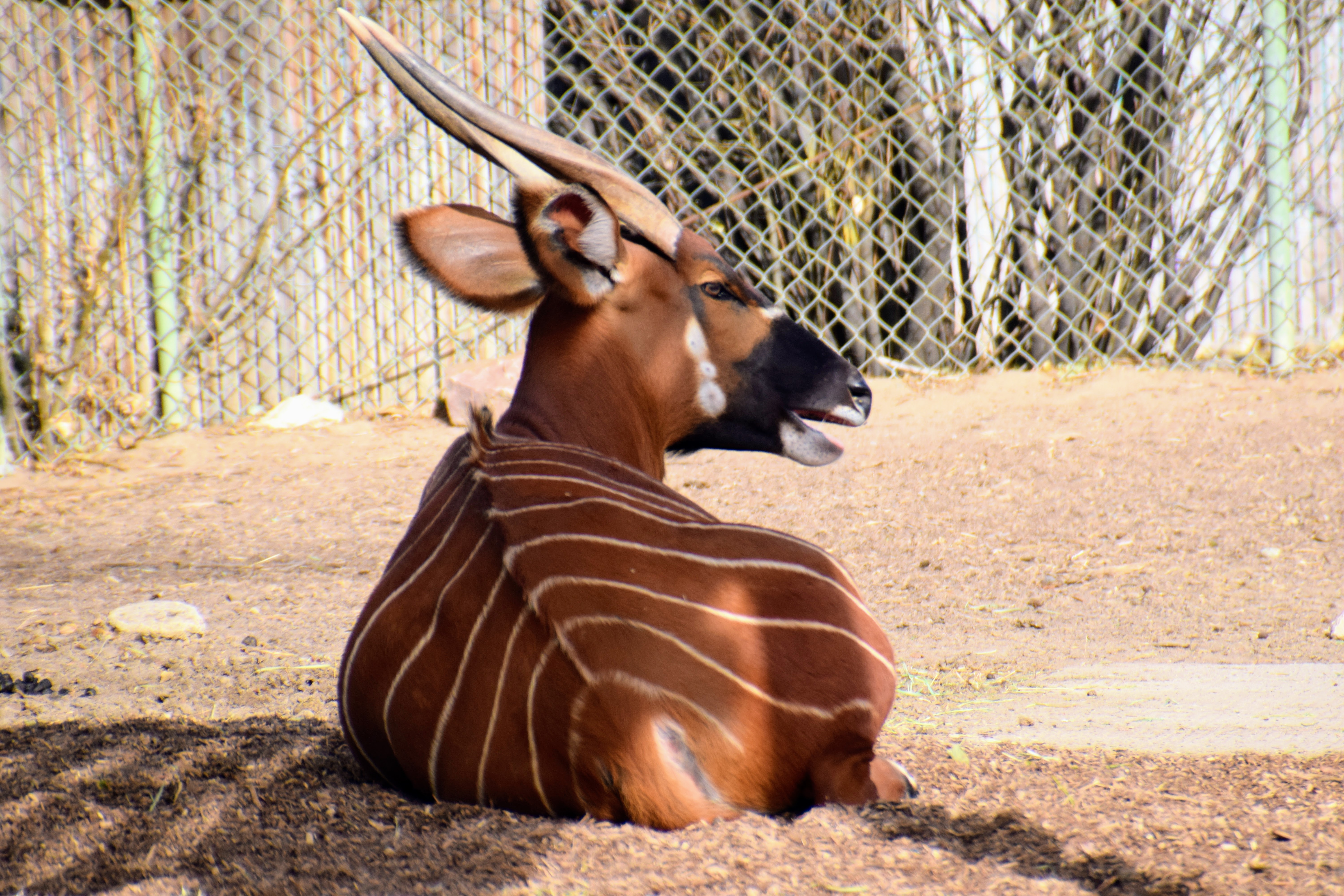
This is a bongo, a type of African antelope.
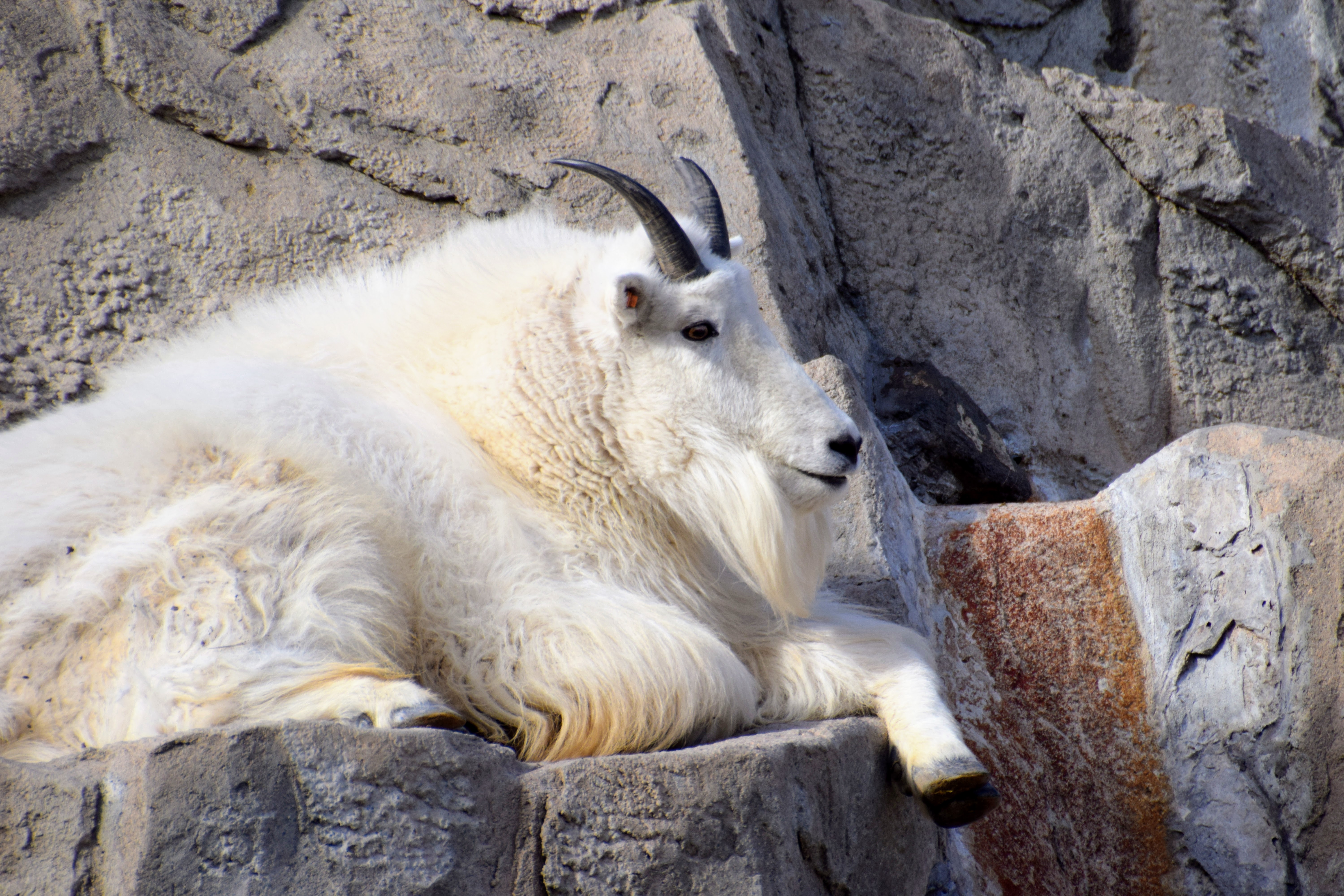
This is a Rocky Mountain goat. I didn’t know we had goats like this here!

There were two big male lions at the zoo, who were brothers. This one was making a funny face.
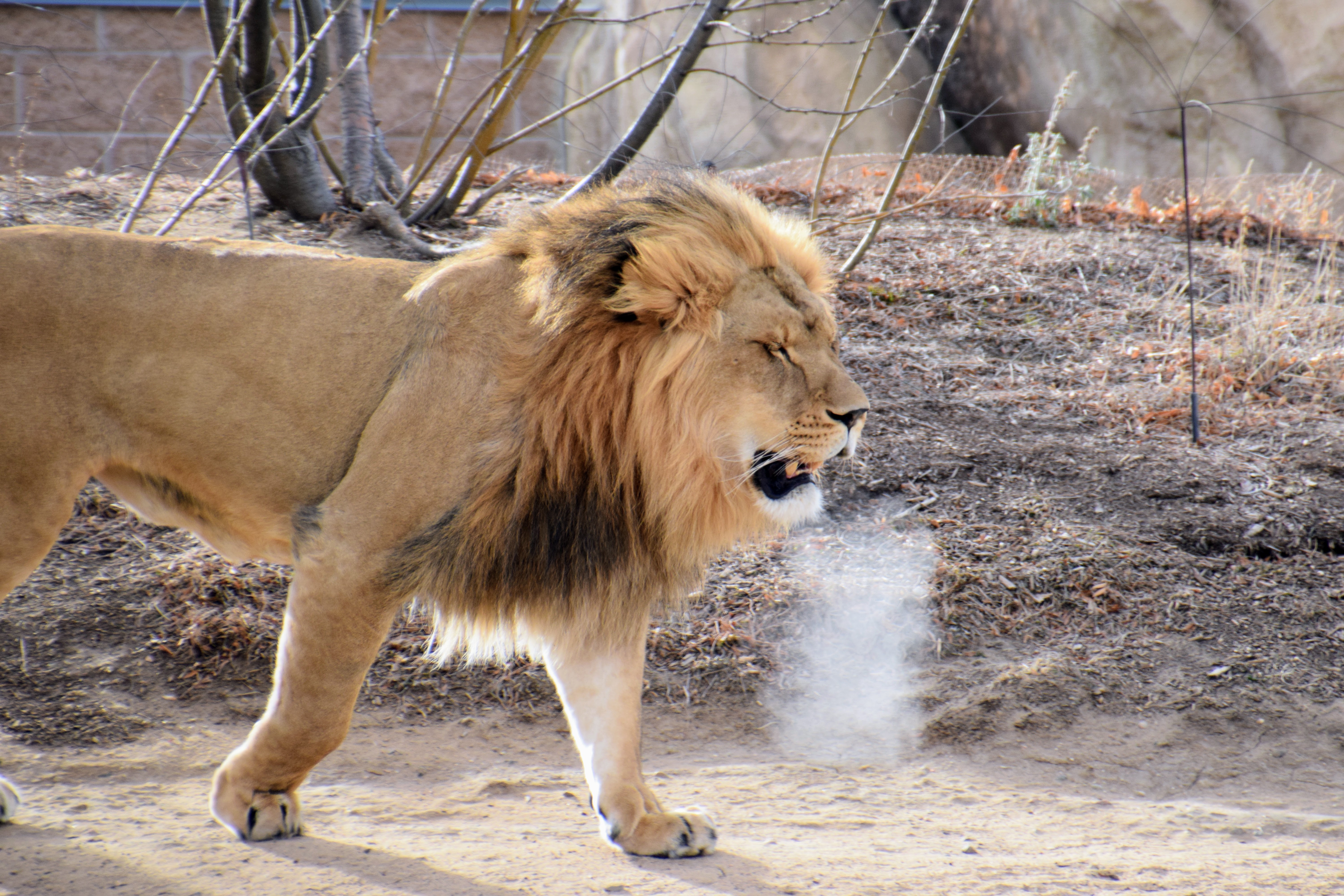
You can tell how cold it is from his breath!
